Prominent figures
Abbasgulu agha Bakikhanov
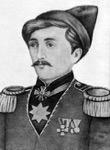
The historian, poet, writer, teacher, philosopher, scientist and encyclopaedist Abbasgulu agha Bakikhanov was born on June 21, 1794, in the village of Amirjan of the city of Baku. Bakikhanov was the son of the last khan of Baku, Mirza Muhammad II. In childhood he lived in the city of Guba where he received a very good education. He studied social and life sciences, humanities, and languages. He was fluent in Arabic, Turkish and Persian. In the process of learning the Russian language, he gets a job as a translator in the office of A. P. Yermolov, a representative of the Russian Empire in the Caucasus. Here he met with Mirza Shafi Vazeh, A. A.Bestuzhev (Marlinsky), A. Griboyedov, A. Chavchavadze, also with the Polish revolutionary T. L. Zablotsky. In 1828, he participated in the Russian-Iranian peace talks in Treaty of Turkmenchay. He was a colonel of the Russian tsarist army. A. Bakikhanov travels around Russia, Latvia, Lithuania and Poland. In Petersburg he met A. Pushkin. A. Bakikhanov, along with the service, is engaged in the scientific creativity.
The products of his poetry is “Tahzibul akhlaq”, “Golestan-e Eram”, “Qanun-e Qodsi”, “Ketab-e Asgariyyeh”, “Asrar al-Malakut” and other poetic stories, scientific and philosophical studies. The “Golestan-e Eram” is one of the major scientific studies of A. Bakikhanov (written in Persian) and dedicated to the history of Shirvan and Dagestan from ancient times to the Gulustani peace treaty (October 12, 1813). The Bakikhanov’s first fiction book was a “Ketab-e Asgariyyeh” - a love story of the two young people, pursued by the fanatic society in which they lived. A. Bakikhanov translated into Azerbaijani the fable of I. A. Krylov “The Donkey and the Nightingale”. The works of A. Bakikhanov were translated into the several languages.
Abbasgulu agha Bakikhanov died in 1847 in the city of Mecca in Saudi Arabia during a pilgrimage and was buried there. In the village of Amirjan was erected his monument, a number of scientific and educational institutions of the cities and villages of Azerbaijan named after him.
Abdulkarim Alizadeh

Alizadeh Abdulkarim Ali oglu was born in Bilgah village of Baku on January 11, 1906.
In 1927 A. Alizadeh was sent to the Leningrad Oriental Institute and in 1930 graduated from it. In 1935 he received the PhD degree. In the years 1935-1941 he worked at the Institute of Oriental Studies of the Academy of Sciences of the USSR, simultaneously at the Leningrad Oriental Institute and the Leningrad State University A. Alizadeh in 1954 received the degree of Doctor of Historical Sciences, and a year later was elected an active member of the Azerbaijan Academy of Sciences. In 1941-1963 Abdulkarim Alizadeh worked as the chief research officer of the Azerbaijan branch of the Institute of History of the Academy of Sciences of the USSR, head of the department of the history of the ancient and middle ages of the Institute of History and Philosophy, academician-secretary of the Social Sciences Department of the Academy of Sciences of Azerbaijan. In 1958-1963 was the 1st director of the Institute of Oriental Studies of the Academy of Sciences of Azerbaijan. From 1963 until the end of his life, A. Alizadeh headed the Textology and Publishing Department of the Institute of Oriental Studies of the Azerbaijan Academy of Sciences.
Academician A. Alizadeh jointly with Petrushevski laid the foundation for the history of Azerbaijan in the Middle Ages. He investigated the history of Azerbaijan and the countries of the Middle East of the Seljuk and Mongolian periods. Published in 1956 by the scientist “Socio-economic and political history of Azerbaijan in the 13th-14th centuries” (in Russian) a monograph and more than 60 scientific works of the scientist were of great importance in studying the medieval history of Azerbaijan and neighboring eastern countries. Under his leadership, dozens of candidates and doctors of science were defended.
A. Alizadeh was awarded the State Prize of the USSR (1948), honorary title “Honored Worker of Science” (1960), State Prize of Azerbaijan USSR (1978). He was awarded the Order of the Red Banner, “For the Defense of the Caucasus”, “For Valiant Labor in the Years of the Great Patriotic War”, “Honorary Badge”.
Alizadeh Abdulkarim died on December 3, 1979 in Baku.
Afrasiyab Badalbeyli

Azerbaijani composer, conductor, musicologist, publicist and People’s Artist of the Azerbaijan SSR Afrasiyab Badalbey oglu Badalbeyli was born on 19 April, 1907, in Baku. In 1924-1930, he studied at the faculty of Oriental Languages at the Azerbaijan State University in the specialty of Orientalist-philologist. In 1930, A. Badalbeyli began working as a conductor at the Azerbaijan Opera and Ballet Theater named after M. F. Akhundov. From 1932 to 1933, he studied at the Moscow Conservatory in the class of conducting under K. S. Saradzhev. In the autumn of 1934 A. Badalbeyli went to Leningrad (now St. Petersburg) and entered Music Training College attached to Leningrad State Conservatoire named after Rimski-Korsakov. In 1941, A. Badalbeyli marked by music with plays “Farhad and Shirin” and “Khanlar” by Samad Vurgun. He was a conductor of these productions as well. In 1965 A. Badalbeyli in association with Gamar Almaszadeh wrote libretto of the ballet "Black girl" by Ashraf Abbasov, on S. S. Akhundov's motives of the same story.
In association with M. S. Ordubadi A. Badalbeyli translated into Azerbaijani the text of the opera “Barber of Seville” by J. Rossini, the Italian composer. A. Badalbeyli was admitted not only as a musician, but also as a litterateur and linguist. A. Badalbeyli paid much attention to matters of terminology. Considering traditionally used terms of Russian and foreign origin in Azerbaijani music, A.Badalbeyli tried populating them among Azerbaijani habitants, explaining, decoding and thus promoting enrichment of the native language. With this purpose his "Dictionary of music terms" came off in 1956. A. Badalbeyli’s book “Explanatory-Monographic Music Dictionary” came off the press in 1969. In 1971 A. Badalbeyli was elected a chairman of the Choral society. In 1977 A. Badalbeyli's article "Azerbaijani national music" was published in the Turkish language in the "Tidings of Turk Folk Congress" ("Turk Folklor kongresinin malumatlari") in Ankara. Afrasiyab Badalbeyli died on January 9, 1976, in Baku. He was buried on the II Alley of Honor.
Agha Musa Naghiyev

A Millionaire, oil entrepreneur Agha Musa Naghiyev was born into a very poor family, in the village of Balajary in Baku in 1848 (according to other sources - 1842). A. Naghiyev - the father of the famous French writer Banine (Umbulbanu). He started his career as a cargo carrier (hambal). After collecting the money, he becomes the owner of the land in Balakhani and begins to dig an oil well. First, in Balakhani, then in Ramana and Sabunchu he buys the lands. In 1893, his capital was already 10 million. He creates a company called Musa Naghiyev. At the beginning of the twentieth century, Naghiyev already owned areas in Bibi-Heybat, Naftalan and Surakhani. He used refinery for oil processing and the some mechanical processors, which used in the oil field. Later he buys cargo ships and several tankers. He builds houses for his family and children at the intersection of Torgovaya and Marlinskaya streets, and also on Krasnovodskaya Streets. Materials for the construction of these houses were imported from Italy, other European cities and from Russia. These buildings today are the decoration of the city of Baku. He was known in Azerbaijan as the most stingy, tight-fisted millionaire, but however despite all these stories, it was Agha Musa Naghiyev who built one of the most wonderful palaces in the entire city and offered it as a gift to the Muslim Charity Society. This palace was modeled on Doge’s Palace in Venice, now it is a house of the Presidium of the Academy of Sciences of Azerbaijan. Another gift from Naghiyev to the city was the city’s largest hospital which was built in 1912 and still functions today in this capacity. The building was designed in the shape of an “H” (Cyrillic “N”) for Naghiyev’s name. Also he was involved in charity work: he took upon himself part of the expenses for the source of water supply of Baku city (Shollar water). Naghiyev was the main sponsor and trustee of one of the largest technical colleges, “Real College”, now the building of the State Economic University. After the establishment of the communist regime in Azerbaijan in 1920, the property of A. Naghiyev was nationalized. Agha Musa Naghiyev died on March 4, 1919 in Baku.
Ahmad Isgandarov
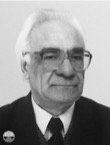
Ahmad Ahmad oglu Isgandaro, historian-orientalist, Doctor of Historical Sciences, Professor, Corresponding Member of the Russian Academy of Sciences, Honoured Scientist of Russia was born in the village of Mardakan of Baku on November 23, 1927. He graduated from the faculty of Japanese language of the All-Union Institute of Foreign Languages and the faculty of Philosophy of the Moscow State University. In 1957-1958, A. Isgandarov served as a junior research fellow at the Institute of Oriental Studies of the USSR Academy of Sciences, in 1958-1960, consultant editor of the journal “The problems of peace and socialism”, deputy chief of department, in 1960-1963, senior research fellow at the Institute of the Asian Peoples of the USSR Academy of Sciences, in 1963-1965, he served as the department chief in the journal “The problems of peace and socialism”, in 1965-1969, Consultant at the information department of the Central Committee of the Communist Party of the Soviet Union, in 1969-1970, consultant expert at the Ministry of Foreign Affairs of the USSR, in 1970-1972, Deputy Director of the Institute of International Worker Movement of the USSR Academy of Sciences, in 1972-1987, senior research fellow, deputy chief at the Institute of History of the USSR Academy of Sciences. He was the editor-in-chief of the journal “Вопро́сы исто́рии” (“Questions of history”) since 1987.
A. Isgandarov is the author of more than 100 published scientific articles. His works were translated into a number of foreign languages. Ahmad Isgandarov’s main scientific works are the following: “Feudal Japanese city of the 16th century”, “Africa, politics, economics, ideology”, “Toetomi Xideyosi’, “History and society”, “History of Portuguese arrival to Japan”, “Russian monarchy: reforms and revolution”. A. Isgandarov died in Moscow on October 13, 2017.
Akif Alizadeh
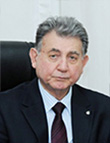
Akif Agha Mehdi oglu Alizadeh was born on February 25, 1934 in Baku. After graduating the geological-exploration faculty of Azerbaijan State Oil Academy (currently – Azerbaijan State Oil and Industry University) in 1957, he began to work at the Institute of Geology of the Azerbaijan National Academy of Sciences. In 1961, he received candidate of science and in 1969, at the age of 35, doctor of Geological - Mineralogical Sciences. In 1970-1976 Akif Alizadeh worked as deputy director of the Institute of Geology. He is a director of the Institute from 1976. Field of scientific interests of A. Alizadeh is regional stratigraphy of Azerbaijan Cretaceous deposits. He supervised and developed stratigraphic scheme for Azerbaijan Cretaceous deposits, large paleontological-stratigraphic material was analyzed and generalized which could reflect contemporary ideas of geological processes; formation of sedimentary, volcanogenic-sedimentary formations, distribution and development of Cretaceous fauna. On the base of many years thorough studies Akif Alizadeh formulated the basic concepts of study for Cretaceous Mollusk fauna (belemnites) of Azerbaijan. There is their classification and phylogeny, morphofunctional analysis; the principles of paleo-biogeographic zoning were worked out; ecology and paleontology problems were covered.
Eight-volume book “Geology of Azerbaijan” and an atlas “Minerals of Azerbaijan” were published under the leadership of Akif Alizadeh. In 1980, Akif Alizadeh was erected corresponding member of the Azerbaijan National Academy of Sciences, and in 1989 active member of ANAS. He is a president of the Azerbaijan National Academy of Sciences from 2013. Akif Alizadeh is an author of over 220 scientific works and 9 monographs. Grandfather of his father Agha Akhund Alizadeh was elected Sheykh-ul-Islam of Azerbaijan twice - during the Azerbaijan Democratic Republic and the Soviet period. Agha Seyidali Mir Movsumzadeh (Etagha) is an uncle of Akif Alizadeh’s father. His parents Aghamehdi and Efshan khanum Alizadehs were popular doctors in Azerbaijan. Akif Alizadeh’s elder brother Mesud Alizadeh (1932-1968) was the First Secretary of the Central Committee of Azerbaijan Komsomol. Akif Alizadeh was awarded “Badge of Honor Order” (1986), “Shohrat” (2004), “Sharaf” (2008) and “Istiglal” (2014) orders, Honored publicman of Science of Azerbaijan Republic (1991) and Azerbaijan Republic State Award Prizer (1991). In 2014, he was elected as foreign member of the Russian Academy of Natural Sciences.
Aliagha Vahid

Aliagha Mammadgulu oglu Isgandarov – an Azerbaijani poet, Honored Art Worker of the Azerbaijan SSR - was born on February 17, 1895, in the Masazir settlement of Baku, in the family of a joiner. He received his primary education in a madrasa, but without completing it, he joined the literary society “Mejmeush-shuara”, where he met the poets of Muniri, Azer Imamaliyev and other popular Baku’s poets of that era. Under the creative influence of his teacher-poets, Vahid from the years of 18–19, began to write his first lyric poems and publish their in the magazines “Igbal”, “Zakhmat”, “Bayraghi”, “Adalet”, “Basiret”, “Tutti”, “Mezel” and others. In his early poems, he criticized social weaknesses in society, superstition, prejudice, and injustice. The first collection of the poet “Tamahkarlygyn Agibeti” (“The crash of stinginess”) was published in 1916. Without a secondary education, he had the inborn ability to write poetry right away. Later, under the influence of the works of Fuzuli, Seyid Azim, he began to write gazelles. By the nature, Aliagha Vahid was more a lyricist than a satirist, which could not but be reflected in his poetry. His fascinating, melodic gazelles became more and more popular among the people, so much so that Vahid was called “Gazelkhan”.
Vahid was also a brilliant connoisseur of the classical poetry of the East, he was masterfully translating the immortal works of Nizami, Khagani, Feleka, Hafiz, Navai and other classics from Persian to the Azerbaijani language. Aliagha Vahid died at the night of September 30 to October 1, 1965 in Baku. The poet was buried on the Alley of Honor.
Alisohbet Sumbatzadeh

Alisohbet Sumbatzadeh was born on January 21, 1907 in Baku. In 1926, he entered the department of History and Ethnology of the Faculty of Oriental Studies of Azerbaijan State University (currently Baku State University) and graduated in 1930. In 1930, A. Sumbatzadeh defended his candidate’s and in 1948 doctoral dissertations. In 1954, he became a professor, in the same year the corresponding member of the Azerbaijan Academy of Sciences and in 1958 was elected the full member of the academy. In 1957-1959, A. Sumbatzadeh was vice-president of the Academy of the Azerbaijan Sciences, in 1959-1963, the head of the department at the Institute of Economics, in 1963-1969, the director of the Institute of the Peoples of the Near and Middle East, in 1970-1972, the director of the History Institute. In 1970-1981, he was the Scientific Secretary of the section of Social Sciences at the Azerbaijan Academy of Sciences. In 1982-1992, he worked as the head of the department at the Center of Scientific Information on Social Sciences.
A. Sumbatzadeh, mainly researching socio-economic history of the 19th and early 20th centuries, was one of the co-authors and editors of collective works, such as 3-volume “History of Azerbaijan” (Baku, 1958-1965), “The annexation of Azerbaijan to Russia and its progressive economic and cultural results” (Baku, 1955, in Russian), “History of the USSR” (volume VI, Moscow, 1967), “Victory of Soviet power in Transcaucasia” (Tbilisi, 1971), “The historical experience of Great October” (Moscow, 1975), “The non-capitalist path of development and modernity (Ulan-Bator, 1977), “Great October and prosperity of Soviet Azerbaijan’s economy and culture” (Baku, 1977), “The development of the Soviet Azerbaijan’s economy at the present stage” (Baku, 1980), “The Soviet historical science in 1975-1979 years” (Moscow, 1980), “The ethno- genesis of the Azerbaijani people” (Baku, 1988) and the others. A. Sumbatzadeh had great contribution in training of scientific personnel. A. Sumbatzadeh made speeches at republican and international symposia, conferences and congresses (Tashkent -1957, Moscow- 1960, Tehran -1966, Dushanbe -1968, Moscow-Leningrad -1970, Ashgabat -1972, Berlin -1973, Ulan-Bator -1974, San Fransisko -1975, Edinburgh -1978, Bucharest -1980, etc.). A. Sumbatzadeh was awarded “Red Labor Banner” and various medals and orders, and was honored to the title of Honored Scientist of Azerbaijan SSR. Alisohbet Sumbatzadeh died on January 28, 1992 in Baku.
Almas Ildirim
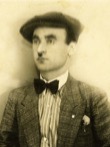
Ildirim Almaszadeh was born on March 25, 1907 in Baku, in the suburban village Gala. He received his primary education in the school “Ittihad”. Then, in 1927, he successfully passed the exam for the Department of the Oriental Literature at the Azerbaijani University, but was soon expelled - his background failed: in the “class” column it appeared that his father was a merchant. That was the time when Almas Ildirim visited the Society of the Azerbaijani proletarian writers, created poems in which he tried to express his attitude to the events taking place in the country. He was accused of writing “mourning elegies” at the time when he had to celebrate the successes of the proletarian revolution; he was called “the Musavat ashug,” a follower of Huseyn Javad and Ahmed Javid. Almas Ildirim is sent to exile in Dagestan, where he teaches and writes the short poems. Almost immediately after the scandal with the book “When the mountains are sung,” Almas Ildirim was sent further from his homeland to Turkmenistan. In Ashgabat, he was appointed as a principal of the school for the children of Turks who came from Iran and the Caucasus. In Ashgabat, being under the supervision of the internal affairs agencies, A. Ildirim writes poems that were distributed in manuscripts; he becomes known in the circles of the intelligentsia as a poet-patriot. However, feeling that he is putting himself and his family in danger, he, along with his wife and infant child, decides to go abroad. In 1933, Almas Ildirim, with his family joining the trade caravan, headed for neighboring Iran, where from Tehran headed for Mashhad. But on the way, the border guards arrest him and hold him in jail for 25 days. Upon his release, A. Ildirim settled in the city of Mashhad, where, finding himself without work and means of livelihood, he suffered distress. In 1934, he left Iran and moved to Turkey, found work in one of the primary schools, and served as a secretary and as a clerk in various institutions.
A. Ildirim died in 1952 from a kidney disease in Turkey, in the city of Elazig. In the village of Shuvalan, a street is named after him. In 1991, the son of A. Ildirim arrived in Baku - to stay with relatives - and died unexpectedly. He was buried in Shuvalan.
Anar

Anar was born on March 14, 1938 in a family of poets in Baku. His father Rasul Rza and mother Nigar Rafibeyli were recognized poets in the country. In 1945 he entered on the philological faculty of the Azerbaijani State University. He graduated from ASU in 1960; also in 1964, he graduated from the Higher Script Writers courses and the Top producers courses in Moscow. Since 1960 he has started to be printed, and his first novel “Contact” has published in 1976. According to the scripts of Anar, were made 12 films, and in three of them he acted as a director. According to one of the stories of Anar, was made a film “Every evening at the eleven,” on Mosfilm, by director Samsonov, and a script writer Radzinsky has been wrote the script for this film. Anar owns a number of interesting works, affecting mainly the problems of the present. According to his scenarios, were made the feature films like “Earth, Sea, Fire, Heaven” (1968), “A Day passed” (1971), “The Light of Extinguished Bonfires” (1977), and a number of documentary films. In his own scripts he put the television films - “Danteəs Anniversary” (1978, together with Y .Azimzadeh; State Prize of the Azerbaijan SSR, 1980), “Uzeyir Hajibeyov. Chords of long life”(1981). In his prose he described the socially moral collisions of city life. He owns collections of stories and tales: “Waiting for a holiday” (1963), “The rain stopped” (1968), “Molla Nasreddin-66” (1970), “Circle” (1973); the novel “On the Sixth Floor of a Five-Floored House” (1980) and others.
Since 1987 until 1991, Anar was a Chairman of the Union of Writers of the Azerbaijan SSR, and since 1991 he is a Chairman of the Union of Writers of the Republic of Azerbaijan. In 1989-1991 – he was a deputy of the Supreme of the Soviet of the USSR; from 1995 until 2005 he was a deputy of the Milli Majlis. The contributions of Anar are highly appreciated by the state. In 1998, by the decree of the President of the Republic of Azerbaijan Heydar Aliyev, he was awarded the highest award of Azerbaijan - the order “Istiglal” (1998) and “Sharaf” (2013). For the special contributions in the development of the Azerbaijani literature, in 2011 he was awarded by the Heydar Aliyev Prize. He was awarded the title “The Person of 2012 in the literature of the Turkic world” and “The honorary diploma of the President of the Republic of Azerbaijan” (2018).
Anatoliy Banishevskiy
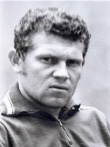
Anatoliy Banishevskiy was born in the Azerbaijani capital on February 23, 1946 in Ukrainian family. Spotted playing on a pitch for children by Locomotive Baku, “Banya,” as he came to be known by his teammates, exploded onto the scene by racking up goals in his first three seasons. Neftyanik Baku didn’t wait long before recruiting him in 1963. And soon he ascended to the next level as the following year he joined the first team, which was then making progress in the Soviet Union’s premier division, and played his first match in the Soviet Top League at the age of 16. It was a rapid progression also with the Soviet national team at the age of 19.
The year 1966 was the summit of his career, and coincided with the pinnacle of Azerbaijani football. Effectively, Neftchi, the principal club in the Azerbaijan SSR reached the podium of the Soviet Top League, finishing third, the best result in the history of Azerbaijani football in the Soviet championship. Anatoliy Banishevskiy registered 19 goals in 51 matches in the championship. He attempted a career as a coach with several clubs during the 1980s. Between 1981–1983, he took the reins of the club closest to his heart, Neftchi. He has also worked as youth coach of Burkina Faso during 1987–1988 period. Banishevskiy was diagnosed with diabetic coma in 1991, having surviving first attack in 1987. He suffered cerebral atrophy as result of a second attack, which also caused him memory loss. He died in 1997 at the age of 51.
Araz Agalarov

Araz Isgandar oglu Agalarov was born on November 8, 1955 in Baku. In 1977, he graduated from the Baku Polytechnic Institute (now the Azerbaijan Technical University) with a degree in Computer Engineering. From 1983 to 1987, he was a student of the Higher School of the Trade Union Movement (now the Academy of Labor and Social Relations) of the All-Union Central Council of Trade Unions (AUCCTU). From 1988 to 1990, he worked in the AUCCTU Research Center as a junior researcher. In 1998, Araz Agalarov defended his doctor’s dissertation “Formation and use of a wage fund by the example of a communications enterprise” and received a PhD degree in Economics. He is an academician of the International Academy of Informatization. In 1989, he founded the US-Soviet joint venture of “Crocus International” that was later transformed into the group “Crocus Group” companies.
In 1990, Agalarov organized the first Russian computer exhibition. On Agalarov’s initiative, Crocus Group financed the construction of the Myakinino station of Moscow Metro (2009) and was the General contractor of building the Far Eastern Federal University (Primorsky Kray). Since 1992, he became the president of CJSC “Crocus” and Krasnogorsk Branch of “Crocus City”. In 1998, Agalarov opened “Your Home” Shopping Center, and in 2002, built Crocus City Mall. In 2007, he completed the construction of three stages of Crocus Expo, and in 2009, the construction of Vegas Shopping Center. Araz Agalarov is the chairman of the management board of Crocus Bank, the chairman of the JSC “Kroteks” Council, the Vice President of the Moscow International Business Association, the Vice President of the All-Russian Non-Governmental Organization of Small and Medium Business “Opora Russia”. He is also the chief editor of “Business and Exhibitions” magazine and the author of the books “My View of Russia in an Epoch of Reforms”, “Russia: Reflections on the way to the market”, and “Another attempt? ... Articles about the Russian economy, published in 1996-1999”.
A. Agalarov is the founder of the non-profit organization “Muslim Magomayev Cultural and Musical Heritage Foundation”. Araz Agalarov was awarded the “Taraggi” medal of the Republic of Azerbaijan, the Order of Honor of the Russian Federation (2013), the Order of Holy Prince Daniel of Moscow II degree (2005), and the Order of Merit of the Italian Republic (2009).
Arif Babayev
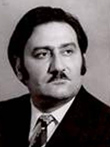
Arif Alihaydar oglu Babayev was born on November 11, 1934. In 1957, he graduated from the Faculty of Physics and Mathematics on mathematics (1957). In 1960 he became a PhD, in 1966 - doctoral of science. In 1976 he was elected as a corresponding member of the Azerbaijan Academy of Sciences. He worked as a teacher, associate professor, Professor, head of department and dean at the mechanics and mathematics department of Azerbaijan State University (1979-1994).
A. Babayev proved a number of new theorems on the existence of a solution and on the uniqueness of nonlinear singular integral equations, studied the singular integral for the integration of an uneven closed curve and applied it in linear and nonlinear singular integral equations. He introduced a new method for studying a singular integral operator with a Cauchy nuclei along an open curve, was created method based on a local theory of nonlinear singular integral equations. The discrete analogs of the singular integral and space, which are affected by this integral, as well as the application of these concepts for the approximate solution of nonlinear singular integral equations was given. With the participation and leadership of A. Babayev were developed a local theory of nonlinear singular integral equations, approximate methods for solving these equations, a local theory of equations and multidimensional singular integral operators on a domain, and applied in function space input theorems and others. Under the leadership of A. Babayev more than 40 PhD and doctoral theses were defended. He was awarded the Order “Badge of Honor” (1976) and in 1992 he was awarded the “Honored Scientist”. Arif Babayev died On June 5, 1998 in Baku.
Arif Malikov
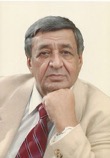
Arif Jahangir oglu Malikov was born on September 13, 1933 in Baku. Arif Malikov was an Azerbaijani composer, teacher, the People’s artist of the USSR (1986) and a Full Member of the Azerbaijan National Academy of Sciences (ANAS). Since his childhood, he used to be interested in music, especially in folk music. He learned to play tar (a traditional stringed instrument) and got his primary music education in the Baku Music School at the department of Azerbaijani folk instruments. Having finished the musical school on a “Tar” class, in 1953, he entered the Department of Theory and Composition of the Hajibeyov Azerbaijan State Conservatoire. The great composer Gara Garayev was his mentor and teacher. Being under the influence of some of his professors and have been surrounded by so many legendary musicians and artists, a young student Malikov created a number of interesting works, such as the symphonic poem “Fairy Tale”. During the academy years, he created a ballet suite, concertino for flute and orchestra and some instrumental pieces.
He shot to fame in 1961, when his first major composition “Legend of Love” was staged at the Kirov State Academic Theatre of Opera and Ballet in Leningrad (present day St Petersburg) and received nationwide acclaim. The ballet “Legend of Love” brought Arif Malikov together with the Turkish poet Nazim Hikmet and the artistic elite of the world-renown Bolshoi Theater. The compositions of A. Malikov were often included in the programs of European festivals of contemporary music in Poland, Germany, Czechoslovakia, Austria, Yugoslavia and Turkey. The composer succeeded in revelation of critical issues of life, history and culture by merging two possible polar types of mindset - the European symphony and mugham traditions into a single. The composer wrote romances, including 2 cycles on the word of Nazim Hikmet, cantatas, piano miniatures and film music in different years. A. Malikov was a professor teaching music in the Azerbaijan State Conservatoire and an active participant in the growth and development of the republic’s composer school. He was also a founding member of Eurasian Academy. Long-term cultural activities of Academician Arif Malikov in development and promotion of the Azerbaijani music were highly appreciated by the state. In 1998, Arif Malikov was awarded “Istiqlal” Order, in 2013, “Heydar Aliyev” Order and in 2018, “Shohrat” Order for his achievements in Azerbaijani culture. From 2001, until the end of his life he was the Corresponding Member of the Azerbaijan National Academy of Sciences (ANAS). Arif Malikov passed away on May 9, 2019. He was buried in the first Alley of Honour.
Arif Mehdiyev
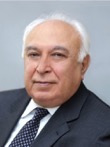
Arif Shafayat oglu Mehdiyev was born in Baku, on December 19, 1934. He was Honoured scientist, Laureate of State Prize of the Republic of Azerbaijan, active member of the Azerbaijan National Academy of Sciences, Chairman of the Higher Attestation Commission under the President of the Republic of Azerbaijan, Doctor of Physical and Mathematical Sciences. Arif Mehdiyev graduated from the Moscow Electrotechnical Institute of Communications in radio engineering in 1952-1957. He started his career in 1957 in the Institute of Physics of the Academy of Sciences of Azerbaijan, in 1961-1965, he worked in an institution under the Ministry of Electronic Industry of the USSR. Since 1973, Arif Mehdiyev worked as a deputy director for scientific work of the Scientific Centre “Khazar” of the Academy of Sciences of Azerbaijan, who later became the Institute of Space Research of Natural Resources. In 1979, he was transferred to the post of Deputy Director General established on the basis of the Center of the Institute of Space Research of Natural Resources. Arif Mehdiyev was the first Director General of Azerbaijan National Aerospace Agency, set up on the basis of the Association. From 2002, until his death he was a chairman of the Higher Attestation Commission under the President of the Republic of Azerbaijan.
In 1969, Arif Mehdiyev defended his thesis, in 1984 - a doctoral thesis in physico-mathematical sciences, and became a professor in 1987. In 2001, he was elected a member of the Azerbaijan National Academy of Sciences. Serving as a professor of the Azerbaijan State Oil Academy and the National Aviation Academy for many years, Arif Mehdiyev took an active part in training of highly qualified personnel. Results of scientific researches of Arif Mehdiyev found reflection in more than 300 scientific works published in our country and abroad and over 50 inventions. Under his supervision, dozens of doctors of science were trained in Azerbaijan. In 1990, Academician Arif Mehdiyev was awarded the State Prize of the Republic of Azerbaijan for establishment and operation of the autonomous hydroacoustic information system for detection and monitoring of underwater facilities, pipelines and communications. Academician Arif Mehdiyev died on December 19, 2016 at the age of 82 in Baku. He was buried in the second Alley of Honour.
Arif Pashayev
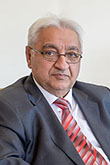
Arif Mir Jalal oglu Pashayev was born on February 15, 1934, in Baku, in the family of outstanding Azerbaijani writer and scholar Mir Jalal. Arif Pashayev graduated from the Institute of Electrical Engineering and Communications of Odessa, having majored in “Radio communication and radio broadcasting” in 1957. He began his scientific activity at the Physics Institute of the ANAS (Azerbaijan National Academy of Sciences) in 1959.Arif Pashayev entered the postgraduate study of the Moscow State Institute of Rare Metals in 1960. In 1965, he defended his candidate dissertation on the topic “Elaboration of methods and gadgets for non-contact measuring of parameters of semi-conductive metals in high and ultra-high frequency field”. The scientific researches conducted in this field by A. M. Pashayev since 1969, laid the foundation of the new direction in microelectronics – microelectronic converters field of non-electric quantities.
From 1971 to 1996, A. M. Pashayev headed the Laboratory of “Physical Methods of Measurement and Control without damage” of the Physics Institute of the Azerbaijan National Academy of Sciences. A. M. Pashayev was awarded the tittle of State Prize Laureate of Azerbaijan “For the series of works on creating autonomous hydro-acoustic information system” in 1991. The results of scientific researches in the field of microelectronic sensors was published as two monographs: “Solid microelectronic transformers of non-electric sizes” (1998) and “Solid microelectronic magneto-electrical and moisture electrical transformers” (1999).
From 1996 up to now, academician A. M. Pashayev is a Rector of the National Aviation Academy of the “Azerbaijan Airlines” Closed Joint-Stock Company. In 1989, Arif Pashayev was elected a corresponding member and in 2001, a full member of the Azerbaijan National Academy of Sciences. In 2005, academician Arif Pashayev was awarded an honorary title “Honoured Scientist”. Arif Pashayev is a president of the Azerbaijan Engineering Academy founded in 2005, as well as a president of the International Engineering Academy and a Public Union of “Scientifically-Guaranteed Innovation Association” founded in July 2009. More than 400 scientific works of academician A. M. Pashayev were published. He is the author of over 30 books and monographs, got the certificate of authorship and industrial samples for more than 60 inventions. On October 24, 2011, academician Arif Pashayev was elected vice president of the International Engineering Academy. Arif Pashayev is also an academician of the Ukrainian and Russian Engineering Academies. Arif Pashayev was awarded “Order of Glory” (2004), “Order of Honour” (2009) and “Order of Istiglal” (Independence) (2014) of the Republic of Azerbaijan.
Azad Mirzajanzadeh

Azad Khalil oglu Mirzajanzadeh, an outstanding Azerbaijani scientist in the field of oilfield mechanics, Doctor of Technical Sciences, Professor, Academician of the Azerbaijan National Academy of Sciences, Honoured Scientist, Laureate of State Prize of the Republic of Azerbaijan was born in Baku on September 29, 1928. In 1949, he graduated from the faculty of oil industry of the Azerbaijan Industrial Institute. Two years later, he defended his thesis on “Elements of hydraulic clay solutions”. In 1957, he wrote his doctoral dissertation on “Problems of fluid mechanics of viscous-plastic and viscous liquids”. At the age of 34, he became a Corresponding Member and at the age of 40, he became a Full Member of the Azerbaijan National Academy of Sciences. It was an extremely young age for scientific achievement of such a level. In 1951-1957, he became an associate professor, in 1957-1959, a professor of the Chair of Theoretical Mechanics of the Azerbaijan State University. For the rest of his life he was the professor of the Chair of Development and Exploitation of Oil Fields of the Azerbaijan State Oil Academy. The founder of a number of new directions in applied mechanics and oil recover, academician A.Mirzajanzadeh made an outstanding contribution to the Azerbaijani science and has gained great popularity with numerous valuable researches on the actual problems of the oil and gas industry.
Being the author of over 400 scientific works and 50 inventions and patents, he has especially paid attention to global optimization of oil and gas production processes. Elaboration and application of dynamic methods of development of offshore oil fields is among the main successes of the scientist. Azad Mirzajanzadeh was honored with the title of Academician by several world academies, and served as a Chairman of the Supreme Attestation Commission under the President of the Republic of Azerbaijan. Azad Mirzajanzadeh lectured in Poland, Hungary, Algeria, Syria, Turkey and Bulgaria. His practical experience is very wide. He worked almost everywhere where there is oil and gas, starting from Baku and further to Ufa, Siberia and Moscow. The application of nanotechnologies in the Azerbaijani oil industry began in 2004 by Academician Azad Mirzajanzadeh. Azad Mirzajanzadeh died on July 17, 2006. He was buried in the first Alley of Honour.
Azim Azimzadeh
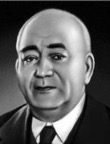
Azim Aslan oglu Azimzadeh - the first Azerbaijani caricature artist, the founder of Azerbaijani satirical graphics and the first People’s Artist of Azerbaijan SSR - was born on 7 May, 1880, in the village of Novkhanı near Baku. Azimzadeh did not receive artistic education and was self-educated. When Azimzadeh was eight years old, his father enrolled him in the local Muslim school (madrasa - school at the mosque), where Koran was being recited in Arabic. Following a four-year education there he started attending a three-year class Russian-Azerbaijani school. It was here that he was encouraged to illustrate fairytales with watercolors and where he got his first introduction to art. He finished primary school but was unable to pursue further education because he had to earn a living. Since 1906, he has collaborated with such magazines as “Molla Nasraddin” (1906-1931), “Zenbur” (1909-1910), “Kelniyyet” (1912-1913), “Baraban” (1912-1913), “Bich” (1909-1916), “Mezeli” (1914-1915), “Babai-Amir” (1915-1916), “Tuti” (1914-1916). During the Soviet period A. Azimzadeh focused mainly on publishing of a variety of works, including a book, easel graphics, book illustrations, paintings for satirical magazines and newspapers, drafts of costumes, decorations, political caricatures and posters. During the first half of the 1920s the artist decorated performances in Baku theaters: he created scenery and costumes.
His 56 colored illustrations for the anthologies of Azerbaijani poet, M. A. Sabir, titled “Hop-hop Name”, became one of his most memorable works in the field of book graphics. A. Azimzadeh also created expressive series of illustrations for works of J. Mammadguluzadeh (“Hope they will return”), A. Hagverdiyev (“My deer” and “Letters from Hell”), N. Narimanov (“Sanctuary”) etc. Azim Azimzadeh passed away on June 15 in 1943 at the age of 63. He was buried at the Alley of Honor. The house-museum of A. Azimzadeh is a memorial museum dedicated to the Azerbaijani artist and caricaturist was opened in 1968 and is the first house-museum opened in Baku. A street in Baku and the Artistic School of Azerbaijan, where Azimzadeh once taught and was director, were all named in his honor. In 2002, a monument to Azimzadeh was erected near Heydar Aliyev Palace in Baku.
Chingiz Abdullayev

An Azerbaijani writer, current Secretary of the Writers’ Union of Azerbaijan Chingiz Akif oglu Abdullayev was born on April 7, 1959 in Baku. Unlike many other Azerbaijani writers who studied philology, Abdullayev obtained his Doctorate in Law from Baku State University (1991). Abdullayev graduated from the faculty of law of Baku State University and began working for the Soviet Defense Ministry in 1981. He was wounded twice in the line of duty. Abdullayev was decorated by the Soviet government with the Order of the Red Banner, Order of the Red Star and medals. His decision to make writing a full-time career became clear to him after his friend, a fellow Soviet spy was double-crossed and killed by a shotgun blast to the back on an Angolan street in 1983.
Abdullayev wrote his first novel in 1985. It was barred from publication because of the secrets it revealed, but by 1988 the Soviet censorship was relaxed, and his book was published. His writing became an almost overnight success and he quit the intelligence service a year later. He is known mostly for his detective novels, which became extremely popular throughout the former Soviet Union and continue to attract readers not only in the CIS but also throughout the world. Abdullayev has been published more than any other Azerbaijani writer. His books sold more than 20 million copies - mostly in the genre of detective novels and short stories in the Russian language. He has authored more than 86 works, including novels and short stories, which have been published in 17 languages in 23 countries throughout the world. Chingiz Abdullayev was awarded the Order “Shohrat” (2009) and “Sharaf” (2019) for his achievements in Azerbaijani culture.
Ednan Agayev

Ednan Tofig oglu Agayev was born on October 25, 1956 in Baku. After graduating from the Moscow State Institute of International Relations in 1979, he began his diplomatic career as attache at the USSR Ministry of Foreign Affairs. In 1980, he was appointed as the senior political affairs officer at the United Nations Office at Geneva (UNOG) and continued his job at the United Nations Research Institute for Social Development (UNRISD) in Switzerland. In 1985, he defended his candidate’s dissertation at the Diplomatic Academy of the Ministry of Foreign Affairs of the USSR. In 1986, Ednan Agayev returned to Mosow, to the USSR Ministry of Foreign Affairs. In 1986-1989, he was department head at the United Nations Office for Disarmament Affairs (UNODA) and in 1990-1991, director of the Multilateral Disarmament and International Security Departament. In 1991, he was appointed as Special Adviser of the Ministry of Foreign Affairs of the Russian Federation, and at the same time he was head of the Department of Policy Planning. He was a member of the United Nations Disarmament Commission (UNDC) during 1993-1994. In 1994-1999, he was ambassador extraordinary and plenipotentiary of the Russian Federation to the Republic of Colombia. In 1999-2013, Ednan Agayev was partner of the Moscow branch of the Egorov Puginsky Afanasiev and Partners LLP (later - lawyer bureau). He was head of the International Consulting Office and oversaw foreign projects of Russia’s largest corporations. Since 2013, Ednan Agayev is a director of the Moscow Office of KAMS law firm.
He is a Professor of the Moscow State Institute of International Relations and gives lectures at Paris 2 Panthéon-Assas University. Ednan Agayev also lectured at Georgetown University (Washington, USA), Graduate Institute of International and Development Studies, French Institute of International Relations, the Ekol Militar Military Academy (Paris) and the University of Miami (USA). Ednan Agayev is an author of works on international security and disarmament. Since 2000, he is vice-president of the Russian–American Council for Business Cooperation. He is also one of the initiators of the Russian-American Business Dialogue.
Farhad Badalbeyli
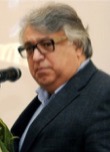
Farhad Shamsi oglu Badalbeyli - a Soviet and Azerbaijani pianist, composer and music teacher, the people’s Artist of the USSR - was born on December 27, 1947 in Baku in the family of the director, People’s Artist of the Azerbaijani SSR, Shamsi Badalbeyli. In 1969, he graduated from the Azerbaijani Conservatory named after U. Hajibeyov (class of M. Brenner), and in 1971 - postgraduate school of the Moscow Conservatory (under the direction of Bella Davidovich). In 1971, F. Badalbeyli began teaching at the Azerbaijani State Conservatory (since 1976 – an associate professor, since 1983 – a professor). Since 1991, F. Badalbeyli is the rector of the Azerbaijani State Conservatory, and after its reorganization, the rector of the Baku Music Academy. He is an honored Artist of Azerbaijan (1972), People’s Artist of Azerbaijan (1978), Laureate of the State Prize of Azerbaijan (1986), People’s Artist of the USSR (1990). In 1986-1989 - First Deputy of the Chairman of the Board of the Musical Society of Azerbaijan. On the initiative of F. Badalbeyli, was created the Baku Center of Arts, which he led in 1987-1996. Since 1989, he is Chairman of the Union of the Musical Figures of Azerbaijan. In 1995, he was elected a member of the US-Azerbaijan Foundation “Friends of the Culture of Azerbaijan”.
Since 2009 he is the founder and art director of the Gabala Music Festival. In the pianist’s schedules presented a rather wide range of the classical and modern works, including sonatas by Haydn, Mozart, Beethoven, works by Bach, Debussy, Ravel. He enthusiastically performs many opuses by Schubert, Mendelssohn, Liszt, Chopin, as well as Scriabin and Rachmaninoff, interprets works by Bartók, Gershwin, Prokofiev, Shostakovich. His repertoire includes, in addition to many works by G. Garayev, a concert on Azerbaijani themes by F. Amirov and E. Nazirova, a concert for piano and chamber orchestra by F. Garayev, and plays by J. Hajiyev. In 1997 he was awarded the Order “Shohrat” (“Glory”), and in 2017 - the Order “Istiglal” (“Independence”).
Fazil Gurbanov

Fazil Gurbanov was born on February 18, 1944 in Baku. In 1973, he graduated from the treatment-prophylactics faculty of the Azerbaijan State Medical Institute. In 1983, he defended his thesis for a Ph.D. in medicine, and he defended his doctoral dissertation in 1987. Fazil Gurbanov is a professor of the Azerbaijan Medical University and the Peoples’ Friendship University of the Russian Federation (1999). In 2014, he was elected a corresponding member of the Azerbaijan National Academy of Sciences (ANAS) and active member in 2017. Fazil Gurbanov was a scientific researcher at the ANAS Institute of Physiology (1975-1980), postgraduate and scientific researcher at the All-Union Surgery Center of the USSR Academy of Medical Sciences (1980-1987), departament head at the Institute of Gastroenterology of the Ministry of Health of the Azerbaijan Republic (1988-1999), professor of the Department of Surgery at the Azerbaijan Medical University (1991-1999), head of the Departament of Surgery at the Central Clinic Hospital after N. A. Semashko in Moscow (1999-2005) and a professor of the Depratment of Surgery of the Peoples’ Friendship University of the Russian Federation (from 1999).
Fazil Gurbanov is known as a highly qualified surgeon–scientist and a pedagog in CIS and foreign countries. Although his surgical experience is multidimensional, application of the most up-to-date medical technologies during operative and conservative treatment of digestive tract, stomach and gastrointestinal organs are the main directions of his activity. He is also an author of over 250 research articles, 5 monographies, textbooks and tutorials for high school students, many specialized medical guidelines, 13 inventions and 7 rational proposals. Under his scientific supervision, highly qualified medical specialists were trained. He is a member of the International Society of Surgery (USA), the Russian Society of Surgeons, the Russian Association for Endoscopic Surgery and the Russian Society of Herniologists. He was elected active member of the New York Academy of Sciences in 2003. He is a member of editorial board of “Surgery” magazine of the Ministry of Health of the Republic of Azerbaijan, some healthcare, medical committees and commissions of Russia and the Scientific Council of the Peoples’ Friendship University of Russia. Fazil Gurbanov was president of the All-Russia Congress of Azerbaijanis. In 2016, Fazil Gurbanov was awarded the honorary title of Honored Scientist of the Republic of Azerbaijan. In 2019, he was awarded the Order of Glory of the Republic of Azerbaijan for his contribution to the development of scientific relations and diaspora activity between Azerbaijan and Russia.
Feyzulla and Fuad Gasimzadehs

Feyzulla Samad oglu Gasimzadeh was born on February 22, 1898, in the village of Mardakan of Baku province. He studied at the Azerbaijan Pedagogical Institute (1923-1925), graduated from the Faculty of Oriental Studies of the Azerbaijan State University (1926-1929), and was a post-graduate student of the Azerbaijan State Scientific Research Institute (1929-1931). F. Gasimzadeh defended his PhD (1939) and Doctoral theses in Philology, and obtained professor degree his scientific name (1957). Feyzulla Gasimzadeh was elected a Corresponding Member of the Azerbaijan National Academy of Sciences (ANAS) in 1962, and in 1967, he became a Full Member. He started his labor activity in 1916 and served as a teacher at schools in Baku and in the villages of Absheron, in Baku Pedagogical College (1928-1929), Azerbaijan Pedagogical Institute (1929-1931), also as a methodist-instructor in the Public Education Commissariat (1931-1938). F. Gasimzadeh worked as a Senior Research Fellow in the Institute of Languages and Literature of the Azerbaijan branch of the USSR Academy of Sciences, Associate Professor and Head of the Chair in the Azerbaijan Pedagogical Institute, Head of the Chair in the Azerbaijan State University, and Head of the Literature Chair in the Azerbaijan Pedagogical Institute (1959). The monographs authored by Feyzulla Gasimzadeh about the great classics of the Azerbaijani literature M. F. Akhundzade (1938), A. Bakikhanov (1956) and N. Vezirov (1954) are the works that enrich the study of literature of Azerbaijan. The scholar’s books “Folk Ashug Poetry” (1950), “Critical Realism” (1952), “Vagif’s Literary School” (1954) are devoted to the study of important historical and theoretical issues of our literature. He is one of the main authors of the second volume of the three-volume “History of Azerbaijani Literature” (1957-1960). Feyzulla Gasimzadeh was twice awarded the Order of the Red Banner of Labor (1953, 1967) and medals, as well as honorary titles of Honored Teacher (1943) and Honored Scientist (1958). Feyzulla Gasimzadeh passed away on March 29, 1976 in Baku, and was buried in Mardakan. One of the streets in Baku is named after Feyzulla Gasimzadeh.
Feyzulla Gasimzadeh’s son Fuad Gasimzadeh was born in 1929 in Baku. In 1952, F. Gasimzadeh graduated from the faculty of history of the Azerbaijan State University, having majored in philosophy. He defended his PhD in 1954. In 1966, he defended his Doctoral theses entitled “Fizuli’s Outlook.” Fuad Gasimzadeh was elected a Corresponding Member (1989) and a Full Member (2001) of the Azerbaijan National Academy of Sciences (ANAS). Fuad Gasimzade had served as a teacher and a Head of the Philosophy Chair in Technical Sciences Departments of the Azerbaijan State University for 60 years. Fuad Gasimzade’s scientific and pedagogical activities over many years were highly appreciated, awarded the highest orders of the independent Republic of Azerbaijan – “Glory” and “Istiqlal” Orders. Fuad Gasimzadeh has had 30 books and more than 500 scientific articles published during his scientific activities. Fuad Gasimzadeh passed away on August 3, 2010, in Baku.
Fidan and Khuraman Gasimova

Fidan Akram gizi Gasimova - an Azerbaijani operatic soprano who was named the People’s Artist of the USSR in 1988 - was born on June 17, 1947 in Baku. She is a prize-winner at many international vocal competitions (Geneva, 2nd prize, 1973; Vercelli, 1st prize, 1977; Tbilisi, 1st prize, 1977; Tashkent, 3rd prize, 1977; Athens, 1st prize and Grand Prix, 1981; Moscow, 2nd prize, 1982). Fidan Gasimova has been teaching since 1982. Since 1993 until the present time she is the head of the Vocal Department at the Baku Academy of Music (professor since 1990). She also taught vocal at the Istanbul Conservatory from 1992 to 1998. Fidan Gasimova has sung a number of roles from classic operas in Azerbaijan, Russia and other countries. Her roles have included Desdemona in Verdi’s “Otello”, the title roles in Puccini’s “Tosca” and “Turandot” and Mimi in “La Bohème”, Micaëla in Bizet’s “Carmen”, Tatyana in Tschaikovsky’s “Eugene Onegin”, Nigar in Hajibeyov’s “Koroghlu”, Margarita in Gounod’s “Faust” and the title role in Amirov’s “Sevil”. The name of Fidan Gasimova is listed in a book entitled “The Greatest 100 Women in the World”. Among the countries in which she has sung are the United States, Germany, Great Britain, Sweden, Norway, Switzerland, Austria, Mexico, Russia, France, Denmark, Cuba and Turkey. Fidan Gasimova has performed with the Moscow Symphonic Orchestra and in Azerbaijan (State Chamber Orchestra (“Moscow Virtuosi”). In 1997 Fidan Gasimova was awarded the Order “Shohrat”, in 2010 the Order “Sharaf” and in 2017 the Order “Istiglal” for her achievements in Azerbaijani culture.
Khuraman Akram gizi Gasimova - Fidan’s sister, an opera singer and actress - was born on June 6, 1951 in Baku. Following the successful graduation from the Hajibeyov Azerbaijan State Conservatoire she joined troupe of the Azerbaijan State Academic Opera and Ballet Theater. While she was in school, she appeared in several films. In 1977, Khuraman Gasimova became a laureate of the Transcaucasian and All-Union Competition of Young Vocalists. In 1981, Khuraman Gasimova was awarded first prize at the Maria Callas Grand Prix, an international opera competition held in Athens and the silver medal at the 8th Tchaikovsky International Competition. Over the years of her career, Khuraman Gasimova successfully toured the republics of the Soviet Union and other foreign countries. She was applauded in Austria, Italy, France, Greece, Portugal, Norway, USA, China, Egypt, Cuba, Turkey, Germany, etc. With great success, Khuraman Gasimova performed the world, Russian and Azerbaijani classics on the stage of the Opera Theater. In 1986, she was named a People’s Artist of Azerbaijan for her creative achievements. She is also a laureate of the State Prize of the Republic of Azerbaijan in recognition of her service in promotion of Azerbaijani culture. As a professor, Khuraman Gasimova was teaching vocal on faculty of Istanbul University from 1992 to 1998. Since 1994, Khuraman Gasimova is a head of the department of vocal at the Baku Academy of Music and gives master classes. She was awarded the Order “Shohrat” (1997) and the Order “Sharaf” (2017).
Firangiz Ahmedova
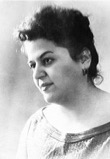
Firangiz Yusif gizi Ahmedova - an outstanding opera singer, People’s Artist of the USSR, personal scholar of the President of the Azerbaijan Republic - was born on 23 September 1928, in Baku. After graduating from high school, she studied at the Baku Musical College named after Asaf Zeynalli. In 1955, she graduated from the Azerbaijan State Conservatory. F. Ahmedova began her career at a young age. In 1946-1951, she was a soloist of the Chorus of Azerbaijan Radio Broadcasting, in 1951-1988 - of the Azerbaijan State Opera and Ballet Theater, and in 1989-1997, she conducted master-classes in this theater. Firangiz Ahmedova performed the main parts in many operas of both Azerbaijani authors, and Russian and European ones. These operas are “Arshin mal Alan” (Gulchohra) and “Koroglu” (Nigar) by U. Hajibeyli, “Shah Ismail” and “Nargiz” (Gulzar and Nargiz) by M. Magomayev, “Sevil” (Sevil) of F. Amirov, “Azad” (Sariya) by J. Jahangirov, “Daisi” (Maro) by Z. Paliashvili, “Tosca” and “Madame Butterfly” (Tosca and Chio-Chio-san) by J. Puccini, “Aida” (Aida) of G. Verdi, “Eugene Onegin” (Tatiana) by P. Tchaikovsky, etc. F. Ahmedova with tours traveled almost the entire territory of the former USSR, performed in the best halls of Prague, Bratislava, Warsaw, Sofia, Bucharest and Berlin. In 1967, she was awarded the title of People’s Artist of the USSR, and the Order of Lenin. On her 70th birthday, Ahmedova was awarded the highest award of independent Azerbaijan - the Order “Shohret” (“Glory”). F. Ahmedova carried out productive work as a public figure as well. She was a deputy of the Supreme Soviet of the 4th convocation and the Supreme Soviet of the Azerbaijan Republic of the 5th convocation. Firangiz Ahmedova died at the age of 84 on 16 December 2011, and was buried at the Alley of Honor.
Firanghiz Alizadeh

Firanghiz Alizadeh was born on May 28, 1947 in Baku. She studied the piano and composition at the Baku Conservatory, from which she graduated as a pianist in 1970 and as a composer in 1972. From 1973-1976 she was Gara Garaev’s research assistant, and in 1989 completed her doctoral thesis, “Orchestration in Works by Azerbaijani Composers”. In 1976 she began to teach musicology at the Baku Conservatory, where she has been Professor of Contemporary Music and the History of Orchestral Styles since 1990. From 1993 to 1996 she conducted the choir of the opera house in Mersin, Turkey, and subsequently taught the piano and music theory for two years at the Mersin Conservatory.
Firanghiz Alizadeh is the author of the number of the musical works in various genres: the operas “Intizar”(“Expectation”), “Senin adin Denizdir” (“Your Name is a Sea”), “Ag atli oglan” (“The Legend about of White Knight”); the ballet “Bosh beshik” (“The Empty Cradle”), the instrumental compositions for various compositions of performers “Gabilsayagi” (“In the style of Gabil”), “Mugamsayagi” (“In the style of Mugam”), “Oasis”, “Dervish”, “Absheron”; the concert “Silk road”; concert for cello and orchestra “Mercy”; “Ithaf” (“Initiation”) for a large symphony orchestra, etc. Among the works which created and performed in the ecent years by the orders of the musical ensembles of foreign countries, we can mention : “Oyan!” For cello (Paris, France, 2005), “Khazar” for the quintet (New York, USA, 2006), “Atesh” for the flute, clarinet, violin and percussion instruments (Seattle, USA, 2006), ballet “Optical İdentity” (Singapore, 2007), mystery “Al Kamandcaty” (Rome, Italy, 2007), “Dastan” for violin (Ausburg, Germany , 2007), “Denise” for the piano, cello and chamber orchestra (Bern, Switzerland, 2008), the opera “Your name is a Sea” (Houston, USA, 2011), “Mugflagamenco” for chande, for performer of flamenco and ensemble (Amsterdam, Holland, 2011), “Impulse” for violin and piano (USA, 2012), “Landscape” for piano (France, 2012), etc. Since 1974, F. Alizadeh is a member of the Union of the Composers of the USSR and Azerbaijan, in 1979 she was elected as a Secretary of the Board of the Union of the Composers of the Azerbaijan SSR. In 1980 F. Alizadeh received the annual award of the Union of the Composers of the Azerbaijan SSR, and in 1990 was accorded the title of “Outstanding Artist” of the Azerbaijan SSR. In 1989 she became a member of the Friends of the Arnold Schoenberg Institute in Los Angeles. In November 2000 she received the honorary title “People’s Artist of the Republic of Azerbaijan”. In 2007 she became a Chairman of the Union of the Composers of Azerbaijan and to present day successfully is keeping on work in this position. In 2007, she was awarded the honorary title “UNESCO Artist for Peace”, Order “Shohrat” (“Glory”), and Order “Sharaf” (“Honor”). Firanghiz Alizadeh is an outstanding musical figure who plays a huge role in the social and musical life of the republic. F. Alizadeh plays a large role in organizing many musical events held in Azerbaijan, and also effectively works as the chief editor of the project “World of Uzeyir”.
Gabil

Gabil Allahverdi oglu Imamverdiyev (Gabil) - a well-known representative of the modern Azerbaijani literature, laureate of the State Prize of Azerbaijan, Honored Art Worker, personal scholar of the President of the Republic of Azerbaijan, national poet - was born on August 12, 1926 in Baku. After graduating from the high school in 1944-1948, he has got a higher education on the Faculty of Language and Literature of the Azerbaijani State Pedagogical Institute. In 1951-1953, Gabil worked as a head of the department of the newspaper “Azerbaijani Teacher”, in 1954 as an editor-translator in the editorial office of the “Kommunist” newspaper, in 1957-1958 as an editor-in-chief of the editorial staff of the literary and the dramatic programs at the Azerbaijani State Committee on Television and Radio Broadcasting , in 1960-1972 - as a head of the poetry department in the editorial office of the newspaper “Literature and Art”, in 1975-1979 - as a literary worker and deputy editor-in-chief in the editorial office of the “Azerbaijan” magazine.
The work of Gabil, which has been enriched of the modern Azerbaijani literature, is one of his outstanding pages. The poet, who was distinguished by an active lifestyle and an objective attitude toward events, skillfully used the literary possibilities of our native language, creating various samples of the poetry on the subject. Gabil instilled the civil sentiments and the wrestling spirit in people. The works of the poet were translated into many languages and met with interest outside our country. He has been awarded a number of honorary titles, medals, including high state awards of the Republic of Azerbaijan - the orders “Shohrat” (1996) and “Istiglal” (2006). Gabil died on April 4, 2007 in Baku at the age of 81 and was buried in the Alley of Honor.
Gamar Almaszadeh
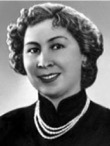
Gamar Hajiaga gizi Almaszadeh – the ballerina, choreographer and teacher, People’s Artist of the USSR, laureate of the USSR State Prize - was born on March 10, 1915 in Baku. After graduation, from 1930 she became a ballet dancer at the Azerbaijan State Academic Opera and Ballet Theatre named after M. Akhundov. In 1933-1936 she studied at the Leningrad Choreographic School. Since 1936 – a soloist of the Azerbaijan State Academic Opera and Ballet Theatre named after M. Akhundov. In 1937 she headed the Azerbaijan State Song and Dance Ensemble at the Azerbaijan State Philharmonic Society. From 1936 she taught at the Baku Choreography School, later became its director (until the late 1990s). Since 1953 – a chief choreographer of the Azerbaijan State Academic Opera and Ballet Theatre named after M. Akhundov, since 1972 – an art director of the ballet troupe. The ballerina’s best works include parties in the national ballets - Gulshen (“Gulshen” by S. Hajibeyov, 1952), Aisha (“Seven Beauties” by Garayev, 1952). In 1953, Almaszade was appointed to the post of the chief choreographer of the State Academic Opera and Ballet Theatre in Baku. As a choreographer, she staged performances - “Gulshen” (1950), “The Red Flower” by R. M. Gliera (1954), “Laurencia” by A. Krein (1956), “Giselle” by A. Adana (1961), “Swan Lake” P. I. Tchaikovsky (1963), “Chernushka” by A. Abbasov (1965), “Shur” by F. Amirov (1968), and “Don Quixote” by L. Minkus (1973). In 1970, she was invited by the Ministry of Culture of Iraq to Baghdad; where under her leadership was founded of the Iraqi Folk Dance Ensemble. Gamar Almaszadeh was awarded a number of orders and medals. She died on April 7, 2006, and was buried on the I Alley of Honor in Baku.
Gara Garayev
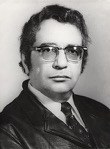
Gara Abulfas oglu Garayev – a composer, teacher and public figure, professor, Hero of Socialist Labor, People’s Artist of the USSR, laureate of the Lenin Prize, and State Prize of the Azerbaijan SSR - was born on February 5, 1918 in Baku. After graduating from the elementary music school, he studied piano at the workers’ faculty of the Baku Conservatory (piano class G. G. Sharoyev) (1930-1935), from 1935 at the same conservatory, he studied on classes of composition under L. M. Rudolph and the basics lessons of the folk music under U. Hajibeyov. In 1946 he graduated from the Moscow Conservatory (class composition D. D. Shostakovich). Since 1946, Gara Garayev has been taught at the Baku Conservatory (in 1949-1952 as a rector, since 1959 - professor). Garayev combined composing activities with active participation in the musical life of Azerbaijan: he was an art director of the Baku Philharmonic Society (1941-1942), head of the music sector of the Institute of Arts of the Academy of Sciences of the Azerbaijan SSR (1948-1949). In 1937, Gara Garayev became a member of the Union of Composers of the Azerbaijan SSR.
In his student years, were written the cantata “Song of the Heart” (1938), two symphonies (1944, 1946), and together with J. Hajiyev, the opera “Veten” (“Motherland”, 1945). The golden fund of the musical art included the symphonic poem “Leyli and Mejnun”, written in 1947 based on the poems of Nizami, the great Azerbaijani humanist of the 12th century. The ballet “Seven Beauties” (1952), which brought a world fame to Garayev, also inspired by the poetic images of Nizami. The composer made significant contribution to music for theater and cinema: his works are known as “Don Quixote”, “The Tale about the Caspian Oilmen”, “Vietnam”, “Optimistic Tragedy”, “Lesson of History”, “Two from one quarter”, “Conquerors of the Sea”, “Golden Echelon”. In the ballet “The Path of Thunder” (1958), written after of the same name novel by P. Abrahams, Garayev addressed the topic of the struggle of peoples for freedom. A new stage in the work of Garayev was marked of the 3rd symphony for chamber orchestra (1965), a concert for violin and orchestra (1967) and the musical “Furious Gascon” based on the play “Cyrano de Bergerac” by E. Rostan. Since 1953 Gara Garayev was the chairman, first secretary of the Union of Composers of the Azerbaijan SSR, since 1962 a secretary of the Union of Composers of the USSR. Gara Garayev was elected as a deputy of the Supreme Soviet of the USSR of the 5-10th convocation and a deputy of the Supreme Council of the Azerbaijan SSR of the 4th convocation. An Academician of the Academy of Sciences of the Azerbaijan SSR (since 1959). He was a member of the Presidium of the Republican Peace Committee. He was awarded the orders and medals. Gara Garayev died on May 13, 1982 in Moscow. He was buried in Baku on the I Alley of Honor.
Haji Zeynalabdin Tagiyev
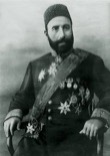
Haji Zeynalabdin Tagi oglu Tagiyev was born in 1838 (in some sources in 1842) in the city of Baku in a very poor family, and passed an honorable way from a simple mason to a millionaire businessman. He entered in the history of the Azerbaijani people as a philanthropist, who had a great influence on the training of national personnel. Tagiyev helped the establishment and development of the education and culture in Azerbaijan. No wonder that the Azerbaijani people still call him the father of the nation. When he was 10 years old, his mother died. The material need that the family felt forced the teenager to go work as a carrier of the solution at the building site. He earned 6 kopecks a day. At the age of 12 he began to cut stone, and at the age of 15 he became a bricklayer. After accumulating a certain sum of money, Tagiyev bought two stores and began to trade a drapery. In 1870, he built a plant with two cauldrons (boilers) for the production of the kerosene, which was in great demand at that time, and two years later invested in oil production - drilled the first wells. In 1886 he founded on an equal footing the company for the extraction and processing of oil, and in 1875 - his own company “H. Z. Tagiyev”, which became a powerful oil industry association and connected all fields of oil business in the course of 25 years. In 1897 Tagiyev established “Caucasus Joint-stock Community on the procession of fibrous materials”, the largest fabric factory in Russia. In 1914 he founded Baku Commercial Bank to conduct trade operations with other local entrepreneurs and was elected as a representative of the bank’s administrative staff.
In 1916, Z. Tagiyev founded the “Tagiyev Fishing Industry Joint-Stock Company” that operated in Azerbaijan and Dagestan. He bought fishing vessels, set up fisheries, fish processing and canning plants. By the end of 1917, the fortune of Z. Tagiyev numbered 30 million rubles. An active and successful entrepreneur generously engaged in charity: he built schools, including for girls, a theater, which still functions today, established newspapers and magazines. With his money, hundreds of young people studied in England, Germany, Russia and France, including such prominent Azerbaijanis as Mammad Emin Rasulzade, Nariman Narimanov and others. Haji Zeynalabdin Tagiyev was awarded by many orders and medals of the Russian Empire, Persia and the Emirate of Bukhara. With the establishment of the communist regime in Azerbaijan in 1920, the property of Tagiyev was nationalized. Haji Zeynalabdin Tagiyev died on September 1, 1924 at the age of 86 near Baku in Mardakan settlement.
Huseyn Arablinski
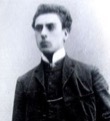
Huseyn Arablinski (Huseynbala Mammad oglu Khalafov) - an Azerbaijani theater and cinema actor, director - was born on March 17, 1881 into a poor family, in Baku. He lost his father at a young age. He was sent by his mother to a religious school. Soon not being able to pay for it, young Huseyn had to drop out. However, with the help of Habib bey Mahmudbeyov, a local teacher who made it possible for children from poor families to attend school, H. Arablinski was admitted to the 3rd Russian-Muslim School, where he studied with Mirza Agha Aliyev, the future People’s Artist of the USSR. H. Mahmudbeyov was also the first one who roused young Arablinski’s interest in acting. One of the theatres agreed to have H. Mahmudbeyov’s students act out incidental and minor characters. It was Kerim’s role in Mirza Fatali Akhundov’s comedy “Vizier of Lankaran Khanate”, which was staged by Jahangir Zeynalov. In 1897–1900, H. Arablinski continued to act small roles. Later he became a star of the national stage and raised a number of great actors, such as Huseyngulu Sarabski, Sidgi Ruhullah, Abbas Mirza Sharifzadeh, Marziya Davudova, Ulvi Rajab and others. H. Arablinski’s real talent was revealed in 1905, when their troupe was on a tour to Lankaran to perform the play “Fakhraddin’s Tragedy” of Najaf bey Vazirov. The actor of the major role had fallen ill and could not attend the rehearsals. Thus the role was given to the 24-year-old H. Arablinski, who made an outstanding performance and in the following years was often chosen for that role.
Since 1907, Huseyn Arablinski worked as a stage director. His roles, such as Shah in “Agha Mohammad Khan Qajar” and Farhad in “The Unhappy Young Man” of A. Hagverdiyev, Khlestakov in “The Government Inspector” of N. Gogol, Heydar bey in “Haji Gara” of M. F. Akhundov, Othello in “Othello” of W. Shakespeare and others expressed his progressive democratic and humanistic ideas and had a great success. On January 12, 1908, there happened an event in Baku that became a landmark in the development of not only the Azerbaijani culture, but also the entire Muslim East. It was the first Azerbaijani opera “Leyli and Majnun” of Uzeyir Hajibeyov, which was staged and directed by Huseynbala Arablinski. The creativity of great H. Arablinski had an impact on work of many prominent Azerbaijani actors. In 1916 he starred in the silent movie “In the Realm of Oil and Millions” (directed by Boris Svetlov) as Lutfali bey. On December 20, 1916, there was held a celebration in the Taghiyev’s Theater (Baku’s first Drama Theater, built by Z. Taghiyev in 1885) on the occasion of the tenth anniversary of “Nijat” Society. It was an anniversary performance of opera “Leyli and Mejnun”, which brought him back many wonderful memories of his first love. He was 35 and despite of being surrounded by friends, he was still single and alone. Huseyn Arablinski was shot dead on March 4, 1919. The actor was killed by his cousin, motivated by personal issues.
Huseyngulu Sarabski
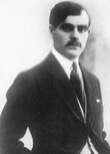
Huseyngulu Malik oglu Rzayev (Sarabski) - an Azerbaijani opera singer (tenor), composer, playwright, stage actor, theatre director, musician (tar) and People’s Artist of the Azerbaijan SSR - was born on March 20, 1879 in the family of oil worker. Young Sarabski had been making a living through smithery and stone dressing. He also was enrolled in Russian night courses for the poor funded by Z. Taghiyev. In 1891, at the age 12, he watched a theatrical performance for the first time. It was staged by amateur actors and called Khan Sarabi adapted from M. F. Akhundov’s play “Sarguzasht-i vazir-i Khan-i Lankaran”. The young man enjoyed the performance and later chose the pseudonym Sarabski reflecting on his first encounter with theatre. Sarabski’s first role was the character of Rasul in N. Narimanov’s “Shamdan bey” play, in 1902. He later acted in dramatic pieces by various Azerbaijani and Western European authors, but it was not until his role in Almansor by H. Heine where his incredible performance of the Hijaz-i Arabi mugham was noticed by composer Uzeyir Hajibeyov leading to Sarabski choosing a career in musical theatre. In 1908, he was assigned the primary role of Majnun in Hajibeyov’s opera “Leyli and Majnun” (which was also the first Azerbaijani and the first Oriental opera in history). In the next 30 years of his career he would perform Majnun in this opera about 400 times. Starting from 1914, a troupe led by Sarabski and conductor (and future composer) M. Magomayev went on tours to Tiflis, Elisabethpol, Vladikavkaz, Tabriz, Rasht and Teheran to perform “Leyli and Majnun” and other pieces.
Being one of the founders of the Azerbaijani professional musical theater, H. Sarabski was also an incredible musician, singer and even an excellent director. He not only played leading roles but also was an art director of such performances as “Rustam and Zohrab”, “Husband and Wife” (1910), “The Cloth Peddler” (“Arshin mal alan”, 1913) and “Leyli and Mejnun” (1915). Being also engaged in public work, he became the chairman of the trade union leader of artists of Azerbaijan in 1920 and also was one of the organizers of the First Congress of Ashugs of Azerbaijan in 1928. With the participation of Sarabski, the Republican House of national creativity was created and led by him in 1932-1945. Between 1923 and 1926 he founded a theatre troupe in Shamakhi and a dramatic theatre in Aghdam. Between 1940 and 1942, Sarabski taught opera and mugham at the Azerbaijan State Conservatoire and at the Asaf Zeynally Music School at the same time. Some of his students like Sara Gadimova and Shovkat Alakbarova became prominent Azerbaijani singers. H.Sarabski died from throat cancer on February 16, 1945 and was buried at the Alley of Honor in Baku. One of the Baku school and street bears the name of eminent musician Huseyngulu Sarabski.
Igor Ashurbeyli
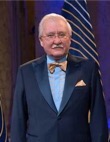
Igor Rauf oglu Ashurbeyli - an Azerbaijani-born Russian scientist, businessman and Head of Nation of Asgardia, the Space Nation, the CEO of Scientific Production Association (SPA) Almaz from 2000 to 2011 - was born on September 9, 1963 in Baku. He is also the founder and Chairman of the Board of Socium Holding. He has a Doctor of Science in Engineering and a PhD in Engineering, with a specialization in Computer Science. The founder of the “space nation” of Asgardia, he was inaugurated as Head of Nation on June 25, 2018. He is a descendant of the Azerbaijani noble family of Ashurbeyovs. The family stems from Ashur khan Avshar. Nadir shah Afshar is representative of this family as well. Nabat khanim Ashurbeyova who had built the Tazapir Mosque, petroleum producer Teymur bey Ashurbeyov and outstanding historian Sara khanim Ashurbeyli are the representatives of the family.
He graduated from the Azerbaijan State Oil Academy in 1985. In 1988, under the Soviet Union’s then new economic policies, he founded Socium, a small software company, serving as its first General Manager. It later became Socium Holding, a holding company with over 10,000 employees at over 30 companies, where Ashurbeyli services as Chairman of the Board. In 1990, Ashurbeyli moved to Moscow. Starting in 1994, he held the positions of Deputy General Manager, and Chairman of the Board at SPA Almaz (later rebranded as GSKB Almaz-Antey), later becoming its Chief Executive Officer (CEO) from 2000 to 2011. Ashurbeyli resigned from SPA Almaz in 2011. From 2011, he was the Chairman of the Board and Scientific Supervisor of KB-1 (Design Bureau-1), a privately held company. From 2004, Ashurbeyli was the Chairman of the Board of the Nonprofit Non-Government Expert Society on Space Threat Defence (ESSTD). In 2014, ESSTD was granted special consultative status with the United Nations Economic and Social Council (ECOSOC). He was awarded Russia’s State Science and Technoly Prize in 2010. On February 5, 2016, Ahurbeyli was awarded the UNESCO Medal for contributions to the development of nanoscience and nanotechnologies during a ceremony held at UNESCO headquarters, Paris. Ashurbeyli founded the Aerospace Independent Research Center in Vienna, Austria, in 2013. In 2014, the Aerospace Independent Research Center began publication of an international space journal, ROOM, of which Ashurbeyli is the editor-in-chief. On October 12, 2016, Ashurbeyli announced in a press conference in Paris, “The birth of the new space nation Asgardia”. Since that time, the nation has grown to exceed 1,000,000 members from around the world.
Iqor Ashurbeyli was awarded the honorary titles - Anniversary Medal – 50 Years of the Moscow Institute of Physics and Technology - September 17, 2001, Medal for Honor and Valor and Golden Olympus Laureate Diploma - November 18, 2003, Medal of Honour - April 23, 2007, International Socrates Award -August 1, 2004, Medal of Honour for Achievements in the Field of Radio Electronics and Communications – February 17, 2010, Medal of Honour – September 1, 2012, Utkin Academic Medal – October 15, 2005, the Prokhorov Engineering Science Gold Medal - October 25, 2006, Silver Medal – The Raspletin Academic of the Soviet Academy of Sciences Award – February 22, 2007, State Science and Technology Prize – March 17, 2010, Gold UNESCO Medal “For contribution to the development of nanoscience and nanotechnologies” – February 5, 2016. Ashurbeyli is the author of over 100 scientific articles, Russian Encyclopaedia of Information and Telecommunications, and 3 monographs. Married, has one son.
Igrar Aliyev

Academician Igrar Habib oglu Aliyev was born on March 14, 1924 in Baku. He studied at the history faculty of Azerbaijan State University (present BSU) in 1940-1945. He entered the postgraduate study of the History Institute of the Academy of Sciences of Azerbaijan in 1945. In 1949 he defended his doctor of philosophy, in 1961 doctoral dissertation in and in 1981 he became a professor. With excellent knowledge of Ancient Greek and Latin languages, I. Aliyev improved his knowledge in the field of Iranian philology in 1962 under the leadership of academician V. V. Struve and other prominent Russian scholars in St.Petersburg, as well as learned a number of dead languages of the Middle East - Akkad, Ancient Jewish and Sumerian languages. In 1980, he was a corresponding member of the Azerbaijan Academy of Sciences, in 2001 he was an active member of ANAS and in 2003 he was elected as an active member of the Azerbaijani Branch of the International Academy of Sciences. From January 1, 1957 to January 17, 1957, he was the head of the historical department of the History Institute of Azerbaijan Academy of Sciences. From 1978 to 11 June 2004 he was the director of that institute and 1981-1984 he worked as an academic secretary of the Social Sciences Department of the Azerbaijan Academy of Sciences.
Igrar Aliyev is an author of 6 monographs and 200 articles on ancient history and archeology of Azerbaijan and ancient East philosophy. He is one of the main authors and editors of 3 volumes of “History of Azerbaijan”. For the first time in the history of Azerbaijan, he began to study the history of the Middle East, which is closely linked with the history of Azerbaijan. In his research, the Midia culture was widely highlighted, and the ethnic history of South Azerbaijan and its suburban provinces, and the description of the catacomb culture in the territory of Azerbaijan was covered. I. Aliyev has been a chairman of the Azerbaijan Toponimation Commission for a long time, deputy chairman of the Committee for Culture and History Monuments Protection and State Awards, Nizami Commission, Scientific Council of the Soviet Encyclopedia of Azerbaijan, editorial staff of the “News” of the National Academy of Sciences of Azerbaijan. I. Aliyev was awarded with the medal “For labor sacrifice”, Order of Friendship of Peoples, Order of Glory (1999) by the decree of the President of the Republic of Azerbaijan Heydar Aliyev, Honorary decrees of Russian and Azerbaijani Academy of Sciences. Academician Igrar Aliyev died on June 11, 2004 in Baku.
Ilham Aliyev

Ilham Heydar oglu Aliyev was born on 24 December 1961 in Baku.
He attended a secondary school No. 6 in Baku from 1967 to 1977. In 1977-1982, he studied at Moscow State University of International Relations (MSUIR). In 1982, he embarked on postgraduate studies at MSUIR. In 1985, he defended a thesis to receive a PhD degree in history. From 1985 to 1990, he gave lectures at Moscow State University of International Relations.
In 1991-1994, he was engaged in a private business sector and headed several private industrial and commercial enterprises. From 1994 to August 2003, he was vice-president and first vice-president of the State Oil Company of Azerbaijan Republic (SOCAR). He has been actively involved in the implementation of national leader Heydar Aliyev's oil strategy. In 1995 and 2000, he was elected to the Milli Majlis (Parliament) of the Republic of Azerbaijan. He has been president of the National Olympic Committee of Azerbaijan since 1997. In 1999, he was elected as deputy chairman, in 2001 as first deputy chairman and in 2005 as chairman of the New Azerbaijan Party. From 2001 to 2003, he headed the Azerbaijani Parliamentary delegation to the Parliamentary Assembly of the Council of Europe (PACE).
In January 2003, he was elected as deputy chairman of the Parliamentary Assembly of the Council of Europe and a member of the PACE Bureau.
On 4 August 2003, following the approval of the Milli Majlis, he was appointed as Prime Minister of the Republic of Azerbaijan. This terminated his power as a member of parliament.
On 15 October 2003, Ilham Aliyev was elected as President of the Republic of Azerbaijan with more than 76 percent of votes.
In 2004, he was awarded a medal and certificate of an honorary member of PACE.
On 15 October 2008, Ilham Aliyev was elected for the second term as President of the Republic of Azerbaijan, after gaining 88.73 per cent of votes.
As a result of the presidential election held on 9 October 2013, Ilham Aliyev was re-elected as President of the Republic of Azerbaijan with 84.54 per cent of votes.
In the election held on April 11, 2018, Ilham Aliyev gained 86.02 percent of votes and has been re-elected as the President of the Republic of Azerbaijan.
Mr. Ilham Aliyev is fluent in Azerbaijani, Russian, English, French, and Turkish languages. He is married and has three children and five grandchildren.
Jafar Jabbarli
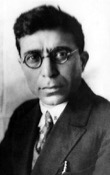
Jafar Gafar oglu Jabbarli –the playwright, poet, theater figure and screenwriter, honored Artist of Azerbaijan, founder of the socialist realism in Azerbaijani drama, was born on March 20, 1899 in the village of Khizi (a small village near Baku) in a poor peasant family. In 1905, he entered the first class of the Muslim-Russian school. In 1915, Jabbarli graduated from the high school and studied electromechanics at the Baku Polytechnic School for the next 3 years. In 1920 he was admitted to Azerbaijani State University to study applied medicine but due to his lack of interest soon switched to Oriental studies. In 1929 he graduated from Azerbaijani State University.
The first poem “The spring” he published in 1915 in the magazine “The school”. The “Babai-Amir” magazine, at the edition of 1915-1916, published the several satirical poems, including feets, which criticized of the deputies of the Duma. Because of that he spent a few days in the gendarmerie. His first plays were “Faithful Saria”, “Faded Flowers”, the stories “The Lion” and “Farhad”, “Mansur and Sitara”, directed against social inequality and injustice. The historical drama “Nasreddin Shah” exposes feudalism in Iran. The historical romantic drama “The Fiery Bride” is set against feudal tyranny. J. Jabbarli also wrote dramatic plays and short stories such as “Sevil”, “Dilara”, “Dilbar”, and “Gulzar”. Two of his plays, “Sevil” and “Almaz” focused on the theme of the role of women, their oppression, struggle, and ultimately, victory over dated patriarchal traditions. Based on the play “Sevil” F. Amirov wrote an opera, which was put on the stage, and also were made a film-ballet and feature film. The performance of J. Jabbarli “Yashar” reflected the real life of the Azerbaijani village of that time. Jafar Jabbarli, as art director and stage director of the Azerbaijani theater, took an active part in its development. Jabbarli’s works have been translated into the several languages around the world, and his plays have been played on the biggest scenes. Jafar Jabbarli died in Baku on December 31, 1934. His house-museum was opened in Khizi and Baku, statues were laid in Baku and Sumgayit. The national film studio “Azerbaijanfilm”, Ganja State Drama Theater, Irevan State Azerbaijan Dramatic Theater, Republican Theater Museum, school and library, streets in the several cities of Azerbaijan, and other cultural enterprises are named after him.
Jahangir Jahangirov
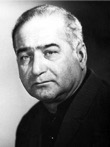
Jahangir Shirgasht oglu Jahangirov, Soviet and Azerbaijani composer, conductor, choirmaster and People’s Artist of the Azerbaijan SSR was born on 20 June 1921, in Balakhani - settlement of Baku. He graduated from the Music College named after A. Zeynally and then from Baku Academy of Music. At the same time, Jahangirov led the choir at the Azerbaijan State Song and Dance Ensemble under the direction of U. Hajibeyov. His first works were also written for the choir. In addition, he reworked folk songs for choral performance. Among his works of this period can be distinguished: choral miniatures written in collaboration with S. Alasgarov, the symphonic vocal poem “Across the river Aras”, the composition “Friendship” consisting of 12 parts, “Azad” and “Fortune of Master” operettas, cantatas “Fuzuli”, “Nasimi”,”Ashig Ali”, oratorio “Sabir” and others.
In 1950, J. Jahangirov was awarded the USSR State Prize, and in 1963, he received the status of People’s Artist of the Azerbaijan SSR. The song genre occupied a special place in his work. His songs in this genre were: “Mother”, “Moonlit Nights”, “Baku”, “Polar Star and Me”, “Hey, Girl”, “Gray-Eyed”, ‘Teymur’s Song” from the movie “The Invincible Battalion”, ‘Song of a Girl” from the film “Koroglu”,“Bayati” from the movie “Indomitable Kura”, the romance “Beautiful-Faced” on the Nizami’s lyrics, the work “Gazelle” for choir, gazelle-romance “I would not hear” on the Fuzuli’s lyrics. The most successful works of composer are “The Harvest” and “Spring Is Coming” suites, “The Indian Beauty” play, the music written for the “Koroglu” movie, “Cairo sketches” (the work written for the folk-instrumental ensemble), “Ballad” (the work written for a symphony orchestra), one-act oratorio “Sabir”, “Symphonic” poem (1972), “Symphonic engravings” (1977), operetta “Just engaged”, etc. Jahangir Jahangirov died on March 25, 1992. He was buried at the Alley of Honor in Baku.
Jahangir Kerimov
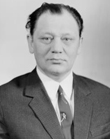
Jahangir Abbas oglu Kerimov was born on July 18, 1923 in Baku. After graduating the Baku Zenith Artillery School in 1942, J. Kerimov was sent to the Transcaucasian Front. He was participant of the war and was dismissed from the ranks of the army on May 29, 1946. In 1946, J. Kerimov graduated from the All-Union Legal Correspondence Institute. He was conferred Ph.D in 1950 and Doctor of Science in 1961. J. Kerimov was elected corresponding member of the Russian Academy of Sciences in 1966 and active member of the Azerbaijan Academy of Sciences in 1967. In 1965-1969, J. Kerimov was vice-rector of the Leningrad State University. He was People’s Deputy of the USSR and a member of the Supreme Council during 1989-1991.
He was a specialist in law science, social planning and governance, philosophical problems of state and law theory. His basic works were devoted to philosophy and sociological problems of law, state and law theory and legislation technology, application of cybernetics in social investigations, the problems of social administration and planning. About 40 monographs and over 700 scientific articles by the scientist have been published. J. Kerimov was academician of the Serbian Academy of Sciences and Arts, the Finnish Academy of Science and Letters, the Montenegrin Academy of Sciences and Arts, the Russian Academy of Social Sciences, the International Academy of Information Processes and Technologies, the Russian Academy of Political Sciences and the International Informatization Academy. He also was chief research officer of the Institute of Socio-Political Research under the Russian Academy of Sciences (ISPR RAS) and Moscow State Law Academy and a member of the Social Sciences Department of the Russian Academy of Sciences. Laureate of the USSR State Prize J. Kerimov was awarded orders and medals of many foreign countries. Jahangir Kerimov died on February 22, 2015 in Moscow.
Jamil Aliyev

Jamil Aziz oglu Aliyev was born on March 30, 1946, in Baku. He graduated from the Azerbaijan State Medical Institute in 1968. In 1968-1972, he worked as a laboratory assistant in the Azerbaijan State Advanced Training Institute for Doctors named after Aziz Aliyev. In 1973-1978, he served as a research worker and senior research worker in All-Union Oncology Center of Russian Academy of Medical Sciences. Since 1978, he has headed the Department of General Oncology of Scientific Research Institute of Roentgenology, Radiology and Oncology (now National Center of Oncology) of the Ministry of Health of the Azerbaijan Republic. In 1973, J.A.Aliyev defended PhD thesis on “Treatment and diagnostics of cancer of lower lip skin and oral mucous membrane” on the specialty of “oncology” in Baku. In 1978, J. A. Aliyev defended doctoral dissertation on “Plastic surgery operation on melanoma and skin cancer” on the specialty of “oncology” at the All-Union Oncological Center of Russian Academy of Medical Sciences. In 1987, J. A. Aliyev was given a scientific degree of professor by Higher Attestation Commission of the USSR for his contributions in the field of training scientific personnel on the specialty of oncology.
Academician J. A. Aliyev is the author of 17 monographs published in Baku and Moscow (one of them was published in English), resources for students, 10 inventions, about 600 scientific articles. Honored Science Worker of the Republic of Azerbaijan, Honorary Professor of Hammersmith Hospital of London University, active member of New-York Academy, Member of European Oncologists Society, Chairman of Azerbaijan Committee of International Organization “Physiscians for the Prevention of Nuclear War” Jamil Aliyev was awarded the prize named after Academician of the ANAS M. Mirgasimov for fundamental scientific works on the study of oncological problems of subclinical pathology of the liver cancer. Academician J.A.Aliyev was awarded the “Glory” and “Honor” orders of the Republic of Azerbaijan and United Nations “Science and Peace Prize” for his long-term fruitful activity in Azerbaijan and highly scientifically practical achievements in the field of oncology.
Kerim Kerimov

Kerim Abbaseli oglu Kerimov - a Soviet rocket scientist, academician, one of the founders of the Soviet space industry, and for many years a central figure in the Soviet space program - was born on November 14, 1917 in a family of an engineer-technologist in Baku. After graduation from the Azerbaijan Industrial Institute in 1942, Kerimov continued his education at the Dzerzhinsky Artillery Academy, where he committed himself to design and development of rocket systems. An expert in rocket technology, he worked during World War II on the inspection and acceptance of the famous Katyusha rocket launchers. His work was honoured with the Order of the Red Star. Kerim Kerimov has been involved in Soviet aeronautics from its inception. After World War II, Kerimov worked on the Soviet inter-continental ballistic missile program, which, rising by 1960, had become the main program of the Third Directorate of the Main Directorate of Missile Weapons (GURVO) of the Ministry of Defense of the USSR, that oversaw secret test launches. Along with other rocketry experts, he was sent to Germany in 1946 to collect information on the German V-2 rocket. In 1964 he became head of the newly formed Central Directorate of the Space Forces of the Ministry of Defense of the USSR. Following the death of Sergei Korolev in 1966, Kerimov was appointed Chairman of the State Commission on Piloted Flights and headed it for 25 years (1966 – 1991). He supervised every stage of development and operation of both manned space complexes as well as unmanned interplanetary stations for former Soviet Union. Kerimov was also the Head of Chief Directorate of the Ministry of the General Machine Building in 1965-1974, which was engaged in creation of rocket systems. After his retirement in 1991, Kerimov was a Consultant of the Mission Control Center of the Russian Federal Space Agency, and wrote “The Way to Space”, a history of the Soviet space program.
Kerim Kerimov was a Hero of Socialist Labour, laureate of the Stalin, Lenin and State prizes of the Soviet Union, lieutenant-general of Soviet Army. Kerim Kerimov died on March 29, 2003 in Moscow.
Khoshbakht Yusifzadeh
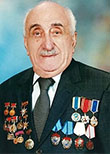
Khoshbakht Baghi oglu Yusifzade was born in the village of Pirshaghi of Baku on January 14, 1930. He graduated from high school in 1947 and entered the Geological Exploration Faculty of Industrial Institute named after M. Azizbayov (now Azerbaijan State Oil and Industry University). In 1952, he graduated from the Geology and Exploration of Oil and Gas Deposits department of the Institute and qualified as a mining geologist. Khoshbakht Yusifzade started his labour activity in “Gosspetsnefteproject” department of the USSR Ministry of Oil Industry in Baku, but later he worked as a senior engineer and department chief at the newly established “Denizneft’ Union. He was appointed senior geologist of the first mine of “Gurganneft” trust (the present “Neft Dashlari’ OGE Department) In March 1954, he worked as a chief geologist of “Neft Dashlari” plant of the research and the production in 1958-1959. He headed the plant in 1959-1960. He was appointed Deputy Chief, Chief Geologist of oil fields (the “Gurganneft”) at the 22nd Congress of the CPSU in September 1960 and worked in that position until October 1963. He worked as Deputy Chief Geologist of the “Bashdenizneft” Department and then as Head of the Department. He headed the Geological Exploration Department of “Denizneft” Production Association, and was Deputy Chief Geologist from 1963 to 1970. He worked as a Deputy Director General and Chief Geologist of “Khazardenizneft” Union, “Khazardenizneft” Production Association, All-Union “Khazardanizneftgazsanaye” Union, “Khazardanizneftgaz” Production Association in 1970-1992. In 1992-1994, Khoshbakht Yusifzade worked as a first Vice President of “Azerineft” State Concern, an Adviser to the President of SOCAR, in 1994-2004, he served as a Vice President for Geology, Geophysics and Field Development of SOCAR. Since 2004, he has been the first Vice-President of the State Oil Company of the Republic of Azerbaijan on Geology, Geophysics and Field Development.
In 1960, Kh. Yusifzade obtained a scientific degree - Candidate of Geological and Mineralogical Sciences, and in 1987, Doctor of Geological and Mineralogical Sciences. In 2005, he was given a title of Professor. In April 2007, he was elected a full member of the Azerbaijan National Academy of Sciences. As a result of the introduction of a number of new methods and progressive methods under Khoshbakht Yusifzade’s leadership and direct involvement, 20 oil and gas condensate deposits have been discovered in the Caspian Sea. For his great contribution to the development of oil and gas extraction, Khoshbakht Yusifzade was awarded “Istiglal” (2000), “Glory” (2004), “Labor” (2017) Orders of the Republic of Azerbaijan. Gold Medal of Nizami Ganjavi was conferred on him in 2018. Khoshbakht Yusifzade’s book “The Years and Tracks of My Life” was published in 2010.
Lev Landau
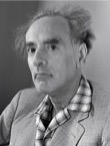
Lev Davidovich Landau was born on January 22, 1908 in oil engineer family in Baku. L. Landau graduated at age 13 from gymnasium in Baku. L. Landau went to the Baku Economic College, as he was too young for university. In 1922, at the age of 14 he entered the Baku State University. He was admitted to two faculties - physics-mathematics and chemistry in the same year. In 1924, Landau was transferred to the Physics-Mathematics Faculty of the Leningrad State University (LDU), graduating in 1927. At the age of 21, at the Leningrad Physico-Technical Institute , he received his PhD in Sciences. In 1929, he was sent to Europe for the first time, and worked at the Institute of Theoretical Physics with Niels Bohr. In 1932-1937, Landau led the Theoretical Physics Department of the Mechanical and Mechanical Institute of Kharkov. In 1936-1937, Landau created the theory of “Second Phases kind transformations of Phases” and the Theory of “Middle state of highconductors”, and published scientific articles on these problems. In 1937, he was invited to the Moscow Institute for Physical Problems and led the department of theory at that institute. The school created by him has given prominent physics to the Soviet science. The repression that enveloped whole country in 1937 did not bypass the great scientist. On April 17, 1938 Landau was arrested by the security services and he had to stay in jail untill April 19, 1939. Peter Kapitza and Niels Bohr both wrote letters to Stalin insisting that Landau must be released. He was released on April 29, 1939.
On January 7, 1962, Lev Landau suffered a very serious auto accident. In November of that year, being in the hospital, Landau received a telegram about awarding him with the Nobel Prize. For the first time in the history of the Nobel Committee, as the famous physicist L. Landau was unable to attend Stockholm, the Swedish ambassador to Moscow presented his Nobel Prize to the hospital. His health was not completely restored and it was impossible to save the life of the founder of Soviet theoretical physics, Lev Landau and he died on April 1, 1968 in Moscow. He was buried at the Novodevichye Cemetery in Moscow. Lev Landau was awarded many highest awards of the USSR. A memorial plaque has been preserved on building in Baku, where Lev Landau lived. The Institute for Theoretical Physics in Moscow was named after Lev Landau. A lunar impact crater on the far side of the Moon was named after Lev Landau. Landau is also honored by a crater discovered in 1972. In 2008, Russia issued a postage stamp and a commemorative silver coin dedicated to Landau. Feature films and documentaries dedicated to the memory of Lev Landau have been shot. His son, Igor Landau (1946-2011) was PhD in Physics and Mathematics.
Leyla Mammadbeyova
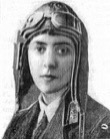
Leyla Alasgar gizi Mammadbeyova - the first Azerbaijani female aviator, and the first female pilot in the Caucasus, Southern Europe and the Middle East - was born on September 17, 1909 in Baku in the family of an employee. Primary education she received in Baku. On the eve of the March genocide carried out by Armenians against Azerbaijanis in 1918, together with her family she settled in Astrakhan. After the establishment of the Soviet power in Azerbaijan, the family returned to Baku. In 1931, Leyla Mammadbeyova entered the Baku Aviation College and after its graduation in 1932, acquired the profession of a pilot. In 1931, at the Baku Airclub flying the U-2 plane, she performed her first flight. She continued her education at the Aviation School in Moscow in 1932, and graduated from it as a pilot instructor. On March 17, 1933, Mammadbeyova for the first time jumped with a parachute at Tushino Airfield in Moscow and took the second place in the All-Union competition in parachuting among women. In 1933-1941, Mammadbeyova worked as a pilot instructor at the Baku Airclub. In 1941-1942, she was the Head of the Pilots Club, in 1942-1947 - the Head of the Glider and Parachute Club, and in 1947-1949 - the commander of the Baku Airclub. In 1941, she was awarded the rank of Squadron Leader.
In 1936, for merits in aviation and social activities she was awarded the Order of the Badge of Honor of the USSR, in 1945 - medal “For the Defense of the Caucasus”, in 1946 - medals “For the Difference in labor”, “For Labor Valor” and “Veteran of Labor”. The book “Leyla Mammadbeyova - the first woman pilot of the East” (by Narmin Mahmudova) is dedicated to her. Leyla Mammadbeyova died in July 1989. She was buried at the II Alley of Honor.
Leyla Vakilova
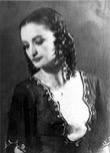
Leyla Mahad gizi Vakilova - an Azerbaijani ballerina, ballet instructor and the People’s Artist of the Azerbaijan SSR – was born on January 29, 1927 into the well-known Vakilovs family, in Baku. Her parents were scholars. L. Vakilova took her first ballet lessons at the Baku State School of Choreography. She was also a student of the first Azerbaijani ballerina Gamar Almaszadeh. In 1945, she left for Moscow to gain experience in the field of ballet at the Moscow State Academy of Choreography. After returning to Baku in 1946, she made her first ballet performance as Tao Khoa in The Red Poppy by R. Glière at the Azerbaijan State Academic Opera and Ballet Theatre where she worked for the next 30 years.
The dancer performed all classical and national repertoire. Leyla Vakilova created expressive images in the national ballet, combining classical dance technique and particularities of Azerbaijani folk choreography in performing art. Her early performances in Azerbaijani ballets by A. Badalbeyli, S. Hajibeyov, G. Garayev, F. Amirov and A. Malikov brought her great fame, which was recognized by the awarding of the Order of Lenin to her. She also appeared in a number of films. In 1967, Vakilova was granted the title of the People’s Artist of the USSR. She also became head of the Azerbaijan State Folk Song and Dance Ensemble founded by her teacher G. Almaszadeh. From 1953, she taught ballet at the Baku School of Choreography. In 1972, at the age of 45, Leyla Vakilova retired from ballet, even though she continued her teaching career at the School of Choreography until her death in 1999. She passed away on 21 February 1999 and was buried at the Alley of Honor.
Lotfi Zadeh
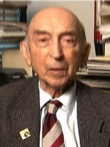
Lotfi Zadeh was born on February 4, 1921 in Baku, Azerbaijan, as Lotfi Aliaskerzadeh. In 1931, when Zadeh was ten years old, his family moved to Tehran in Iran, his father’s homeland. In 1942 he graduated from the Electrical Engineering Tehran University in Iran. In 1943, Zadeh decided to immigrate to the United States. He arrived in mid-1944 and enrolled at the Massachusetts Institute of Technology (MIT) and in the same year in graduate school. While in the United States, he changed his name to Lotfi Asker Zadeh. He received an MS (Master of Science) degree in electrical engineering from MIT (Massachusetts Institute of Technology) in 1946, and then applied to Columbia University. He received his Ph.D. (Doctor of Philosophy) in electrical engineering from Columbia in 1949, and became an assistant professor the next year. Zadeh taught for ten years at Columbia, was promoted to Full Professor in 1957. Since 1959 he worked as a Professor at the Berkley University and since 1963 he headed a Chair of Electrical Engineering and Computer Science at this University. Professor Lotfi Zadeh had a professorship at the University of California, Berkeley, until the end of his life and was the director of the Institute for Soft Computing.
L. Zadeh has developed 5 fundamental scientific theories. He founded the Zadeh Institute for Information Technology - ZIFIT in Berkley, USA. One of the theories of L. Zadeh known in science as z-transforms laid foundation for the creation of discrete and digital control, information and communications systems. The famous State Space, theories of control and tracking of dynamic systems developed by Zadeh constitute the basis of the modern science of control. Based on these theories NASA designs, develops and implements various purpose control systems. The most popular theory of Zadeh is the Fuzzy Logic Theory. This theory has extended the theory of binary sets that forms the foundation of mathematics through introduction of the concept of Fuzzy Sets. In science the introduction of fuzzy dimension has created an opportunity for more adequate reflection of uncertainty present in processes developing in nature and society. Soft Computing theory of Zadeh constitutes the basis of new technologies through intellectual combination of methods of fuzzy logic, artificial neuron networks, genetic algorithms, theory of khaos and probabilistic inference paradigms. In computers working on the basis of “Verbally operated computers” theory of Zadeh the words and phrases are used for granulation of information. Computers of this type are capable of making approximate logical inference and are the most adequate models of human brain, which process the information on the basis of representations. The Theory of Representations of Zadeh offers methods that allow quick obtaining of complete information about surrounding world without performing of accurate measurements. The purpose of this theory is to develop principles and methods for the creation of artificial knowledge representation systems similar to those of human being. L. Zadeh is considered to be the most referenced scientific author in the world. Just in 1990-2000 there were more than 36000 references made with regard of his articles and monographs. He has received a big number of the awards and medals from various honour societies. He was an Honoured Doctor of the many foreign state and public organizations. Lotfi Zadeh has been elected as an Honoured Member of the National Academy of Sciences of the Republic of Azerbaijan. Lotfi Zadeh died on September 6, 2017 and was buried in Baku on the Alley of Honor.
Magsud and Rustam Ibrahimbeyovs

The brothers Magsud and Rustam Ibrahimbeyov have great merits in the development of the Azerbaijani literature, culture and art. Magsud Mammedibrahim oglu Ibrahimbeyov was born on May 11, 1935 in Baku. After graduating from high school, in 1955-1960, he received a higher education at the construction faculty of the Azerbaijan Polytechnic Institute. In the years of 1962- 1973 he studied at the script writing and film directing higher courses in Moscow. As a screenwriter and director, Magsud Ibrahimbeyov made a significant contribution to the development of cinematography. Films on scenarios of Magsud Ibrahimbeyov, such as “A man for a young woman”, “Waltz of golden calves”, “One for all”, “Interrupted serenade”, “Because I am Aivar Lidac”, “A little spring holiday”, “A cozy place in the park ”,“ Who goes to Truskavets?”, “On a Beautiful Day”,“ Mesozoic history ”,“ Mystery of the mountain underground ”,“You are my song”,“ Let him stay with us”,“ Main interview ”,“I remember you, teacher”,“ The Last Night of the Childhood” and others are included in the foundation of the national cinematography. In 1979 he was awarded the honorary title “Honored Art Worker”, in 1998 - the People’s Writer of Azerbaijan. On May 10, 2005, for many years of fruitful and meaningful activity in the development of the Azerbaijani culture and literature, he was awarded by the “Istiglal Order” (Sovereignty) - the highest supreme order of the Republic of Azerbaijan.
Magsud Ibrahimbeyov died on March 22, 2016. He was buried on the I Alley of Honor. The brother of Magsud Ibrahimbeyov, Rustam Ibrahimbeyov, was born on February 5, 1939 in Baku. In 1962, he graduated from the Azerbaijan Oil and Chemistry Institute, and then continued his postgraduate studies at the Institute of Cybernetics of the USSR Academy of Sciences in Moscow. Then he studied script writing and film directing at the Gerasimov Institute of Cinematography, 1967-1974 (All-Russian State University of Cinematography named after S. A. Gerasimov). His writing credits include more than 40 film and television scripts, numerous plays and pieces of prose, and nearly all of his scripts were eventually made into full feature or TV films, including “White Sun of the Desert” (1970, Белое солнце пустыни), “Interrogation” (1979, Допрос), “Guard Me, My Talisman” (1986, Храни меня, мой талисман), “Urga” (Урга, Территория любви, 1991), “Burnt by the Sun” (1994, Утомлённые солнцем), “The Barber of Siberia” (1998, Сибирский цирюльник), “East/West” (1999), “Broken Bridges” (2004) and “Nomad” (2005/2007). “Urga”, Territory of Love, (directed by N. Mikhalkov) and released in North America as “Close to Eden”, won the Golden Lion Award in the Venice Film Festival, as well as the Felix Award in Berlin as Best European Film. “Burnt by the Sun” (directed by Nikita Mikhalkov) received an American Film Academy Award (Oscar) for the Best Foreign Language Film in 1995, and Grand Prize of the Jury at 47th Cannes International Film Festival in 1994. Rustam Ibrahimbeyov is a member of the European Film Academy and the American Academy of Motion Picture Arts and Sciences. He is USSR State Prize Winner. Rustam Ibrahimbeyov was awarded by the Order of “Shohrat”.
Mammad Arif Dadashzadeh
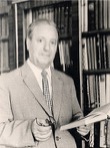
Mammad Arif Maharram oglu Dadashzadeh was born on June 10, 1904 in Baku. He graduated from the Baku State Institute of Public Education and Eastern faculty of ASU (1920-1925).He was a post-graduate student at the Soviet-East People’s Scientific Research Institute in Moscow (1925-1928). He defended his Ph.D.(1944), doctor (1954) dissertations, became professor (1955). He was elected corresponding member of ANAS (1955) and an active member (1958). He worked as a senior lecturer, assistant professor of the Russian Literature department of the Azerbaijan Pedagogical Institute, head of the department of Russian Literature of ASU (1932-1938), senior research fellow at the Institute of Literature and Language of the USSR AS’s Azerbaijan branch (1938-1939), director (1939-1950, 1957), editor-in-chief of “For the Fatherland” (1941-1945), Deputy Minister of Education of Azerbaijan (1946). Academician-Secretary of the Social Sciences Department of Azerbaijan AS (1959), then Vice President of the AAS (1960-1975). Chairman of the Terminology Committee under the Presidium of the Azerbaijan AS (1957-1975), Chairman of the Supreme Soviet of the Republic of Azerbaijan (1963-1967).
For the first time he wrote “History of Soviet Literature in Azerbaijan” (1944). The scientist’s monographs “Jafar Jabbarly’s creative way” (1956) and “Samad Vurgun’s drama” (1964), “Literature of the Azerbaijani people” (1958), “History of Azerbaijan literature” (1972) are one of the fundamental works of our national literary criticism. The publication of two-volume “History of Azerbaijani Literature” (1943-1944), three-volume “History of Azerbaijan Literature” (1957-1960), “Azerbaijan Historical essays of Soviet Literature” (1963), “Azerbaijani Soviet Literature History” (1967) is related to the name of M. Arif and his scientific activity. He was awarded with medals such as Honored Scientist (1960), laureate of the Azerbaijan State Prize (1974), Lenin Order (1971), twice the Red Banner Order (1939-1964), October Revolution Order (1974) . Mammad Arif died in Baku on December 27, 1975 and was buried in the second Alley of Honour. One of the streets in Baku, the Library of the Writers’ Union and a secondary school in the Shurabad district were named after Academician Mammad Arif. Mammad Arif Dadashzadeh’s son Araz Dadashzadeh (1936-1990) was a literary critic, literary man, and an Honoured Scientist.
Mammad Amin Rasulzade
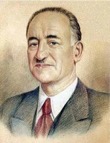
Mammad Amin Rasulzade - a prominent Azerbaijani statesman, public figure and one of the of the political leaders who founded of the Azerbaijan Democratic Republic (1918-1920) - was born on January 31, 1884, in Novkhani (near Baku). He received his primary education at the Russian-Muslim Secondary School and continued his studies at the Technical College in Baku. In his years of study he created “Muslim Youth Organization Musavat”, first secret organization in Azerbaijani contemporary history. Since 1903 Rasulzade began writing articles in various opposition newspapers and magazines. At that time, his anti-monarchist platform and his demands for the national autonomy of Azerbaijan aligned him with Social Democrats and future Communists. In 1904 he founded the first Muslim social-democrat organization “Hummet” and became editor-in-chief of its newspapers, “Tekamül” (1906-1907) and “Yoldaş” (1907). Rasulzade also published many articles in non-partisan newspapers such as “Hayat”, “Irshad” and also at the journal “Fuyuzat”. His dramatic play entitled “The Lights in the Darkness” was staged in Baku in 1908. In 1909, persecuted by the Russian Administration, Rasulzade left for Persia to participate in the Constitutional Revolution of 1905-1911. While in Persia, Rasulzade edited the newspaper “Iran-e-Azad”. Rasulzade became one of the founders of the Democratic Party of Iran and began publishing its newspaper called “Iran-e Nou”, which was the first modern-type newspaper in Iran’s history. In 1911 he also published his book “Saadet-e bashar” (Happiness of mankind) in defense of revolution. After Russian troops entered Iran in 1911 and put end of the Constitutional Revolution in cooperation with the British and Royal Court of Iran, Rasulzade fled to Istanbul, where he founded the journal “Türk Yurdu” (“Land of Turks”), in which he published his famous article “Iranian Turks”.
After the Amnesty Act of 1913, dedicated to the 300th anniversary of the Royal Romanov Dynasty, Rasulzade returned to Baku, left the “Hummet” party he was previously member of, and joined then the secret Musavat (Equality) party in 1913. This party was founded in 1911, initially propagandized pan-Islamic, pan-Turkic and socialist ideas, or, more precisely, pan-Islamic, but with affection for closer cultural ties with the Turkic world, which ultimately became the nationalist party of Azerbaijan. In 1915 he started to publish party’s newspaper “Açıq Söz” (Open Word) which lasted till 1918. When February Revolution happened, Musavat together with the other secret political parties in Russian Empire quickly legalized and became a leading party of Caucasian Muslims after it merged with Party of Turkic Federalists, headed by Nasibbey Usubbeyli. October revolution of 1917 lead to secession of Transcaucasia from Russia, and Rasulzade became head of the Muslim faction in the Seym, parliament of Transcaucasian Federation. After the dissolution of the Transcaucasian Federation, Muslim faction re-organized into the Azerbaijani National Council, whose head Rasulzade was unanimously elected in May 1918.
On May 28, 1918 the Azerbaijani National Council, headed by Rasulzade, declared an independent Azerbaijani Republic. And even though Rasulzade never held any governmental post in either of the Cabinets of Ministers, as an active member of the Parliament he remained a kind of ideological leader of the newly-formed state until its collapse in May 1920. In 1919 Rasulzade also initiated the establishment of the Baku State University together with Rashid khan Kaplanov, the Minister of Education, with the funding of oil baron Haji Zeynalabdin Tagiyev. Rasulzade taught Ottoman literature at the University. “The banner of liberty once hoisted will never be lowered again!” -this famous phrase by Rasulzade would later become one of the most popular Azerbaijani slogans during the demonstrations of the 1990s, said on the eve of the collapse of the Soviet Union. In August 1920, Rasulzade was arrested by the Soviets. Due to the fact that in the past Joseph Stalin supported him, Rasulzade was released and taken from Baku. For the next two years, Rasulzade worked as the press representative at the Commissioner on Nations in Moscow. He was seconded to Finland in 1922 and he never returned. For the rest of his life, Rasulzade lived as an exile in Poland (1938), Romania (1940) and finally, after the World War II, in Ankara (Turkey) in 1947. He died on March 6, 1955. In the more than 30 years spent in exile, Rasulzade published a number of serious political works dedicated to Azerbaijan. His literary legacy still calls for sound analysis and thorough evaluation.
Mammadhasan Hajinsky
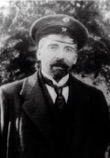
Mammadhasan Jafargulu oglu Hajinsky - a statesman and urban planner architect- was born in Baku on March 3, 1875. He graduated from Baku Realny School and then Peterburg Technical School in 1902 with an engineering degree. In 1902, M. Hajinsky worked at construction of a Russian oil refinery being built by the Azerbaijani businessman Shamsi Asadullayev before he moved back to Azerbaijan and was appointed the director of construction department of Baku municipality. In 1904, M. Hacinsky, M. G. Movsumov and M. A. Rasulzade established the “Hummat” group under the Baku Committee of RSDFP. In 1905, M. Azizbayov, N. Narimanov and other communists of Azerbaijan joined this group. In the years 1904-1905, the group published sixth issues of newspaper “Hummat”. In 1911, M. Hajinsky joined the Muslim Democratic Musavat Party. M. Hajinsky attached great importance to renovation of the city. During the time he held this position, he made significant contributions to architectural improvements of Baku. Under his management, the construction of the Baku Boulevard was completed in 1911, the streets were named and houses were numbered. At the initiative of M. Hajinsky, plan of actions was prepared for the reconstruction of the Shirvanshahs’ Palace. In 1913, he headed the municipality for a brief period of time. After the February Revolution of 1917 in Russia M. Hajinsky took part in the congress of Muslims in Baku and Moscow. At the joint congress of the Turkish National Federals Party and Muslim Democratic Party that was later named “Musavat” held in October 1917, he was elected member to the central committee of Musavat party. On November 15, 1917, he was appointed deputy Commissar of Industry and Trade of Transcaucasian Commissariat and from April 22, 1918 he served as the Minister of Industry and Trade of Transcaucasian Democratic Federative Republic.
On May 28, 1918, when the Azerbaijan Democratic Republic (ADR) was proclaimed, Hajinsky was appointed the Minister of Foreign Affairs within the first Cabinet of the Government established by the Prime Minister Fatali khan Khoyski. During the Second Cabinet he served first as Minister of Foreign Affairs (28 May - 7 December 1918), then Minister of Finance, in the Third Cabinet as Minister of State Control, and in the fifth cabinet, he served as the Minister of Home Affairs, then Minister of Industry and Trade. On April 1, 1920, Hajinsky was put in charge of forming the new cabinet of ADR. Intending to establish a coalition government, he held negotiations with all fractions in the Azerbaijani Parliament including the Bolsheviks. By inviting the Bolsheviks to the new government, Hajinsky hoped to slow down the advance of the 11th Red Army which was already near the Samur bridge, on the Azerbaijani-Russian border and have the detachments of Azerbaijani Army relocate to Baku. Most of the Azerbaijani army units were on the frontline in Mountainous (Nagorno) Karabakh fighting the Dashnak uprising. On April 22, Bolsheviks rejected Hajinsky’s offer and he notified the acting speaker of the National Assembly, Mammad Yusif Jafarov that the government was in no position to be formed. At the same time, Hajinsky left the ranks of Musavat party and officially joined the Bolshevik Party. With the invasion of the Red Army on April 28, 1920 Azerbaijan Democratic Republic ceased to exist. During the Soviet rule, Hajinsky held leading positions in the Agricultural Council of Azerbaijan and served as deputy chairman of Transcaucasian State Planning Committee. Mammadhasan Hajinsky was arrested on December 3, 1930. He was diagnosed with tuberculosis in prison. According to the investigation materials, he did not tolerate torture and committed suicide on February 9, 1931 in the prison in Tiflis.
Mammadyusif Jafarov
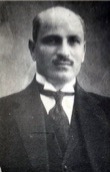
Mammadyusif Hajibaba oglu Jafarov - a statesman and political figure - was born on March 14, 1885 in Baku. After completion of his secondary education in Baku, he studied at the Moscow State University and graduated with honours from the Faculty of Law in 1912. He was elected to the State Duma of Russia on October 1912, where he was the only parliamentarian representing the Azerbaijani population of Baku, Elizavetpol (Ganja) and Irevan provinces. For almost five years (1912-1917), as a member of the Russian Parliament, Jafarov was among those most active in efforts to abolish religious restrictions of the Moslem population of the Russian Empire, and one of the most outspoken advocates for the indigenous inhabitants of Central Asia who were suppressed by settlers from other parts of the Empire. After Duma, Jafarov pushed for a local administrative government for the Caucasus. Despite the fact that he was one of the youngest members of the Russian Parliament, Jafarov managed to gain the high esteem of his colleagues, and was known as a capable lawyer, an excellent speaker and a person with strong views and convictions. During WWI, as a member of the ad hoc committee of the Duma for field hospitals, Jafarov spent much of his time on the Caucasian front, organizing relief for the civilian victims of war. The collapse of the Russian Empire (October 1917) and the subsequent foundation of independent states in Transcaucasia constituted a new stage of Jafarov's public activities.
When Azerbaijan Democratic Republic was proclaimed on May 28, 1918, Jafarov was appointed the Minister of Industry and Trade within the new Cabinet of Azerbaijan established by Prime Minister Fatali Khan Khoyski. When the first cabinet was dissolved, he left his post and later served as a diplomatic representative of Azerbaijan in the Georgian government. On March 14, 1919, Jafarov was appointed Minister of Foreign Affairs of Azerbaijan by the new government of Prime Minister Nasib Yusifbeyli. Jafarov is credited for his extensive work in disseminating the information about Azerbaijan in the international community. In October 1919, he joined the Musavat party. In December of the same year, Jafarov resigned as the cabinet of Yusifbeyli dissolved. In February 1920, he was appointed Deputy Speaker of Parliament of Azerbaijan. Due to absence of the Speaker Alimardan Topchubashov who was at the Versailles Peace Conference and eventually achieved the de facto recognition of Azerbaijan Democratic Republic in January by the Council of Allied Powers, Jafarov served as the acting speaker and head of government until April 27, 1920 when Azerbaijan was occupied by Bolshevik 11th Red Army and ADR ceased to exist. On April 27, 1920, at 11 pm the Bolsheviks forced him to sign the documents of peaceful surrender of the Azerbaijani government to Bolsheviks. During the Soviet rule, Jafarov worked as a legal adviser in various industrial enterprises. He died on May 15, 1938 in Baku and was buried in Shaghan village.
Maral Rahmanzadeh

Maral Yusif gizi Rahmanzadeh - an Azerbaijani graphic artist, People’s Artist of Azerbaijan (1964), the recipient of the State Prize, the author of a series of drawings and autolithographs dedicated to an offshore oil fields and book illustrations - was born on July 23, 1916, in Baku. In 1930–1933, she studied at the Azerbaijan State Art School. In 1934–1940, she continued her education at the Moscow School of Painting, Sculpture and Architecture (Moscow State Academic Art Institute named after V. I. Surikov). Her most productive area was within the graphic genre. M. Rahmanzadeh created a series of easel paintings of patriotic content during the Great Patriotic War. In 1945, she designed the books “Dehname” by Khatai and “The Land of Fire” by A. Zohrabbeyov. In the post-war period Rahmanzadeh intensively worked in the sphere of easel graphic. In 1947, series of “Petroleum” autolithography consisting of 10 lists which showed the history of petroleum land was exhibited on jubilee exhibition for the first time. The series included “Fire Worshippers”, “A New Enterprise”, “On the Oilrig”, “Jack-pump” and “Fountain Hammered to a Pipe”. M. Rahmanzadeh displayed her love for her native country in a series of works called “My Azerbaijan” (1965-1982). The historical novel “Sword and Pen” of M. S. Ordubadi was also illustrated by M. Rahmanzadeh and published in 1956, in Baku. In 1963, she illustrated the academic publications of “Azerbaijani fairytales”. The bright and multi-faceted creativity of Maral Rahmanzadeh would gain popularity far beyond the borders of Azerbaijan. Her works adorn many world-renowned museums, and enjoy the same success in the most “high-profile” and authoritative exhibitions throughout the world. She was honoured: People’s Artist, the Order “Shohrat” (1996) and laureate of the State Prize were no more than she deserved for her contribution to the nation’s visual arts. Maral Rahmanzadeh passed away on March 16, 2008.
Mehdi Huseynzade
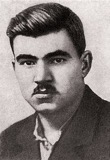
Mehdi Hanifa oglu Huseynzade (Mikhailo) was born on December 22, 1918 in Novkhani village of Baku. His aunt brought up Mehdi and his sisters, who had lost their parents at a very early age. In 1925, he attended the 7-year school No. 77. His first teachers were famous writer Suleyman Sani Akhundov and outstanding composer Said Rustamov. In 1932-1936, he studied at the Baku Art School. He finished the school with high marks, went to Leningrad (now Saint Petersburg), and wanted to continue his education at the Art Academy. But when that did not happen, he entered the French department of the Institute of Foreign Languages. In 1940, due to financial problems, he left the 4th year of the course and returned to Baku, where he entered the 3rd year in the literature faculty of the Azerbaijani Pedagogical Institute. In 1941, Huseynzade was called up to the army and participated in the battle of Stalingrad as commanding officer of a mortar battery, having finished military school in Tbilisi. He was badly wounded in a battle in June 1942 and was captured by the Germans. He learned the German language while in captivity. He had only one goal then – to escape. When the Germans suggested that Mehdi study in the counter-espionage school, he agreed. Events that followed show that Mehdi applied what he had learned at the school in operations against Hitler’s army, and his name became renowned along the whole Adriatic coastline. Mehdi and his friends, having escaped, joined the 9th Garibaldi Italian-Yugoslav partisan corps. They were active in operations against the fascist invaders from the outset. At the suggestion of corps headquarters, Mehdi was soon organizing a sabotage group. Using his fluency in German and knowledge of the fascist army’s methods, Huseynzade and his group mined railways, blew up German military formations and vehicles in the cities or caught and brought in informers. Sometimes, on assignment from corps headquarters, he executed traitors and Gestapo informers. Huseynzade carried out his first big operation on 2 April 1944. He blew up a cinema near Trieste. As a result, 80 German soldiers and officers were killed and 110 were wounded. In the same month Mehdi took on his second operation, probably the biggest in Trieste itself. The German Soldatenheim (soldiers’ house) was blown up and 450 soldiers and officers were killed or wounded. The third operation was to blow up the “Casino” on Fortuna Street in Trieste. This was carried out in June 1944. Mehdi and his comrades entered the building wearing German uniforms and carrying bags full of explosives. They took off the uniforms in the wardrobe room and left the bags there. Then, saying they were going for cigarettes, they put on their hats and went out onto the street. 30 minutes later the “Casino” blew up, 50 soldiers disappeared, together with the building, and there were many wounded. The blowing up of the building where a German officer, Kartner, was working, Il Piccolo’s printing house, a German cinema at a place called Suzanna and other buildings were all associated with the name of brave Mehdi Huseynzade. According to official information at the corps headquarters, as a result of sabotage operations carried out by Mehdi, more than 1,000 German soldiers and officers were killed or wounded in 9 months of 1944. All this was a small part of the dangerous work executed by the legendary Mikhailo – Mehdi Huseynzade. November 2, 1944 was the last operation day for a legendary guerrilla. Mikhailo exploded an ammunition depot near the city of Gorica and the Germans pursued the partisans on the way back. The partisans could not shake them off and they had to spend the night in the village of Vitovle. Mehdi Huseynzade killed dozens of fascists in an unequal battle. With his last bullet he put an end to his own life rather than surrender to the enemy. The company of partisans collected Mehdi’s body and returned it to the area under partisan control. He was buried in an appropriate way in the village Chiapovano.
On April 11, 1957 a decree of the USSR Higher Council Presidium declared Mehdi Huseynzade Hanifa oglu a Hero of the Soviet Union. The writers Imran Gasimov and Hasan Seyidbeyli wrote the novel “On a Distant Shore” about Mikhailo. And the director Tofiq Taghizade made a heroic-adventure film with the same name and based on the novel. This work of art, summoning the youth to heroism, to defence of the motherland stands now as a real milestone in the history of Azerbaijani cinema. The Slovenian writer Peter Amalietti wrote a two-volume romance dedicated to Mehdi Huseynzade “The revenge of Mikhailo alone” (“Jeden za vse Mihajlovo Mascevanje”). In 1973, the monument for Mehdi Huseynzade was built in Baku.
Mehriban Aliyeva

Mehriban Arif gizi Aliyeva was born in Baku on August 26, 1964.
In 1982, she graduated from the secondary school No. 23 in the city of Baku with distinction and entered Azerbaijan State Medical Institute named after Nariman Narimanov, Preventive-Treatment Faculty. In 1988, she graduated from the First Moscow State Medical Institute named after M. Sechenov with distinction. In 1988-1992, she worked at the Eye Diseases Scientific Research Institute in Moscow.
In 1995, Mehriban Aliyeva founded “Azerbaijani Culture Foundation”, which she currently heads. In 1996, Mehriban Aliyeva founded “Azerbaijan – Heritage” magazine, which is published in three languages (Azerbaijani, English and Russian) in order to widely promote the Azerbaijani culture.
In October 2002, Mehriban Aliyeva was elected as President of Azerbaijan Gymnastics Federation. Mehriban Aliyeva has headed the Heydar Aliyev Foundation since 2004, which was founded to study the rich political legacy and promote the national statehood ideas of national leader of Azerbaijan Heydar Aliyev. In August 2004, Mehriban Aliyeva was named Goodwill Ambassador of UNESCO for her role in protection and development of Azerbaijan’s intangible folk literature and national musical legacy. In December 2004, Mehriban Aliyeva was elected as a member of the Executive Committee of NOC at the 4th General Assembly of the National Olympic Committee (NOC) of the Republic of Azerbaijan. Mehriban Aliyeva has been a member of the New Azerbaijan Party’s Political Council since 2004, and deputy chairman of the party since 2013. In 2005, Mehriban Aliyeva received an academic degree of PhD in Philosophy.
In 2005, 2010 and 2015, Mehriban Aliyeva was elected as a Member of Parliament at the third, fourth and fifth convocation of the Milli Mejlis of the Republic of Azerbaijan. In November 2006, Mehriban Aliyeva was named Goodwill Ambassador of ISESCO for her outstanding contribution to humanitarian area, including the development of dialogue among civilizations and cultures, promotion of Islamic cultural legacy and for her tremendous role in addressing problems of children with special needs. At the 4th Congress of the World Azerbaijanis held in Baku in June 2016, Mehriban Aliyeva was elected as a member of the World Azerbaijanis Coordination Board.
On February 21, 2017, Mehriban Aliyeva was appointed as First Vice-President of the Republic of Azerbaijan. This terminated her power as a Member of Parliament of the Republic of Azerbaijan on March 6, 2017.
Mehriban Aliyeva is married, and has two daughters, a son and five grandchildren.
Midhad Abbasov
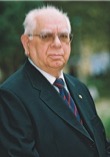
Midhad Teymur oglu Abbasov – Soviet and Azerbaijani scientist, academician of the Azerbaijan Academy of Sciences, Corresponding Member of the USSR Academy of Sciences, Doctor of Technical Sciences, Professor - was born on July 31, 1926, in Baku. In 1943, he graduated from the secondary school and entered the Azerbaijan Industrial Institute. At the same time, Midhad was working in "Karadagneft" trust of "Azneft" association. In 1949, after graduating from the institute, he entered the post-graduate course of the Azerbaijan Industrial Institute. From May 1951 to August 1958, he worked in the Academy of Sciences of Azerbaijan in the following positions: junior research fellow, deputy chief of scientific research. From 1960, he worked as a laboratory chief at the Scientific Research Institute of Oil and Gas Field Problems, Deputy Director for Scientific Affairs, and from 1971, he served as a Director. In 1990, M. Abbasov was elected vice-president of the Azerbaijan Academy of Sciences. Midhad Abbasov is the author of over 660 scientific articles and 16 monographs, 43 author's certificates and 6 patents. He supervised 21 PhDs and 40 doctor of sciences. Midhad Abbasov was a member of a number of scientific and technical societies. He was elected deputy to the Supreme Soviet of the USSR, awarded with orders and medals. In 1991, M. Abbasov was a member of the Presidential Council of the Republic of Azerbaijan, in 1991-1992, was a State Secretary of the Republic of Azerbaijan. M. Abbasov served as a vice-president of the ANAS until 1997, and worked at the Institute of Geology of the ANAS until the end of his life. Midhad Abbasov died on April 23, 2012.
Mikayil Abdullayev
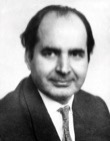
Mikayil Huseyn oglu Abdullayev - an Azerbaijani painter and graphic artist, honored artist of the Azerbaijan SSR, the People's Artist of the USSR and the full member of the Academy of Arts of USSR was born on December 19, 1921 in Baku. He studied at the Azerbaijani Art Technical School (1935-1939), and then he graduated from (1949) the Moscow Art Institute named after V. I. Surikov, where he studied under S. V. Gerasimov. The lyric themes prevail in the artist's works. He is the author of the paintings “Evening” (1947), “The Fires of Mingechevir” (1948), “The Builders of Happiness” (1951), “The Indian Series” (1957-1960), “The Centenary Carver A. Babayev” (1961), “The Girls of Khachmaz” (1982), series of drawings “Beyond the River Araks” (1950), the illustrations for the epic “Kitabi-Dede Gorgud” (1956) and the poem “Leyli and Mejnun” (1958). The artist's work was closely associated with literature. He created the portraits of many writers and artists. Among them are such works as “M. Gorky in 1928, in Baku "(1950),"Uzeyir Hajibeyov"(1944), "Samad Vurgun"(1944, 1959, 1975), “M. F. Akhundov”(1962),“ Imadedin Nasimi”(1973),“Pianist F. Badalbeyli”(1975).
The important contribution was made by the artist in the graphic arts of book, in particular, he created the illustrations for works of Nizami, Fuzuli, Vagif, M. F. Akhundov, Ashug Alasgar, M. E. Sabir, J. Jabbarly, Samad Vurgun, Rasul Rza. In 1956-1971, the artist has been traveled around India, Afghanistan, Poland, Italy and the other countries. He created the portraits of I. Gandhi, Guttuso, Moravia, Manzu. As a result of this travels in India, by him were created such works as “Women of Rajasthan” and “Bengal girls”. For his painting cycle “In India” in 1970, the Indian government awarded him a gold medal and a diploma of the winner of International Prize named after Jawaharlal Nehru. M. Abdullayev designed the hall of the Nizami Ganjavi metro station, where he created mosaic panels based on the subjects of the works of Nizami and the portrait of Nizami himself. He also decorated the Absheron Hotel and the Gulustan Palace. His works were exhibited at the international exhibitions of Prague (1957), Beijing (1958), Brussels (1958), Belgrade (1959), Paris (1960) and Berlin (1963). Mikayil Abdullayev was elected several times as a deputy of the Supreme Soviet of the Azerbaijan SSR. He was awarded the Order "Istiglal". Mikayil Abdullayev died on August 21, 2002 and was buried at the Alley of Honor.
Mikayil Mushfig

Mikayil Mushfig was born on June 5, 1908 in Baku. He got his elementary education at Russian-Tatar School. After the establishment of the Soviet regime in Azerbaijan in 1920, he studied at Baku Teacher's School and in 1931 he graduated from the Department of Language and Literature of the Baku State University.
Mikayil started his professional career as a school teacher. While being involved in teaching he started writing poems. His first poem “Bir Gün” ("One Day") was published in the “Gənc fəhlə” (“Young worker”) newspaper in 1926, in Baku. At about this time, he adopted the pen name Mushfig (Arabic for "tender-hearted"). Along with Samad Vurgun and Rasul Rza, Mikayil Mushfig became one of the founders of new Azerbaijani Soviet poetic style in 1930s. He translated a number of poems from Russian as well. In his poetry, Mushfig glorified the work of industrial workers and peasants and lauded the construction of industrial enterprises in Baku and other cities. According to Mushfig's wife, Dilbar Akhundzadeh, Mikayil welcomed the transition from the Arabic script to the Roman script that took place in Azerbaijan in 1927. During the Stalinist purges of 1930s, resisting the state attempts to ban the "tar", Azerbaijani national instrument, Mushfig wrote a poem titled "Sing Tar, Sing". For his attempts to protect the Azerbaijani culture from being demolished by the Soviet authorities, Mikayil Mushfig came under the barrage of criticism in the Azerbaijani Writers' Union. Some of the literary figures, serving the interests of Stalin's regime in the USSR branded Mushfig as "chauvinist" and a "petit-bourgeois poet". He was arrested in 1937, charged with treason as "the enemy of the state", and executed on May 15, 1938 in the Bayil prison near Baku. He was later officially exonerated.
Mikayil Useynov

Mikayil Alasgar oglu Useynov - architect, architectural historian, Doctor of Architecture, professor, Honoured Scientist, academician of the Azerbaijan Academy of Sciences, USSR Academy of Architecture, Honoured Architect of the USSR, Hero of Socialist Labour, the USSR and Azerbaijan SSR State Prize Laureate was born in Baku on April 19, 1905. M. Useynov studied architecture at the Azerbaijan Polytechnic Institute. After graduating in 1929, he continued working there as a lecturer. He helped to found the Union of Architects of Azerbaijan in 1936 and served as its secretary for nearly 50 years. By 1939, he was a professor at the Institute and in 1945, was elected a full member of the Azerbaijan Academy of Sciences. In 1948, Useynov became Director of the Institute of Architecture and Arts of the Academy of Sciences of the Republic of Azerbaijan, a position he would hold for more than 40 years. He also was elected Secretary of the USSR Union of Architects. From 1929 to 1946, M. Useynov worked together with a well-known Azerbaijani architect, architectural historian, professor, Academician of the Azerbaijan Academy of Sciences, Correspondent Member of the USSR Academy of Architecture, USSR State Prize Laureate Sadig Dadashov (1905-1946). In the late 1920s, Useynov and his colleague Sadig Dadashov became well known for their study of the Shirvanshah Palace, a 14th century complex in Baku's Inner City. They took detailed measurements for the reconstruction of the burial vault (turbe) and the palace court (divankhane), and wrote a book about it.
Mikayil Useynov’s lifelong work as an architect embodies Azerbaijan’s architectural development in the 20th century. The most gorgeous examples of Useynov’s buildings include the Nizami Cinema (1934), the Scientists Residential Building (1946), Azerbaijan State Music Academy (1936), Nizami Museum (1940), the Azerbaijan National Library named after M. F. Akhundov (1947), the complex of buildings at the Azerbaijan Academy of Sciences (1948-1960), the Azerbaijan Hotel (1963), the Absheron Hotel (1965), the Azadlig (Freedom) Square, as well as the monuments of Nizami in Baku, Ganja and Moscow. Useynov was one of two architects that designed Nariman Narimanov metro station and perhaps the most attractive of the metro stations, Nizami, in 1967-1969. In 1971, he designed the Academy of Sciences (Elmler) metro station, the style of which is in keeping with his Academy ensemble. Useynov was repeatedly awarded for his achievements. He was honored as People’s Architect of the USSR in 1970. On his 80th jubilee in 1985, he was named Hero of Socialist Labour. In the same year he became a member of the Royal Asian Society of Great Britain and Ireland, the second Azerbaijani to do so – the first had been Mirza Kazim bey (1802-1870), a famous scholar and founder of Eastern studies in Russia. Mikayil Useynov died on October 7, 1992 in Baku. He was buried in the first Alley of Honour.
Mirasadulla Mirgasimov

The first Azerbaijani surgeon Mirasadulla Miralasgar oglu Mirgasimov was born on November 17, 1883 in Baku. He graduated from the Medical Faculty of Novorossiysk University in Odessa, Ukraine, in 1913. Mirasadulla Mirgasimov was a founder of the modern medical education and science in Azerbaijan. He obtained his Doctor of Medical Sciences degree in 1927 and was awarded professorship in 1929. He was elected as an Active Member of the Academy of Sciences of the Azerbaijan Soviet Socialist Republic of USSR in 1945. Mirasadulla Mirgasimov was one of the founders of the Academy and the Medical University. In 1929-1958 he was a Professor and the Head of Department of Surgery at the Hospital. He was elected the first President of the Azerbaijan Academy of Sciences in 1945 and held that post through to 1947.
The research activity of Mirasadulla Mirgasimov was mainly concentrated on studies of aetiology of urolithiasis, purulent peritonitis, anaesthesiology, traumatology, urology and surgery. He was one of the authors of scientific publications and text books on general surgery written and published in Azerbaijani language. Mirasadulla Mirgasimov was an Honoured Scientist of the Azerbaijan Republic. He was awarded Order of Lenin (the supreme decoration in Former Soviet Union) and had two Orders of Labour Red Banner and a number of other high rank medals of the Former Soviet Union. He was an author of six monographs and text books and fifty scientific publications. He was a founder of scientific school of medical surgery in Azerbaijan. Mirasadulla Mirgasimov died on July 20, 1958 and was buried at the Alley of Honor.
Mirzagha Aliyev
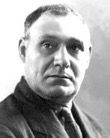
Mirzagha Ali oglu Aliyev - an Azerbaijani Soviet theater and film actor, People's Artist of the USSR, the winner of two Stalin Prizes of the second degree was born on October 25, 1883 in Hovsan settlement of Baku. In 1893-1896, he studied at Muslim religious school in Persian and Arabic, in 1897-1899, went to the Baku State Russian-Muslim School, and in 1899-1900, at the Baku Vocational College. In 1900-1901, he worked at the Baku Tagiyev factory. M. Aliyev‘s path to the theater is similar to the path followed by G. K. Sarabsky and many others: the young factory worker M. Aliyev got acquainted with the actor of one of the Baku amateur companies M. Muradov in 1901. Soon he left the work at the factory. At that period, Aliyev put up playbills and sometimes took part in amateur performances. In 1902, he was entrusted with the small role of a servant in M. F. Akhundov’s play "Dervish Mesteli Shah". After the debut of the newspaper, an increasing interest of the audience to the young actor was noted. The spectators were admired by the images of Shakhmarbey created by M. Aliyev (“Fakhraddin’s grief” by N. Vezirov), and many others. In 1906-1907, M. Aliyev headed the "Hamiyyat" theatrical group that made shows mostly in industrial districts of Baku. Soon he joined the theater group of the “Nijat” society. Like many other older actors of Azerbaijan, M. Aliyev did not receive professional education. In 1905-1906, M. Aliyev performed very successfully in vaudevilles (translated and original comedy plays with music) preceding the comedy genre in Azerbaijan.
In 1908, he appeared in the “Irshad” newspaper calling on the Baku intelligentsia to organize a publishing partnership to publish works by Azerbaijani writers, poets and playwrights. In 1909, he became one of the initiators of the opening of the Russian-Azerbaijani women's school. Mirzagha Aliyev died on 25 October 1954, in Baku. One of the streets of Baku is named after him.
Moisei Weinstein
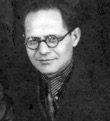
Moisei Rubinovich Weinstein was born on March 18, 1906 in Baku. He graduated from the Music college in 1930, and the Consevatory in 1934. He worked as conductor in the Baku Youth Theatre (1928-1931), the theatre of the Red Army (1931-1933) and the theatre of the Sanitary Culture (1933-1934). During 1934-1939, he worked as music program director at the Azerbaijan State Radio, in 1939-1940 head of music bureau at Department of Cultural Affairs of the Council of Ministers of the Azerbaijan SSR and in 1940-1941 deputy artistic director of the Philarmonic Hall. Moisei Weinstein is an author of such works as “Sulamiph” (together with Mikhail Krishtul, 1937), “Signal” (together with Mikhail Krishtul,1941), a child opera “Misha, Masha and Kashey” based on works by Veniamin Kaverin (1943), “Shock workers of the field”(1930), “Fra Edhenio” (1931), “An angel of peace ” (1932), “Merchant Kalashnikov’s song” (together with Mikhail Krishtul ,1940), “Pioneer’s suite” (1940), symphony (1940), a symphony to the story “Seyran” (together with Mikhail Krishtul), concert for cello and orchestra (1955). He has edited some Azerbaijani folk songs for violin and fortepiano and has composed music for theatrical performances.
Moisei Weinstein passed away on June 8, 1963 in Baku. Wife of M. Weinstein Olga Belyavskaya was a music teacher. His son, Leonid Weinstein (1945-1994) was famous Azerbaijani composer and conductor. L. Weinstein’s wife Beyaz Vezirova, sister of the first secretary of the Communist Party of Azerbaijan Abdurrahman Vezirov, was a music teacher. His son, Timur Weinstein was the art director of Parni iz Baku (Guys from Baku), a KVN (Club of the Cheery and Resourceful) team. He is Deputy General Director of NTV and the general producer of the same telecompany. Other son of M. Weinstein Kim Weinstein (1931-1971) was an engineer. K. Weinstein was father of Harry Kasparov, world chess champion in 1985-2000. H. Kasparov’s mother Klara Kasparyan is an Armenian. In 1976, Klara gave her last name “Kasparyan” to his son, changing the end to “ov”.
Mstislav Rostropovich

Mstislav Rostropovich was born on March 27, 1927 in Baku. His father, musician Leopold moved from Orenburg to Baku. Rostropovich grew up in Baku and spent his youth there. From 1943 to 1948, he studied at the Moscow Conservatory. Among his teachers were Dmitri Shostakovich and Sergei Prokofiev. Rostropovich won first prize at the international Music Awards of Prague and Budapest in 1947, 1949, and 1950. In 1950, at the age of 23 he was awarded what was then considered the highest distinction in the Soviet Union, the Stalin Prize. In 1955, he married Galina Vishnevskaya, soprano at the Bolshoi Theater.
His international career started in 1964 in what was then West Germany. In 1967, he conducted Tchaikovsky’s opera “Eugene Onegin” at the Bolshoi Theater, indulging his passion for both the role of conductor and the opera itself. His playing to the works by Sergei Prokofiev, Dmitri Shostakovich, Witold Lutosławski, Krzysztof Penderecki, Henri Dutilleux and Benjamin Britten thoroughly established in the cello repertoire. Rostropovich fought for art without borders, freedom of speech, and democratic values, resulting in harassment from the Soviet regime. An early example was in 1948, when he was a student at the Moscow Conservatory. In response to the 10 February, 1948 decree on so-called “formalist” composers, his teacher Dmitri Shostakovich was dismissed from his professorships in Leningrad and Moscow; then 21-year-old Rostropovich quit the Conservatory, dropping out in protest. In 1970, Rostropovich sheltered Alexander Solzhenitsyn, who otherwise had nowhere else to go, in his own home. His friendship with Solzhenitsyn and his support for dissidents led to official disgrace in the early 1970s. As a result, Rostropovich was restricted from foreign touring, as was his wife, soprano Galina Vishnevskaya, and he was sent on a recital tour of small towns in Siberia.
Rostropovich emigrated from the Soviet Union in 1974 with his wife and children, settling in the United States. His Soviet citizenship was revoked in 1978 because of his public opposition to the Soviet Union’s restriction of cultural freedom. From 1977 until 1994, he was musical director and conductor of the U.S. National Symphony Orchestra in Washington. His Russian citizenship was restored in 1990, although he and his family had already become American citizens. Rostropovich received the French Legion of Honor. Rostropovich and his wife, Galina Vishnevskaya, started a foundation to stimulate social projects and activities. The couple funded a vaccination program in Azerbaijan. The Rostropovich Home Museum opened on March 4, 2002 in Baku. Rostropovich’s health declined in 2006. He reentered the Blokhim Cancer Institute on April 7, 2007, where he was treated for intestinal cancer. He died on April 27, 2007. Russian President Vladimir Putin, Spain’s Queen Sofia and the President of Azerbaijan Ilham Aliyev have attended at the funeral of the genius musician. M. Rostropovich was awarded “Glory” and “Heydar Aliyev” orders of the Republic of Azerbaijan.
Murtuza Mukhtarov
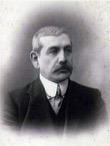
Murtuza Mukhtarov -oilman and philanthropist was born in a very poor family in 1855 in the village of Amirdzhan near the city of Baku. He received his primary education in mollakhans (muslim school). In his youth, Mukhtarov carried various cargoes and crude oil to Tiflis. Then Murtuza got a job as a worker in a drilling office in Zabrat. Soon he becomes a drilling master. Murtuza Mukhtarov improved semi-automatic machine. Mukhtarov managed to become one of the most reputable drilling experts in Baku through his ability and many years of experience. He set up his own drilling company in 1890 and then diversified into oil production. The company specialized in manufacturing machinery for derricks and in drilling oil wells. He is the first to drill a well with a depth of 1,100 meters at Absheron. At the end of the 19th century, Mukhtarov commissioned a whole drilling equipment plant at Bibi-Heybat. The machines and equipment which produced at the Mukhtarov’s plant were sold on the Russian market, exported abroad, even to America. At the beginning of the 20th century, it was ahead of the other Baku millionaires in material terms. The engineers that invited to Baku taught Mukhtarov the subtleties of the engineering, complex schemes and projects. Murtuza Mukhtarov knew with precision the production technology of equipment used in the oil industry. He was the author of the several patents on the drilling equipment - unique feat amongst the oil magnates of that time.
As many others millionaires of Baku, Murtuza Mukhtarov was also involved in a charity. At the expense of Murtuza Mukhtarov in Vladikavkaz (the homeland of his wife Liza) many architecturally valuable and beautiful buildings were built. Mukhtarov also sponsored schools and build mosques in Baku and surrounding areas. A mosque, which was built on his homeland in Amirdzhan under the guidance of architect Ziver bey Ahmedbeyov, is included in the list of protected monuments of UNESCO as one of the brightest gems of the Azerbaijani architecture. Also on his money were built a number of the beautiful buildings in Baku, Kislovodsk, other cities of Russia, Europe. He allocated a significant amount for the improvement of the city of Baku. Business and enterprising millionaire built for himself magnificent mansion, which is now Wedding Palace in Baku. Another interesting fact from his life: with his wife they adopted one orfan girl, Azerbaijani origin, who danced gipsy dances and song on the streets. Later on Fatima Mukhtarova became a star of the Baku opera stage. His residence build for his wife Liza Mukhtarova by architect Joseph Ploshko in 1911-1912 is celebrated example of Baku Pseudo Gothic architecture. M. Mukhtarov was a very brave man, but his life ended tragically. In April, 1920 Mukhtarov committed suicide when he defended his own residence from the soldiers of the Red Army. He killed several of them and then put the end of his own life.
Muslum Magomayev

Muslum Mahammad oglu Magomayev - famous Azerbaijani baritone and pop singer was born in Baku on August 17, 1942. Muslum Magomayev represented one of the most respected artistic dynasties in Azerbaijan. His grandfather Muslum Magomayev (1885-1937), was a friend and contemporary of the prominent Azerbaijani composer Uzeyir Hajibeyov, and was one of the founders of the Azerbaijani-composed music. Magomayev's father, Mahammad Magomayev, who died during World War II, was a gifted painter, and his mother was an actress. Muslum learned to play a piano as a child, and began to take lessons from teachers of voice at the age of 14. He graduated from the music school in piano and composition at the Baku Conservatory, after which he graduated from the vocal class of the same conservatory. As a teenager he became interested in Italian songs, American jazz and other styles of popular music. In 1962, at the age of 20, Magomayev first appeared in Moscow where he performed within the frameworks of the Days of the Azerbaijani Culture. He sang two musical pieces in a gala-concert on the main stage of the USSR, the Kremlin State Palace of Congresses, and became a celebrity on a spur of the moment. A year later he gave his first solo concert in the Moscow Tchaikovsky Concert Hall to a full house and became a soloist of the Azerbaijani State Academic Opera and Ballet Theatre. Muslum earned fame in the USSR as an opera singer with Rossini's "Barber of Seville". He also became known for his arias from Puccini's "Tosca", Hajibeyov's "Koroghlu" and "Shah Ismayil", which was composed by his grandfather. In 1964 – 1965 Muslum was on probation in the La Scala theatre in Milan, but turned down the invitation to sing in Moscow, in the Bolshoi Theater upon his return. Instead, the singer turned to popular music, becoming a pop idol for the several generations of the music lovers in the Soviet Union. Muslum Magomayev's popularity in the USSR was overwhelming. He quickly became a cult figure and gave three concerts a day filling out huge arenas all across the Soviet Union, while his albums sold millions.
In 1966 and 1969 Magomayev performed in Paris Olympia with great success. The director of Olympia Bruno Coquatrix offered him a contract, and Magomayev was seriously considering an opportunity to pursue international career, but Ekaterina Furtseva refused to grant the permission for the Ministry of Culture, claiming that it needed Magomayev to perform at the governmental concerts. In 1969 he received a Gold Disc at the MIDEM International Awards (Marché International du Disque et de l'Edition Musicale) in Cannes for the album sales of over 4, 5 million units. In 1973, at the very young age of 31, Muslum was awarded the highest artistic title of the Soviet Union: People's Artist of the USSR. Magomayev is also known as a composer, he wrote songs and film soundtracks. In addition, Magomayev played in films and acted as a host in television and radio broadcasts devoted to the prominent musicians of the 20th century. Magomayev has been living and working in Moscow since the early 1970s. In 1997, in recognition of Magomayev's professional successes, a Russian astronomical society named two planetoids of the solar system in honor of him and his wife, Tamara Sinyavskaya, a prominent Russian opera singer who was also awarded as a People's Artist of the USSR and worked as a soloist at the Bolshoi Theater. Muslum Magomayev was awarded by the many orders and medals. He passed away in Moscow on October 25, 2008. His body was brought to Baku and buried in the first Alley of Honor.
Nabi Khazri
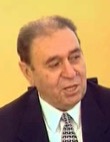
Nabi Khazri (Nabi Alakbar oglu Babayev) - an outstanding representative of the modern Azerbaijani literature, a laureate of the state prizes of the USSR and Azerbaijan, a Honored Art Worker, a personal scholar of the President of the Republic of Azerbaijan, the President of the Center of International Relations “Azerbaijan Dunyasi”, a national poet was born on December 10, 1924 in the village of Khirdalan, near the city of Baku. After graduating from the high school, he was starting his work activity. Nabi Khazri participated in the World War II in 1942-1943, and after the demobilization from the army in 1943-1945, he worked as a proofreader in the editorial office of the “Kommunist” newspaper, and as a radio announcer on the Azerbaijani Radio. In 1945-1947, he received the higher education at the Azerbaijani State University, in 1947-1949 - at the Leningrad State University, in 1949-1952 - at the Literary Institute named by Maxim Gorky.
Nabi Khazri finished his education in 1952, and until 1957 he was a consultant in the Writers' Union of Azerbaijan, and in 1957-1958 he was a literary worker in the editorial office of the newspaper “Edebiyyat ve Incesenet”. In 1958-1965 he worked as a secretary of the Writers' Union of Azerbaijan, in 1965-1971 - as a deputy chairman of the State TV and Radio Broadcasting Committee of Azerbaijan, and in 1971-1974 - as a deputy of the minister of the culture of Azerbaijan. Since 1974, Nabi Khazri was a Chairman of the Presidium of the Society for Friendship and Cultural Relations with Foreign Countries, and since 1992 he was a President of this organization, acting under the name of the Center for International Relations "Azerbaijan Dunyasi". The writing of Nabi Khazri is one of the outstanding pages of the modern Azerbaijani poetry. The works of the poet, who served for our literature for more than sixty years, are characterized by the breadth and variety of subjects. The literary and the social activities of Nabi Khazri were highly appreciated. He was awarded a number of the orders and medals, including the highest state awards of the Republic of Azerbaijan - the orders "Shohrat" and "Istiglal". Nabi Khazri died on January 15, 2007 at the age of 83 and was buried in the Alley of Honor.
Nargiz Pashayeva

Nargiz Arif gizi Pashayeva -rector of the Baku Branch of Lomonosov Moscow State University, vice-president of the Azerbaijan National Academy of Sciences (ANAS), head of the Nizami Ganjavi Scientific Center of the University of Oxford from the Azerbaijani side, Chairperson of the Board of Trustees of the British Foundation for the Study of Azerbaijan and the Caucasus, Academician was born on December 13, 1962 in Baku. In 1983, she graduated with honours from the Faculty of Philology of Azerbaijan State University (present Baku State University). N. Pashayeva received Doctor of Philosophy in 1987, Doctor of Philology in 2005, and was awarded the title of Professor in 2005. In 2014, she was elected a Corresponding Member of the Azerbaijan National Academy of Sciences (ANAS). Nargiz Pashayeva started her labour activity in the Department of History of the Azerbaijani Literature at the Baku State University and worked as assistant, teacher, senior lecturer, and associate professor. In 1994-2008, she held the Chair of Language and Literature of Baku Music Academy and in 2006-2008, she was a vice-rector of Baku State University for International Relations. Since 2008, she has served as a rector of the Baku branch of the Lomonosov Moscow State University. N. Pashayeva has been founder and art director of “ÜNS” creative scene since 2006, and since 2007, she has been a member of the Azerbaijani Writers' Union and co-chair of Anglo-Azerbaijan Society.
N. Pashayeva is a member of the Board of Directors of “Friends of Azerbaijani Culture” Charitable Foundation. As an initiator of establishment of Nizami Ganjavi Scientific Centre for the Study of Azerbaijan and Caucasus at the University of Oxford, she signed a memorandum at the Faculty of Oriental Studies at the University of Oxford in 2013. Academician N. Pashayeva is the author of 54 scientific works, including four monographs, two textbooks and one book. She wrote the libretto for the opera “Intizar” (Expectation) by the outstanding composer, People's Artist of Azerbaijan Firangiz Alizadeh. Academician Nargiz Pashayeva has repeatedly been awarded with orders and medals for achievements in scientific and public activity. She was awarded the medal “For Services in Friendship” of the Ministry of Foreign Affairs of the Russian Federation for her contribution to the Russia-Azerbaijan relations in 2008, an honorary title of “Honoured Scientist” for her contributions to the development of the Azerbaijani science according to the decree of the President of the Republic of Azerbaijan dated August 30, 2009, the highest state award of the Russian Federation – the Order of Friendship, UNESCO’s Cultural Diversity Medal for contributions in the field of culture in 2011, Commander's Cross Order of Merit of Hungary in accordance with an executive order of Hungary`s President dated March 11, 2012 for her contribution to promoting the Hungarian culture in Azerbaijan, the Order of Merit in Gold of the European Economic Chamber of Trade, Commerce and Industry (EEIG) in 2012, “Order of Academic Palms” of France for doing her share for promoting the development of ties between Azerbaijan and France.
On May 2, 2017, Nargiz Pashayeva was elected as a full member of the Azerbaijan National Academy of Sciences (ANAS). N. Pashayeva was elected the vice president of the ANAS on June 8, 2018. On October 11, 2018, Nargiz Pashayeva was accepted as a member of the Chancellor’s Court of Benefactors in the 28th annual special event of the Chancellor’s Court of Benefactors. She became the first Azerbaijani admitted to the Chancellor’s Court of Benefactors, consisting of scholars, public figures and reputable organizations with special achievements in the history of the University of Oxford, which is considered the leading high school in the world. Academician Nargiz Pashayeva was elected as an academician (foreign member) of the Russian Academy of Education on March 4, 2019.
Nasiba Zeynalova
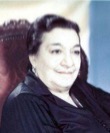
Nasiba Jahangir gizi Zeynalova, an Azerbaijani actress, an Honored Artist of the Azerbaijan SSR, People’s Artist of the Azerbaijan SSR (1967), laureate of the State Prize of Azerbaijan was born on April 20, 1916 in Baku, into a family of a stage actor, founder of the national realistic school of the acting technique Jahangir Zeynalov. Nasiba Zeynalova, while attending high school, also attended dance courses. She began her career in the dance ensemble of the Azerbaijani State Philharmonic, and in 1932 joined the Rza Tahmasib’s drama club. In 1938, she started working at the Azerbaijani State Theater of Musical Comedy as an actress of the first category and simultaneously entered the Baku Theater Technical School at the dramatic faculty, which she graduated in 1942. Then she successfully graduated from the Azerbaijani State Institute of Arts, by specialty an actor in a musical comedy.
Nasiba Zeynalova played such roles in Azerbaijani classical operettas as Gulperi, aunt Jahan, Sanam -“Husband and Wife”, “Arshin Mal Alan” (“The Cloth Peddlar”), “O olmasin, bu olsun” (“If not that one, then this one”) by Uzeyir Hajibeyov. Melek khanum and Kelek khanum - (“Fifty Year Old Young man”, by Zulfugar Hajibeyov), Kabato and Barbala (“Keto and Kote”, by Vladimir Dolidze, translated by Shamsi Badalbeyli), Zhiraldina (“The Servant of two masters”, by Carlo Galdoni. Music editor Shamsaddin Fatullayev), and others. Nasiba Zeynalova starred in 22 films and about 70 performances, as well as in numerous television sketches. She is best remembered for the roles of Fatmanisa in “Ogey ana” (“Stepmother”, 1958), Sughra in “Bizim Jabish muallim” (“Our teacher Jabish”, 1969), Jannat in “Gaynana” (“Mother-in-law”, 1978), and aunt Asli in “Beyin ogurlanmasi” (“The kidnapping of the Groom”, 1985). Nasiba Zeynalova died on March 10, 2004. The actress was buried on the I Alley of Honor.
Nikolai Baibakov
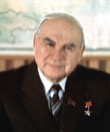
Nikolai Konstantinovich Baibakov - prominent statesman, founder of the domestic oil and gas industries, leading specialist and facilitator of the development of oil and gas fields was born on March 6, 1911 in Sabunchu village of Baku in the family of oil worker. In 1932, he graduated from the Azerbaijan Oil Institute as an oilfield mining engineer and started working as an engineer at Baku oilfields. In 1935–1937, he served in the Red Army in the Far East. In 1937, N Baibakov joined the Leninneft trust in Baku as an engineer and was promoted to Chief Engineer and then head of the trust. In 1938, N. Baibakov was appointed director of the Vostokneftedobycha Association in Kuibyshev. In 1939, he was appointed to lead the Central East Oil Production Department with the people’s commissariat of the Fuel Industry of the USSR. In 1940, Baibakov became deputy people’s commissar of the Oil Industry and in 1944 was appointed people’s commissar of the Oil Industry of the USSR. In 1955, N. Baibakov was appointed chairman of the State Commission of the Council of Ministers of the USSR for Advance Planning of the People’s Economy. In 1957, he became chairman of the Gosplan (State Planning Committee) of the Russian Soviet Federative Socialist Republic (RSFSR) and deputy chairman of the Council of Ministers of the RSFSR. In 1958, N. Baibakov was demoted and appointed to lead the Council of National Economy in Krasnodar Krai. In January 1963, N. Baibakov was appointed head of the Northern Caucasian Council of National Economy. From 1963 to 1965, he worked as chairman of the State Committee on Chemical and Oil Industry with the Gosplan of the USSR, a minister of the USSR. In 1965 N. Baibakov was reappointed chairman of the Gosplan. He led the State Planning Committee for two decades. N. Baibakov retired in 1985, but worked for three more years as a state councilor in the Presidium of the Council of Ministers of the USSR.
He was PhD in technical sciences, honorary member of the Russian Academy of Natural Sciences, member of the Russian Academy of Cosmonautics by K. E. Tsiolkovsky, the author of about 200 research papers and publications. He was elected a seven-time deputy of the Supreme Council of the Soviet Union. N. Baibakov was Hero of Socialist Labor. He was awarded Lenin Prize for the discovery and development of gas-condensate fields, six orders of Lenin, twice order of the Red Banner of Labor, order of the October Revolution, “Istiglal” order of the Republic of Azerbaijan, and orders and medals of foreign countries. In 1995, the Krasnoye Sormovo shipyard completed construction of the Nikolai Baibakov motor boat. He passed away on March 31, 2008 in Moscow. In 2017, a bust was erected in the area of secondary school No. 67 in Sabunchu district of Baku.
Polad Bulbuloglu
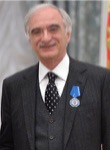
Polad Bulbuloglu was born on February 4, 1945 in Baku. He took his father’s nickname “Bülbül” as a surname. His father Murtuza Mammadov was a People’s Artist of the USSR and the name “Bülbül” –“nightingale” 一 was bestowed upon the popular singer for the beauty and purity of his voice. He graduated from the Azerbaijan State Conservatory in 1968. In 1982, he was awarded the title of People’s Artist of Azerbaijan SSR and People’s Artist of Turkmenistan in 2017. During 1988-2006 he was Minister of Culture of the Republic of Azerbaijan. P Bulbuloglu was appointed Ambassador Extraordinary and Plenipotentiary of the Republic of Azerbaijan to the Russian Federation in 2006.
P. Bulbuloglu is a renowned musician on the world stage who has performed in more than 70 countries spanning a career over five decades. He is also an author of compositions for feature films and theatre performances, symphonies and symphonic poems. “Love and Death” ballet by P. Bulbuloglu was staged in Moscow, capital of the Russian Federation. On February 16, 2005, he received Russia’s Order of Friendship for development of cultural ties between Russia and Azerbaijan. On February 3, 2015, he was awarded the Order of “Sharaf” (Honour) of the Republic of Azerbaijan for his long-term fruitful work in cultural and socio-political life of the country. P. Bulbuloglu received the Order of Honour of the Russian Federation on February 4, 2015 for his services on expansion of economic and cultural relations between Azerbaijan and Russia. On May 18, 2016, a statue of P. Bulbuloglu was unveiled in Moscow in the framework of the series of works of prominent artist and sculptor Zurab Tsereteli “Contemporaries”. His son Teymur Bulbuloglu is a musician, Merited Artist of the Russian Federation. Other son Murtuza is a mucisian, too. His daughter Leyla is a singer and an actress.
Rauf Hajiyev

Rauf Hajiyev was born on May 15, 1922 in Baku. He was brought up by the great pedagogue and enlightener of Azerbaijan Hasan bey Zardabi’s daughter Garibsoltan Malikova. In 1948-1949, R. Hajiyev studied at the Moscow Conservatoire, and in 1953, he was graduated from the conducting course of Professor Gara Garayev at the Azerbaijan State Conservatoire. Having listened to Rauf Hajiyev's piano pieces, the great composer Uzeyir Hajibeyov highly appreciated his innate talent. Rauf Hajiyev was the founder and artistic director of the Azerbaijan State Estrada Orchestra in 1955-1963. In 1964, he was the director of the Azerbaijan State Philharmonic Society. In 1965-1971, R. Hajiyev served as a Minister of Culture of Azerbaijan. From 1971 to 1975, at the initiative of the Ministry of Culture of the USSR, Rauf Hajiyev was sent to Algeria as the General Adviser of Art throughout the African continent. After returning to Russia, he became the chairman of the Union of Composers of the Azerbaijan SSR, and remained in this office to the end of his life. Rauf Hajiyev has repeatedly held senior positions of the USSR Union of Composers.
R. Hajiyev authored 9 operettas, including "Romeo is my neighbor", "Cuba is my love", "Mom, I'm Getting Married", "The Fourth Spine"," Crossroad" and so on. Most of these operettas were staged at the Moscow State Operetta Theater for the first time and had success in several cities of the former USSR as well as in foreign countries. Rauf Hajiyev composed music for more than 15 films, including "Where is Ahmed?", "Shadows are creeping", "The Secret of a Fortress". He is the author of over 150 songs. He had been repeatedly elected deputy to the Supreme Soviet of Azerbaijan and was awarded orders and medals. Rauf Hajiyev passed away on September 18, 1995. He was buried in the Alley of Honor. Children's Music School No. 15 in Baku is named after Rauf Hajiyev.
Richard Sorge
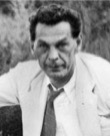
Richard Sorge was born on October 4, 1896 in Sabunchu settlement of Baku, in the family of German Gustav Wilhelm. His father was a petroleum engineer in the Nobel Brothers company. Sorge’s mother Nina Stepanovna was a Russian woman.The Sorges after some time moved to Berlin. On the outbreak of the First World War Sorge joined the German Army in October 1914. He was severely wounded in March 1916. During his convalescence he read Marx and became a communist, mainly due to the influence of the father of a nurse with whom he had developed a relationship. He earned a doctorate in political science at the University of Hamburg, Germany, joining the Communist Party of Germany in 1919. His political views, however, got him fired from both a teaching job and coal mining work. He emigrated to the Soviet Union, where he became a junior agent for the Comintern in Moscow. He has to flee to the USSR as he openly protected communist ideas. Sorge was recruited as a spy for the Soviet Union. Using the cover of being a journalist he was sent to various European countries to assess the possibility of communist uprisings taking place. In May 1933 the Soviet Union decided to get Sorge to organize a spy network in Japan. As cover Sorge went to Nazi Germany where he was able to get commissions from two newspapers, the Borsen Zeitung and the Tagliche Rundschau. Sorge arrived in Japan in September 1933. He was warned by his spymaster not to have contact with the underground Japanese Communist Party or with the Soviet Embassy in Tokyo. He was given the code name “Ramsay”. In 1933-1934 Sorge organized a Soviet spy network in Japan. Stalin had clearly expressed his dissatisfaction with the fact that Sorge was a German origin.
Sorge continued in vain to alert Moscow to the impending invasion, sending one final dispatch the day before Hitler on June 22, 1941, unleashed Operation Barbarossa on the unsuspecting Soviet forces. The date was given to Sorge by Oberstleutnant (lieutenant-colonel) Erwin Scholl, the deputy military attaché at the German embassy. Despite the efforts of Sorge, Joseph Stalin did not believe that the German Army would attack at that time and did not take the necessary action. Sorge in September 1941 sent the most important dispatch of his career, informing Moscow of the Japanese government’s decision. With the threat of an attack on the Soviet Far East gone, Stalin transferred his forces in the region westward, a move that halted the German advance on Moscow and changed the course of World War II. Japanese and German experts were informed about the espionage network serving to USSR. Secret issues were realized for fascination of spy network and arresting of spies. On October 18, 1941 Sorge was arrested in Tokyo and was sent to Sugamo prison. Following months of interrogation, he was tried and convicted of being a communist agent whose espionage activities were aimed at overthrowing the emperor system and private property. In September 1943, he was sentenced to death. Sorge was confident, however, that he would not face the gallows; Tokyo would trade him to Moscow in exchange for a Japanese prisoner. His captors had the same idea. The Japanese tried on three separate occasions to arrange a prisoner exchange. Each time, Moscow’s reply was the same: “The man called Richard Sorge is unknown to us.” The Soviet Union did not officially acknowledge Sorge until 1964.
On November 5, 1964, an event on ocassion of the 20th death anniversary of Richard Sorge was organized in Moscow and he was awarded the title Hero of the Soviet Union. A monument was erected in Moscow. Richard Sorge is always commemorated in Azerbaijan. Sorge says in his reminiscences: “I consider myself as Azerbaijanian, but the problem is that, I can’t say any word in the Azerbaijani language.” In 1981, an unusual monument to him, created by sculptor V. Chigal and architector M. Useynov was erected in Baku. A central street in Baku has been also named after Richard Sorge.
Rustam Ismayilov
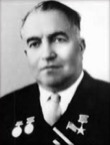
Rustam Hajiali oglu Ismayilov was born on July 1st, 1909 in Baku. In 1933 he graduated from the Azerbaijani Oil Institute with a degree in engineering technology. In 1945 R. Ismayilov became a Doctor of Philosophy in Chemistry, in 1961 he received the degree of a Doctor of Technical Sciences, and in 1958 the title of professor. In 1959 he was elected as a corresponding member and in 1962 as an active member of the Academy of Sciences of the Azerbaijan SSR. He worked as a Head of Baku Executive Authority (1950-1952), Deputy Head of Baku Executive Authority (1952-1954), Chief Engineer of the “Azerneftzavodlary” Association (Azerbaijani oil plants) (1954-1959), Head of the Oil-Processing and Chemical Industry Department of the Council of the National Economy of the Azerbaijan SSR (1959-1961) , 1st Deputy Chairman of the Council of the National Economy of the Azerbaijan SSR (1961-1965), Minister of Oil Refining and Petrochemical Industry of the Azerbaijan SSR (1965-1967), was the President of the Academy of Sciences of the Azerbaijan SSR (1967-1970), Head of the Laboratory at the Institute of Petrochemical Processes of the Academy of Sciences of the Azerbaijan SSR (1970-1972).
His main areas of the research were petroleum chemistry and oil processing technology. He obtained important results in the field of the improvement of the thermal cracking technology in oil refining industry. He was one of the initiators of the development of the industrial petrochemical synthesis in Azerbaijan, including development of the petrochemical industry in the region of Sumgayit. One of the main problems of the oil industry of Azerbaijan during the Second World War was to ensuring the needs of the front. With the direct participation of R. Ismayilov significant work was done to increase the volume of the production of the petroleum products. Under his direct guidance an important works on reconstruction and renovation of Baku Catalytic Cracking Plant, research on catalytic aromatization of low octane benzene- naphtha compounds, improvement of technology of pyrolysis of crude oil were conducted. The creation of the basis for production of feedstock for development of petrochemical industry in Azerbaijan is connected with his name and activity. He was the author of the 120 scientific publications, including 7 monographs. For achievements in the development of the science and technology, he was awarded the title Hero of Socialist Labor, Honored Worker of Science, laureate of the State Prize of the USSR, and was awarded the five Orders of Lenin, the “Order of the Badge of Honor” and medals. Academician Rustam Ismayilov died on June 1, 1972 in the city of Baku.
Rustam Mustafayev

Rustam Mammad oglu Mustafayev - an Azerbaijani scenic designer and one of the pioneers of Azerbaijani decorative theatrical art was born on February 25, 1910, in Baku into a family of civil servants. As a high-schooler he also studied in the art studio at the Azerbaijan State Art School. He was involved in the theater world by his teacher and theater artist V. Ivanov. Having graduated from the Azerbaijan Art Academy in 1926 (Painting and Stage Decoration Department), Mustafayev revealed some constructivist influences in his early works (like in the play “Bride of Fire” of Jafar Jabbarli, in 1933). Starting from the mid-1930s R. Mustafayev created the pictorial scenic decorations, such as those for “Ashig Garib” opera of Zulfugar Hajibeyov (1939) and “Arshin Mal Alan” operetta of Uzeyir Hajibeyov (1940) in the Azerbaijan State Theatre of Musical Comedy. R. Mustafayev worked with major Azerbaijani playwrights Jafar Jabbarli and Huseyn Javid. Rustam Mustafayev passed away on July 19, 1940 and was buried at the Alley of Honor. The Azerbaijan National Museum of Art is named after him.
Sabit Orujov
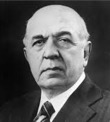
Sabit Atababa oglu Orujov was born on May 31, 1912 in Baku. He was Azerbaijani Soviet politician, a Deputy Prime Minister of the Azerbaijan SSR (1957-1959), Deputy Minister of the Oil Extracting Industry of the USSR (1965-1972), Minister of the Gas Industry of the USSR (1972-1981) and a member of the Central Committee of the Communist Party of the Soviet Union (1981). S. Orujov had put a lot of work into oil extraction in the oil fields of the Caspian Sea. He rendered great services to the development of gas industry in the former USSR. In particular, he paid attention to the development of the gas industry in Siberia. He was elected as a chairman of the Oil Committee of the USSR and vice chairman of the World Oil Congress. He is the author of the articles “Foundations of the large-block offshore oil wells”, “Oil industry of Iran”, “Gas industry on the road of development”.
He was a laureate of the State Prize of the USSR (twice: 1951 and 1959), Lenin Prize (1970), three Orders of Lenin, Order of the October Revolution, four Orders of the Red Banner of Labour, Hero of Socialist Labour (1980). Sabit Orujov died in Moscow, on April 20, 1981.
Sarah Ashurbeyli
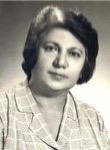
Sarah Balabey gizi Ashurbeyli - orientalist, doctor of the historical sciences and artist was born on January 27, 1906 (according to other documents of 1905) in the family of the well-known oilman Balabey Ashurbeyov. Her grandmother-Nabat Khanum was very famous philanthropist. In 1912 on her own means has been built very big mosque in Baku –Taza Pir. In 1913, she successfully passed the exams from the junior preparatory class of the St. Nina Baku Women's School, but to complete the secondary education prevented the revolutionary events of 1917-20. In 1920, together with her parents, she moved to Turkey, to Istanbul, where she studied at the French college of Joan of Arc (Institusion Sainte Jeanne d'Arc), who graduated with honors in 1925. In 1925, the family returned to Baku. In the same year, Sarah entered the history department of the Eastern Faculty of the Azerbaijani State University, which she graduated in 1930. After graduating from university she was engaged in scientific work in the Azerbaijani State Museum (1930-31). From 1933 to 1937 she worked as a junior scientific associate in the Institute of History of Azerbaijani Branch of the Academy of Sciences of the USSR.
In 1937 she was sent to the Azerbaijani Pedagogical Institute at the faculty of foreign languages to work as a teacher of French; at the same time, wanting to improve their skills in this area, she entered the English department of the same faculty, which she graduated in 1941. In the same year she graduated from the Azerbaijani Art School named after A. Azimzade, and started work as a scene-painter in the Azerbaijani Drama Theater. In her collection of works, two magnificent paintings draw attention: “The Palace of the Khans of Sheki” and “Lake Goygol”, which stored in the National Museum of History of Azerbaijan. From 1941 to 1944 she taught English at the Pedagogical Institute. In 1944 she was transferred to the Pedagogical Institute on the nonresident instruction, where she worked as a dean of a faculty and headed of the department of foreign languages until 1949. In 1944 she was invited to work at the Institute of History of the Academy of Sciences of the Azerbaijan SSR as a senior researcher and worked there until October 1947. From 1949 to 1958 she worked as a master teacher at the sub-faculty of Foreign Languages at the Azerbaijani State Conservatory. After defended a thesis on May 27, 1949, she was awarded the degree of candidate of historical sciences at the Institute of Oriental Studies in Leningrad. From 1955 to 1958 she headed of Department of Middle Ages of the Museum of History of the Academy of Sciences of the Azerbaijan SSR. From 1958 to 1961 she was a senior researcher at the Institute of Oriental Studies of the Academy of Sciences of the Azerbaijan SSR.
After defending a thesis on a monograph in 1965 in Tbilisi, she was awarded the degree of Doctor of Historical Sciences. In 1972 - 1974 she was a head of the Department of Middle Ages of the Institute of History of the Academy of Sciences. From 1993 to the end of her life, she worked as a leading researcher at the Institute of Archeology and Ethnography of the Academy of Sciences of Azerbaijan. S. Ashurbeyli has written over one hundred articles on historical topics for the Azerbaijani encyclopedia. She knew 7 languages. She studied the history of the Middle Ages, the history of Baku and the Shirvan Khanate. Her works are embodied in the historical work - the book "Economic and cultural ties of Azerbaijan with India in the Middle Ages" (Bombay, 1964). She is also the author of famous books like “Essays on the history of medieval Baku (VIII - early XIX century)”, “State of Shirvanshahs (VI-XVI centuries)”, “History of the city of Baku”. S. Ashurbeyli was awarded the title "Honored Scientist of Azerbaijan" (1982), awarded the Order of Friendship of Peoples (1986), honorary title of the laureate of State Prize Winner of the Azerbaijan SSR (1986) and Order of Glory ("Shohrat", 1996). She died in Baku in 2001 and was buried on the 2nd Alley of Honor.
Sattar Bahlulzadeh
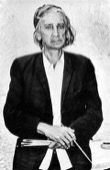
The People's Artist of Azerbaijan, laureate of the State Prize of Azerbaijan Sattar Bahlul oglu Bahlulzadeh was born on December 15, 1909 in the Amirdzhan village, the city of Baku. He graduated from the Azerbaijan Art School in 1931, and in 1941 he graduated from the Moscow State Academic Art Institute named after V. I. Surikov, he was a student of V. Favorsky and V. M. Chagall.
S. Bahlulzadeh is the author of the dozens of lyrical landscapes. He displayed the beauty of his homeland, transferring to the canvas various parts of Azerbaijan, sunny Absheron, Nagorno Karabakh, Mugan, beautiful Guba and Lankaran. The great artist forgot himself, brushing between the palette and the canvas and surrounding nature with all his poetry. The lyrical poetry of the artist is displayed in his works, such as “Gudiyalchay valley” (1953), “Evening above Caspian Sea” (1959), “Spring of my Native Land” (1967), “The autumn in Nakhchivan”, “Amirdzhan”, “The oil stones”, “The Vineyards of Shamakhi” and in many of his other works. Solo exhibitions of S. Bahlulzadeh were shown in Algeria, Egypt, Lebanon, Syria, Tunisia, Norway, ADR, Czechoslovakia, Bulgaria, Irag, Cuba, Canada, Belgium, France, Japan and other countries of the world. His works are among the permanent exhibits in the museums around the world. Sattar Bahlulzadeh was awarded of the several orders and medals. He died in Moscow on October 14, 1974 and was buried in Amirdzhan and a monument was erected on his grave.
Shamil Fatullayev
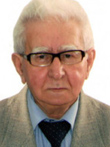
Active member of the Azerbaijan National Academy of Sciences Shamil Seyfulla oglu Fatullayev was born on December 24, 1928 in Baku. In 1953 he graduated from the Architecture and Construction Faculty of the Azerbaijan Polytechnic Institute. In 1956 he became a graduate student of the Institute of Architecture and Arts of the Azerbaijan Academy of Sciences, in 1963 he defended PhD dissertation, in 1980 - doctoral dissertation and in 1990 received the academic title of professor. In 2014 Sh. Fatullayev was elected an active member. His name is associated with the study of the history of Azerbaijani architecture in the XIX-XX centuries. Possessing deep scientific knowledge in the field of architecture and town planning Sh. Fatullayev created his scientific school. For the 1st time on the scientific basis of this school were written and published valuable scientific works - Zivarbey Ahmadbayov, Gasimbay Hajibababeyov, Karbalayi Sefikhan Garabagh, Mashadi Mirza Gafar Izmaylov, etc. The life and work of our outstanding architects turned into the object of research of our young scientists. The scientist was awarded the title of laureate of the State Prize of Azerbaijan and "Honored Architect of Azerbaijan", he was the president of the International Academy of Architecture of Eastern countries, a corresponding member of the International Academy of Architecture (Russia) and a full member of the International Congress on Turkish Art.
Sh. Fatullayev’s merits in the propaganda of the history of the national Azerbaijan architecture are great all over the world. He successfully represented the architecture of Azerbaijan, speaking at international conferences in Poland (1971), Iran (1991-1998), Turkey (1991), Jordan (1996), Holland (1999) and other countries. Under the guidance of the scientist 15 PhDs and 4 Doctors of sciences were trained. Sh. Fatullayev is the author of more than 150 scientific papers. Among them, one should especially emphasize the monographs on "Urban architecture of Baku" (1978), "Urban planning and architecture of Azerbaijan in the early XIX-XX centuries" (1986), "Azerbaijani mosques" (1996), "Iranian cities in the period of Ghajars" (2000), "Architectural encyclopedia of Baku" (1998), "Architecture of Absheron" (2003, 2013) and "Architect Meshadi Mirza Gafar Izmaylov" (2013). The well-known scientist was awarded by the several awards for his professional activity, in 1986 he was awarded the "Badge of Honor" order, and in 2000 by the decree of the President of the Republic of Azerbaijan Heydar Aliyev was awarded the Order of "Glory". Also in 2008 he was awarded the Gold Medal of the Republic of Poland. Academician died on March 9, 2015 in Baku.
Shamsi Asadullayev
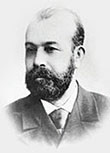
Shamsi Asadullayev, an Azerbaijani oil producer, philanthropist was born in 1841 in the village of Amirdzhan, near the city of Baku, in a very poor porter family. In his youth, he was engaged in collecting wheat and barley in Surakhani (a village near Baku), and also transported various goods from Baku to Tiflis. In the late 60s and early 70s of the 20th century, he collects a small amount and rents one part of the salt mines from the government. In 1874 he bought the small oil fields and opened an office. In 1893, this office was transformed into the firm “Shamsi Asadullayev”, which was among the 12 leading oil companies that provided Baku with about 60% of oil. Asadullayev becomes one of the leading industrialists in Baku. By 1913, his personal fortune was estimated at 10 million rubles. He creates his own oil fleet, consisting of dozens of sea and river vessels, opens its offices in Russia, Iran and Finland.
He was elected to the Baku City Duma. Asadullayev also participated in active charitable activities: allocated funds for the construction of the building of Baku Real School; established two scholarships on his own behalf at the Alexander Institute of Teachers (Tiflis); presented one of his mansions in the Zamoskvorechye (Moscow region) to Moscow Muslim community. After the establishment of the Soviet power in Azerbaijan, the communist regime nationalized all the property of Asadullayev. Shamsi Asadullayev died in 1913 at the age of 72 in Yalta, buried in Baku.
The son of Shamsi Asadullayev, Mirza Asadullayev (1875-1936), was an outstanding figure in the ADR government, he continued the commercial affair of his father and also he was a deputy of the Ministry of Trade and Industrial in the III cabinet of the government of ADR. He was the father of the famous French writer Banin (Umbülbanu). In 1921, Mirza Asadullayev emigrated to France. In emigration he settled in Paris, where he lived until his death. He died in 1936, and was buried in a Muslim cemetery in the city of Bobigny, near Paris.
Shikhali Gurbanov
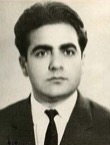
Shikhali Gurbanali oglu Gurbanov - state and public figure, literary scholar, Doctor of Philology, playwright, prose writer, poet, a member of the Union of Writers and Journalists of the USSR was born on August 16, 1925 in Baku. Sh. Gurbanov headed the Institute of Language and Literature of the Academy Sciences of Azerbaijan in the 1960s. He has repeatedly been elected a deputy of the Supreme Soviet of the Azerbaijan SSR, and was conferred orders and medals. He was awarded the Azerbaijan SSR State Prize for the drama “Sensiz” (“Without you”) and the Uzeyir Hajibeyov Prize for the musical comedy “The beggar son of a millionaire”. Since his studentship years he has been engaged in social and political activities until the last days of his life and worked in a number of senior positions in the republic. Being internationalist by belief, Sh. Gurbanov loved his nation and homeland Azerbaijan with great love. On February 27, 1966, Sh. Gurbanov was elected Secretary of the Central Committee of the Communist Party of Azerbaijan on ideology issues.
Sh. Gurbanov was the first pushkinologist in Azerbaijan. He is the author of the monographs "Pushkin and Azerbaijani poetry" (1956), "A. S. Pushkin and Azerbaijan" (1959), "Stages of development of the Azerbaijani-Russian literary relations in the 19th century (1964) as well as, more than 50 scientific articles. Sh. Gurbanov's works are included in the golden fund of oriental studies. Sh Gurbanov is also one of the authors of substantial two-volume scientific work -"Великая дружба азербайджанского и русского народов" ("The Great Friendship of Azerbaijani and Russian Peoples" 1964). In the years 1961-1967, he headed the Department of Literary Relations established by himself at the Institute of Language and Literature named after Nizami of the Azerbaijan Academy of Sciences, and prepared a number of scientific personnel in this field, thereby initiating the fully-fledged trend in literary criticism of Azerbaijan. The drama "Sənsiz" (Without you); the comedy "Əcəb işə düşdük" (“That's done it”); the poem text of the opera "Bahadır və Sona" (“Bahadur and Sona”); the librettos of the musical comedies "Özümüz bilərik" (“We'll see about that”), " Olmadı elə, oldu belə " (“It didn’t happen that way, happened this way”), "Milyonçunun dilənçi oğlu" (“The beggar son of a millionaire”), "Sevindik qız axtarır" (“Sevindik is looking for a girl”), as well as short novels, humorous stories and poems belong to Shikhali Gurbanov’s pen.
Shikhali Gurbanov was the initiator and organizer of celebration of the oldest holiday of the Azerbaijani people Novruz at state level in March 1967, while working as Secretary of the Central Committee of the Communist Party of Azerbaijan on ideology issues. Thus, Sh. Gurbanov managed to awaken the national consciousness of his people. Two months later, he died tragically on May 24, 1967. Sh. Gurbanov was the deputy of the Supreme Soviet of the Azerbaijan SSR for three convocations of parliament. He was awarded the Order of Lenin posthumously. Azerbaijan State Theatre of Musical Comedy, one of the central streets of Baku and a number of enterprises and streets in different cities and regions of the republic are named by Shikhali Gurbanov. He was buried in the Alley of Honour.
Shovkat Alakbarova
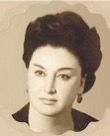
Shovkat Feyzulla qizi Alakbarova - an Azerbaijani singer, People's Artist of the Azerbaijan SSR (1959) was born on October 20, 1922 in Baku was born in1922 in Baku. Her mother was a professional tar player and her father, a labourer, was a folk music lover. As a child, Shovkat took up kamancha lessons. In 1937, she became one of the finalists at a contest held among amateur singers and judged by prominent Azerbaijani composers and musicians, such as Uzeyir Hajibeyov and Bulbul. She performed “Garabagh shikastasi” at the Azerbaijani State Opera and Ballet Theatre in Baku (which was her first stage performance) and was chosen by Hajibeyov to join the newly formed Azerbaijani State Choir, where Alakbarova started her professional career as a singer. As a teenager, she was vocally trained by mugham instructor Aghalar Aliverdibeyov and opera singer Huseyngulu Sarabski. At the early stage of her career, she mostly performed folk songs.
Beginning in 1945, she worked with the Azerbaijani State Philharmonic Society. In the 1950s, she was very recognized as the most popular Azerbaijani singer of the folk and composed songs. Most of Alakbarova's songs were in Azerbaijani language, however she also sang in Persian, Arabic, and Turkish. She toured over 20 countries in Europe, Asia and Africa. Three years before her death, in 1990, she went to Germany to receive medical treatment and at the same time to perform for the Azerbaijani emigrants. Shovkat Alakbarova, the outstanding master of the Azerbaijani performing arts of the 20th century, died on February 7, 1993. She was buried in Baku on the First Alley of Honor.
Suleyman Rustam
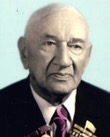
Suleyman Rustam (the real name is Rustamzadeh Suleyman Aliabbas oglu) – an Azerbaijani poet and playwright, a public figure was born on November 27, 1906 in the Novkhani village of Baku. Before the October Revolution of 1917, he studied at the Russian-Muslim school in Baku and worked at his father’s forge. Suleyman Rustam studied at the Industrial School named after N. Narimanov; in 1924 he transferred to a pedagogical technical school. From 1925, he is a head of the department of the literature in the central newspaper "Ganj Ishchi" ("Young Worker"). In 1923, his first poem was published in the journal “Maarif ve Medeniyet” (“Enlightenment and Culture”), then was published in the newspaper “Ganj Ishchi”. Since 1925 he is a student of the Eastern Faculty of Azerbaijani State University. In 1928 he was transferred to the faculty of literature and art of the First Moscow State University. After graduation he returned to Baku, and worked in the “Ingilab ve Medeniyet” magazine (“Revolution and Culture”), then in the literature and art department of the Central Committee of the Communist Party of Azerbaijan, in the years of 1937-1938 he worked as a director of the Azerbaijani State Drama Theater.
In 1941 he created a cycle of poems about South Azerbaijan "Tabriz poems". He is the author of the plays in verse about Gachak Nabi (an Azerbaijani national hero) and the libretto of the comedy about Azerbaijani village “Durna”. S. Rustam translated into the Azerbaijani language the works of I. A. Krylov, A. S. Griboyedov, A. S. Pushkin, N. A. Nekrasov, M. V. Isakovsky, and others. From July 1971 until the end of his life, he served as a Chairman of the Presidium of the Supreme Soviet of the Azerbaijan SSR. He was the deputy of the Supreme of the Council of the Azerbaijan SSR of 1-11 convocations (1938-1989). Suleyman Rustam died on June 10, 1989. He was buried in Baku in the Alley of Honor. The house, in Baku, where the poet lived has the memorial plaque reminding that here lived and died Suleyman Rustam. One of the streets in Baku was named after him.
Suleyman Vezirov
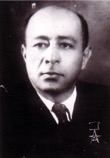
Suleyman Azad oglu Vezirov - one of the major engineers of the oil industry, Hero of Socialist Labour and distinguished scientist of Azerbaijan was born in Baku on November 18, 1910. In 1932, he graduated from the Azerbaijan Polytechnic Institute, Department of Mining. Since 1932, S. Vezirov served as a master, chief engineer, and in oil fields operation manager. In 1940-1942, he was chief engineer of "Azerneftkombinat", and in 1942-1946, he headed the Azerbaijan oil industry. S. Vezirov's outstanding talent was demonstrated during the Soviet-German war, as he was able to constantly supply the army with fuel and lubricants for years. It was a difficult time - the people and equipment were evacuated to the East, and oil production had to be maintained at a high level. Overcoming the difficulties, the oilmen of Azerbaijan produced 75 million tons of oil in 1941-1945, 22 million tons of petrol and other oil products, much overfulfilling the production plan. Therefore, he was awarded the title of Hero of Socialist Labour in 1944.
Vezirov governed the exploration, drilling, and commissioning of the petroleum fields, including the Buzovna-Mashtaga petroleum field (1945), organized the exploratory works for petroleum on the coastal shelf of the Caspian sea, and also the deep exploration of the petroleum fields in Turkmenistan (Nebitdag, Cheleken). Vezirov developed and implemented the single-pipe high-pressure sealed system for the collecting of petroleum and gas at the petroleum fields of Azerbaijan and Turkmenistan (1946). In 1946-1949, Vezirov headed the Main Office for the Oil Extraction on southern and western regions of the USSR within the Ministry of Petroleum Industry of the USSR, and was the Head of the "Turkmenneft" consortium (1949-53). He enjoyed the greatest respect in Turkmenistan. Vezirov was awarded the State Prize of the USSR (1951) for the exploration and discovery of the new oil field. In 1954-1957, Vezirov served as the Minister of the Petroleum Industry of the Azerbaijan SSR; in 1958-1959, the Deputy Chairman of the Council of Ministers of the Azerbaijan SSR; in 1959-1965, the Chairman of the National Economic Council of the Azerbaijan SSR; in 1965-1970, the Deputy Chairman of the Council of Ministers of the Azerbaijan SSR; in 1970-1973, the Deputy Chairman of the Presidium of the Supreme Soviet of the Azerbaijan SSR. Suleyman Vezirov died in Baku on July 2, 1973. He was buried in the first Alley of Honour.
Tahir Salahov
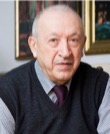
Tahir Teymur oglu Salahov - a painter, graphic and scenic artist, the People's Artist of the USSR, professor, the Academician of the Russian Academy of Arts, Laureate of the USSR State Prize (1968), State Prize of the Azerbaijan SSR, hero of the Socialist Labor was born on November 29, 1928 in Baku. He graduated from the Baku Art School in 1950, and in 1957 – from the Moscow State Academic Art Institute named after V. Surikov. He was a student of P. Pokarjevsky. From 1973 until the collapse of the USSR, he was first secretary of the Artists' Union of the USSR (1973 – 1992).
Tahir Salahov, a talented master of the brush, is a representative of the dramatic heroic line of the Azerbaijani art. He is choosing a sparing palette of contrasting red, black, light- and dark-grey tones and giving colored plains a decorative function. His composition “Women of Absheron” (1967) reflects the beauty and dignity of an Azerbaijani woman - the image of a mother and an employee. His later works like “Portrait of composer Kara Karayev” are more peaceful, lyrically contemplative and reflects the sharp psychological nature of the original work. This work by Salahov even at the end of the 20th century is the pinnacle of Azerbaijani portrait art. Eastern influences are more apparent in his work “Portrait of Dan” (1983, Azerbaijani State Art Museum). He is also the author of such works as an "Over the Caspian Sea"(1961), “Portrait of Shostakovich” (1976 Tretyakov Gallery, Moscow), “Portrait of Mstislav Rostropovich” (2000), “Repairmen” (1960), “Aydan” (1967) and several others.
The thematic gamut of T. Salahov is wide. He also produced expressive stage designs as “Aydin” of J. Jabbarli, “Koroglu” of Hajibeyov, and “Hamlet” of Shakespeare. Many of his most successful works are associated with his impressions of foreign countries (e.g. “Mexican Corrida”; 1969, Azerbaijani State Art Museum). The President of the Republic of Azerbaijan Ilham Aliyev awarded Tahir Salahov with the Order of Heydar Aliyev on November 27, 2008. Tahir Salahov is an active member of the European Academy of Sciences and Arts and an honorary member of the Association of German Artists. In 2012, his house-museum was opened in Icherisheher.
Tofig Ismayilov

Azerbaijani film director, screenwriter, prose-writer Tofig Huseyn oglu Ismayilov was born on April 6, 1939, in Baku. After graduating from the secondary school No. 190, he continued his education at the Acting faculty of Azerbaijan State Theatre Institute named after M. A. Aliyev in 1958-1962, and at the Directing faculty in 1962-1968. In 1968-1970, T. Ismayilov continued his education at the class of Tarkovski, in the Higher Directing and Scenarists courses for 2 years in Moscow in order to perfectly master the profession of film director. He worked at the position of the producer of feature films in the “Azerbaijanfilm” film studio named after J. Jabbarli since 1970. He worked as a teacher at the directing department of Azerbaijan State Art Institute named after M. A. Aliyev since 1971, and as the head of the department in 1988-1994. In 1994-2006, at the invitation of Mimar Sinan University of Fine Arts in Turkey, he worked in the position of professor at that educational institution. He was Advisor for cultural affairs in Istanbul Metropolitan Municipality. He worked as a professor at Azerbaijan State Art University since 2007 until the end of his life.
He started his film directing activity for the first time with “The stones of my city” film shot based on the music of F. Garayev. Later, he worked very productively in this field and shot 8 musical films. His film “Muslum Magomayev sings” (1971) achieved success not only in Soviet Union, but also in foreign countries, and successfully screened at the First Tehran International Film festival held in Iran. The films of “I compose a song” (1979), “Music teacher” (1983), “The last spectacle” (1989), “Prima” (1992), “A life with songs” (1991), “Memories about Muslum Magomayev”, “Mestro” (2011) are of this kind. T. Ismayilov also shot films on the theme of youth and children. The films of “Mother’s lamp” (1970), “Cherry tree” (1972), “The boys in our neighbourhood” (1973), “The drivers’ footsteps” (1974), “I’m going towards the volcano” (1977, the first feature film with 3 series shot in Azerbaijan), “Mud volcanoes of Azerbaijan” (1979), “Chovgan game” (1939), “Lahij-1” (1979), “Painful roads” (1982), “Special condition” (1986), “Surayya” (1987), “Come” (2007), “Lahij-2” (2013) hold special place in our national cinema art. The film “Painful roads” (shot based on “Malikmammad tale”) is one of the best 14 soviet films chosen by American filmmakers for screening in the USA in 1989. In 1994-2006, when working in the Republic of Turkey, T. Ismayilov deeply promoted and introduced the culture of Azerbaijan and our national cinema art. T. Ismayilov is the author of three-volume fundamental encyclopedia “History of the cinema of Turkic republics” (2001). During the years of working in Turkey, T. Ismayilov was the initiator and organizer of Turkic World film festivals, Turkic World Theatre festival (1,2,3), Turkic World Opera days (1,2), Turkic World Contemporary Literature days, Gara Garayev, Uzeyir Hajibayli, Rasul Rza, Bakhtiyar Vahabzada, Adil Iskandarov, Anar, Chingiz Aytmatov and etc. days from the series of stars in the Turkic World Stars. Along with film directing activities, he wrote scenarios of television programs for children and was the author of many plays and books for radio, television and theatre. His first story “White towel” was published on “Goyarchin” (“Pigeon”) magazine in 1962. “Hunters”, “Picture-theatre”, “Picture-film”, “Dream of Sevinj”, “Toothache”, “A cat going to cinema”, “Cinema art of Turkic peoples” (2009) and about 200 scientific-publicistic articles of him were published in local and foreign press. T. Ismayilov, who engaged in filmmaking, scientific-publicistic and pedagogical activities for more than 55 years, was awarded the title of Honoured Artist of the Republic of Azerbaijan in 1987, and People’s Artist of the Republic of Azerbaijan in 2008. He was conferred the degree of professor in 1992 and Doctor of Science in 2008, and was a Presidential scholar. He died on March 25, 2016 in Baku.
Tofig Guliyev

Tofig Alakbar oglu Guliyev was born on November 7, 1917, in the city of Baku. In 1934, he entered the Azerbaijan State Conservatoire and studied at two faculties simultaneously: in the piano class of I. S. Aysberg and conductor class of Shtrasser. In the class of the musical genius Uzeyir Hajibeyov he was introduced to the basics of the folk music and secrets of the art of mugham. In 1934-1935, Tofig Guliyev was involved in collection of folk music and dances under the leadership of Bulbul. In 1935, he recorded mugham "Rast" and "Segah Zabul" from the play of famous tar player Mirzamansur Mansurov. His conductor's activity started in 1935, when he worked at the Azerbaijan State Drama Theater. In 1936, Uzeyir Hajibeyov initiated to send a group of talented youth to study at the Moscow State Conservatoire. Tofig Guliyev was among them. On his entering exam, he impressed H. Neuhaus with his piano playing, and was invited to study in Neuhaus’s class. In 1937-1939, he worked as a piano player at Alexander Zhfasman’s band. On September 7, 1941, the State Variety Orchestra administered by T. Guliyev performed the very first concerto at the Baku Philharmonic, putting a start to the jazz movement in Azerbaijan.
In 1941, most of the members of his Jazz orchestra had to go to the war, and they organized the 402nd Transcaucasia infantry division orchestra, raising the battle spirit of soldieries in Rostov, Krasnodar, Mozdoks. In 1941, he got involved in composing film music. His first film "Sabuhi" was very successful and very soon composing the film music became his main activity as a composer and conductor. During his life, he composed music to 40 Azerbaijani films. In 1946-1947, T. Guliyev worked very closely with Rashid Behbudov and wrote many of the songs that Rashid performed. Together they had sensational performances in many cities of former Soviet Union. In 1948, he continued his study at Moscow State Conservatory. In 1951, having graduated from the Moscow Conservatoire he was recommended to the post-graduate studies. In 1954-1958, T. Guliyev was engaged in teaching activity in the opera and orchestra classes, as well as knowledge of instruments at the Azerbaijan State Conservatoire. In 1958-1959, he was an artistic administrator and in 1961, the director of the Azerbaijan State Philharmonic Society named after Muslim Magomayev. In 1964, Tofig Guliyev was honoured with the title of People's Artist of Azerbaijan and the Order of "Istiglal" (1997). He served as the Secretary of the Union of Composers from 1969, and later he was elected as a First Secretary of the Union and held this position until 1979. In 1974, Tofig Guliyev was awarded a State Prize for composing the music for film "Nasimi", the script of which was written by Hasan Seyidbeyli. In 1990, Tofig Guliyev was elected as a Chairman of the Union of Composers and served in this position until the end of his life.
Tofig Guliyev died on October 4, 2000. Music School No12 and one of the streets in Baku were named after Tofig Guliyev. Tofig Guliyev’s son Eldar Guliyev is a well-known film director, People's Artist of Azerbaijan, USSR State Prize Laureate. Eldar Guliyev is the President of the Guild of Professional Filmmakers. He was awarded the Orders of "Glory" (2001) and "Honour" (2011) and international prize "Gizil Chinar" (2018).
Tofig Tagizadeh
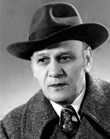
Tofig Mehdigulu oglu Taghizade was born in Baku on February 7, 1919. After graduating the filmmaking department of the Moscow All-Union State Institute of Cinematography in 1953, he started his work activity at the “Azerbaijanfilm” studio. The first film made by Tofig Taghizade was “Meeting”. This film that was produced in 1955, had bound him to cinema forever. About 40 years of his life he devoted to cinema. Taghizade's films comprehensively reflect the history, culture and lifestyle of the Azerbaijani people. Benefiting from the progressive experience of the world cinematography in creative ways, Tofig Taghizade as a talented director brought important innovations to the cinematography of Azerbaijan and left a deep mark on the history of our culture. Films on various subjects thoroughly reflecting the rich cultural and spiritual heritage of the Azerbaijani people with high aesthetic criteria such as “On distant shores”, "Arshin mal alan" (“The cloth peddler”), "Seven sons of mine", "Dede Gorgud" and many others were included in the gold fund of not only national but also world cinematography. Tofig Taghizade also made an outstanding contribution in filming and personnel training in Azerbaijan.
Tofig Taghizade was the artistic director of the theatrical studio operating under the "Azerbaijanfilm" studio for a season. T. Taghizade was the director of such famous films as "Meeting" (1955), "On distant shores" (1958), "A true friend" (1959), "Mateo Falcone" (1959), "I Will Dance! (1962), "Arshin mal alan" (“The cloth peddler”) (1965), "I wasn't a beautiful girl” (1968), "Seven sons of mine" (1970), "Flamingo is a golden goose" (1972), "Dede Gorgud" (1975), "Pomegranate grove" (1978), "Grandfather of my grandfather’s grandfather" (1981), "Summer season" (1985). The 14th film by Tofig Taghizade remained unfinished. In 1976, he was awarded the honorary title of People's Artist of the Azerbaijan SSR. According to the Decree of the President of the Republic of Azerbaijan, the 100th anniversary of the birth of Tofig Taghizade was celebrated in 2019. Tofig Taghizade died on August 27, 1998.
Togrul Narimanbeyov
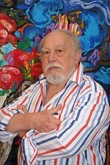
Togrul Narimanbeyov, a famous Azerbaijani artist was born on August 7, 1930 in Baku. He graduated from the Azerbaijani State Art School named after A. Azimzadeh in Baku (1950) and from the Lithuanian State Institute of Arts, Vilnius (1955). In 1950 he began to participate in the many art exhibitions. He was elected to be a member of the Union of Artists of Azerbaijan (1955), awarded the title of Honored Artist of the Azerbaijan SSR (1964), the title of the People’s Artist of the Azerbaijan SSR (1967), winner of the State Prize of the USSR (1980) and the Azerbaijan State Prize (1974), awarded the title of the People’s Artist of the USSR (1989), the Orders of "Istiglal" (2000) and Honor (2010).
He is best known for his portraits, landscapes and still lives but actually he is quite successful in different genres including monumental painting, book illustration and theatre design. Among his early works are “Fishermen of the Baltic” (1955), “Dawn at the Caspian” (1957), “For Better Future” (1959), “Stronger than a Storm” (1960), “Happiness” (1961) (which are in the Tretiakovskaya Gallery in Moscow), “Polish Girl” (1961), “Sattar Bahlulzadeh” (1965), “Still Life”, “Pomegranates” (1957), “Pomegranates” (1959), “Pomegranates and Pears” (1961) that are part of the collection of The State Museum of Oriental Art in Moscow.
Narimanbeyov uses realistic images and color contrast with domination of conventionality and decorative elements. Not the minor field of his activity is monumental paintings among which such works as hall panel in the Puppet Theatre in Baku (1974) and murals in Moscow Hotel in Baku (1978) are to be mentioned. Among the notable examples of Narimanbeyov's successful work in theatre design are staging of the several outstanding performances including Fikret Amirov's “Nasimi Dastani” (“Nasimi Saga”) (1973), “Min Bir Geja” (“Arabian Nights”) ballets and “Gobustan Kolgalari” (“Shadows of Gobustan”) ballet by Gara Garaev, (1978). Togrul Narimanbeyov passed away on June 2, 2013 in Paris. He was buried in Passi cemetery, located in the center of Paris.
Tokay Mammadov

Tokay Habib oglu Mammadov – the eminent sculptor-monumentalist of Azerbaijan, the People’s Artist of the Azerbaijan SSR, the Honoured Art Worker, corresponding member of the USSR Academy of Arts, personal pensioner of the President of the Republic of Azerbaijan and Professor- was born on July 18, 1927 in Baku. He was the son of the first woman-sculptor of Azerbaijan- Ziver Mammadova and Habib Mammadov - candidate of technical sciences. Having graduated from the Azerbaijan State Art School, in 1945 he was admitted to the sculpture department of the Leningrad Academy of Arts named after I. Repin. Upon graduation from the institute he began teaching activity in the State Art School named after A. Azimzadeh (1951-1958). During 1966-1988 he worked as a staff member of the Painting Department at the Azerbaijan State University of Culture and Arts, in 1988-1992 the chair of the Sculpture Department and in 1992-2001 a professor of this department. Since 2001 and for the rest of his life, Tokay Mammadov was a professor of the Sculpture Department at the Azerbaijan State Academy of Arts. Since 1952, Tokay Mammadov has held various management positions in the Union of Artists of Azerbaijan over the years, where he was elected the Chairman of the Union of Artists of Azerbaijan (1970-1972). Since 1975 he was a corresponding member of the USSR Academy of Arts. He was conferred the USSR State Prize (1978) for a monument to Mashadi Azizbayov in Baku (1977). He was given the State Premium of the Azerbaijan SSR (1982) for sculptural monument to the XI Caucasian Red Army in Baku (1980). He was conferred a silver medal of the USSR Academy of Arts for a monument to Fuzuli in Baku (1962). In addition to all, Tokay Mammadov was also awarded with “Honor badge”, “Peoples Friendship” and “Glory” orders.
Tokay Mammadov was one of the first Azerbaijani sculptors who began to work with wood and since then it became his favourite material. He is the first of sculptors, who received the title of Professor and had a personal workshop in the Academy of Arts, which was established in 1991 on his initiative. Over the decades, he trained many young talented sculptors. There are hundreds of portraits in portraits gallery from marble, bronze, plaster materials. He had created the bust portraits of U.Hajibeyov, people’s painter R. Mustafayev, women painter V. Samedova, writer S. Rahimov, painter L. Karimov, orientalist Mirza Kazim bey, U. Hajibeyov, long-liver Sh. Muslumov, legendary scout M. Huseynzadeh, artist M. Ibrahimov, maestro Niyazi, poet S. Rustam, surgeon M. Javadzadeh, composer Kh. Mirzazadeh, the Polish composer F. Chopin and the Austrian composer A. Mozart and many others. T. Mammadov is an author of some gravestone monuments, too. He created gravestone monument of musician, scientists, calligrapher and painter Mir Mohsun Navvab in 1956 in Shusha. The sculptor also had created the gravestone monument of the founder of the first professional vocal art of Azerbaijan- Bulbul, the monuments of Azerbaijani poet Imamaddin Nasimi.
The creativity work of the master who made a significant contribution to the development of the national monumental art had always been at the core and had always been appreciated. According to the order of Ilham Aliyev – the President of Azerbaijan, he became a member of Heraldry Council at the President of the Republic of Azerbaijan, since February 7, 2006. He was conferred a memorial medal “For great services to the Academy in honor of the 250th anniversary” in honor of the 250th anniversary of Russian Academy of Arts. He was also awarded the Honorary diploma of the President of Azerbaijan for merits in development of Azerbaijani school of sculpture, the Orders “Shohrat” (2002) and “Sharaf” (2012). Tokay Mammadov passed away on 2 January 2012 and was buried at the Alley of Honor.
Vagif Mustafazade

Vagif Aziz oglu Mustafazade –a jazz composer and pianist, honored artist of Azerbaijan, laureate of the State Prize of Azerbaijan - was born on March 16, 1940 in Baku. In the years 1957-1963 Vagif studied at the Baku Music School named after A. Zeynalli. In 1963 in Tbilisi, he assembled a trio "Caucasus" and performed at the domestic jazz festivals. In 1969-1970 he was the music director of the State Pops Orchestra of Azerbaijan, headed by the variety ensembles “Leyli” (1970-1971), “Sevil’ (1972-1977). In 1977 he organized the jazz ensemble "Mugham" and achieved wide recognition as a representative of ethno-jazz. The most famous compositions are “Oil Rocks” (1966), “Aziza” (1969), “Only six bars” (1971), “Memories of Tbilisi” (1977), “The Caspian Sea” (1979), “Waiting for Aziza” (1979), as well as a Concert for piano and orchestra and film music. He is a winner of the festivals “Tallinn-66”, “Tallinn-67”, the Baku festival “Jazz-69”, the All-Union jazz festival in Donetsk in 1977, the jazz festival “Tbilisi-78”, which brought him the title of the best pianist. Vagif Mustafazade participated in the closed International Jazz Composition Contest in Monaco (1979) and won the first prize. In 1972, V. Mustafazade wrote his most famous song called “Farewell”. The song became the main hit in Azerbaijan and brought the international fame to him. V. Mustafazade died in 1979 in Tashkent and was buried in Baku. In 1989, the house-museum of V. Mustafazade was opened in Baku.
Vagif's daughter from his first marriage Lala Mustafazade was born in 1965; she studied at the secondary specialized music school named after Bulbul and at the Uzeyir Hajibeyli State Conservatory. Lala currently lives in Paris and she works in the prestigious Grand Opera in Paris. His daughter from the second marriage Aziza Mustafazade was born on December 19, 1969 in Baku. She is a famous pianist, jazz performer. At the age of 17 Aziza won the first prize at the Thelonious Monk International Jazz Competition in Washington. In 1991, Aziza recorded his debut album, which is called – “Aziza Mustafa Zadeh”. For her second album “Always”, Aziza Mustafazade was awarded the highest music prize in Germany - the Academy Voice Award, as well as the Echo Sony Award. On May 27, 2018, Aziza Mustafazade was awarded the title "People's Artist of Azerbaijan".
Vahid Alekberov
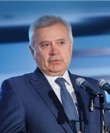
Vahid Alekberov was born on September 1, 1950 in Razin settlement (currently Bakikhanov) of Baku city in the family of oil worker. His father Yusif Alekberov was Azerbaijanian, but his mother Tatyana Fyodrovna was from tribes of Russian Cossacks. His father died when Vahid was a 3-year-old boy. V. Alekberov began his career as a student at the Azerbaijan Petrochemical Institute named after M. Azizbeyov (currently the Azerbaijan State Oil and Industry University) as the operator of oil and gas in the “Kaspormneft”. He graduated from the Institute in 1974 specialized “mining engineer technology and complex mechanization of oil and gas fields”. He worked as a shift supervisor engineering and technology service number 2 software “Kaspmorneft” in 1977-1978. He received Master’s Degree of oil and gas in 1978 and became Senior engineer, deputy chief of the oil department “Kaspmorneft” in 1978-1979. He was as a senior engineer of the oil field number 2 of NGDU “Fedorovskneft” PO “Surgutneftegas” Glavtyumenneftegaz of Ministry of Petroleum Industry of the USSR in 1979, he worked as a chief of the oil number 2 NGDU “Fedorovskneft” in 1979-1980. He worked as a chief engineer, chief of the Central Engineering and Technology Service NGDU “Kholmogorneft” PO “Surgutneftegas” in 1980-1981. He was a Chief Engineer, Deputy Chief NGDU “Lyantorneft” PO “Surgutneftegas’ in Tyumen region in 1981-1983. He headed NGDU “Povhneft” in 1983-1985. He worked as the first deputy general director of “Bashneft” 1985-1987. He occupied the post of General Director of “Kogalymneftegas” in 1987-1990. He was Deputy Minister of Oil and Gas Industry of the USSR in 1990-1991. He was the First Deputy Minister of Oil and Gas Industry of the USSR in 1991.
Vahid Alekberov formed LUKOIL in 1991 as a state concern, which combined three oil producers (Langepasneftegaz, Uraineftegaz, and Kogalymneftegaz) and two oil refineries - Permnefteorgsyntez and Volgograd Refinery. He has been President of the “Lukoil” oil company from 1993 to the present time. As of 2018 V. Alekberov is rated by Forbes magazine as the sixth richest person in Russia with a net worth of $17.2 billion and the 74th richest person in the world. He is married to business woman Larisa Alekberova. They have son Yusif, who is keen on natural resourses. Yusif graduated from the Gubkin Russian State University of Oil and Gas in 2012. V. Alakbarov is PhD in economics and a full member of the Russian Academy of Natural Sciences. He was awarded orders “Friendship” (2010) of the Russian Federation, “Glory” (2000) and “Honour” of the Republic of Azerbaijan, “Dostık” (2010) of the Republik of Kazakhstan and “Dustlik” of the Republic of Uzbekistan.
Vasif Adygezalov

Composer, public figure, honored art worker, professor, people’s artist of Azerbaijan Vasif Zulfugar oglu Adygezalov was born on June 28, 1935 in Baku into the family of the famous mugham master Zulfugar Adygezalov. Primary music education he received in the music school at the Conservatory (piano class). In 1953, Vasif entered the Azerbaijan National Conservatory named after Uzeyir Hajibeyov. He studied there in two specialties at once - on composition class by Gara Garayev and piano - by Simuzar Guliyeva. In 1959, V. Adigozelov graduated from the Azerbaijan National Conservatory named after U. Hajibeyov, on specialty piano and composition. Vasif Adygezalov began his career in 1958 as a musical editor of the Committee for Television and Radio Broadcasting. Later he worked as the executive secretary of the Union of Composers, the chief musical editor of the State Philharmonic Society named after M. Magomaev, director of the music school named after A. Zeynalli. Since 1972, Vasif Adygezalov worked as a teacher at the Azerbaijan National Conservatory. In 1990, he was elected as a First Secretary of the Union of Composers of Azerbaijan, and in 1973 he was awarded by the title of “Honored Art worker”. In 1988 he received the title of “People’s Artist of the Republic”. In 1989 he became a professor in 1990 – the State Prize Winner.
Vasif Adygezalov is the author of three symphonies, the opera “The dead men”, four operettas, five symphonic poems, a concerto for violin with a symphony orchestra, 2 piano concertos accompanied by a symphony orchestra and an orchestra of Azerbaijani folk instruments, songs, romances, music for cinema and drama performances. Along with the three symphonies, which are the main works of the composer in this field, he wrote: the symphonic poem “Africa Fights” (1961), the vocal symphonic poem “Glory to the Russian People” (1964) (co-author R.Mustafayev). One of his most attractive compositions is the Piano Concerto with Symphony Orchestra, written in 1961. The concert attracts with artistic and semantic content, visual sensation of breathing of our modernity, its acute intense pulse. In 1995 he was awarded by the Order of “Shohrat” (Glory), and in 2005 - the Order “Istiglal” (Sovereignty). Vasif Adygezalov died on September 15, 2006 in Baku. He was buried on the 1st Alley of Honor.
His son, People’s Artist of Azerbaijan, Professor Yalchin Adygezalov is an Azerbaijani conductor and music teacher. Yalchin Adygezalov was born on November 4, 1959 in Baku. He began to study music under the guidance of his father. In 1982, he graduated from the piano faculty of the Baku Music Academy (class of Prof. R. Atakishiyev). In 1984-1989 he studied under maestro I. A. Musin at the Leningrad Conservatory in the specialty opera and symphony conducting. In 1991-1992 he interned at the Vienna Music Academy under Professor Karl Esterraicher. From 1991 to 1998 he was an art director and main conductor of the Azerbaijan State Symphony Orchestra named after U. Hajibeyov. Since 2000 he worked as a professor in the department of conducting of the Baku Music Academy. Since 2001, Maestro Adygezalov was the conductor of the Istanbul State Opera and Ballet. Y. Adygezalov performed with many famous musicians, including M. Rostropovich, N. Petrov, S. Stadler, I. Monigetti. Together with the Azerbaijan State Symphony Orchestra and the Bolshoi Symphony Orchestra named after Tchaikovsky they recorded eight CDs which released in the United States, Russia, England and Turkey.
Veli Akhundov
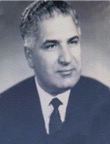
Physician-scientist, Doctor of Medical Science, Academician of the Azerbaijan National Academy of Sciences Veli Yusif oglu Akhundov was born in Baku on May 14, 1916. V. Akhundov graduated from the Azerbaijan State Medical Institute in 1941. Veli Akhundov was a military doctor in 1941-1949, a scientific worker and later a director at the Institute of Hygiene. In 1949-1952, he was a Deputy Health Minister of Azerbaijan SSR, and in 1952-1953, he headed the Baku region health department. In 1953-1954, V. Akhundov served as the deputy head of the departments of administration, trade, finance and planning of the Central Committee of the Communist Party of Azerbaijan. Akhundov was a Health Minister of Azerbaijan SSR in 1954-1958. He was elected one of the secretaries of the Central Committee of the Communist Party of Azerbaijan in February 1958, and later, in July 1958, he was appointed a Chairman of the Council of Ministers of the Azerbaijan SSR. He had held that public position until July 1959. In 1959-1969, he served as the First Secretary of the Central Committee of the Communist Party of Azerbaijan.
V. Akhundov defended his Ph.D. thesis in 1956 and the Higher Attestation Commission of the USSR conferred on him the Doctor of Philosophy degree and in 1964 the Doctor of Medical Science. On July 14, 1969, he was relieved from the position of First Secretary. At the meeting of the Bureau of the Central Committee of the Communist Party of Azerbaijan held under the chairmanship of Heydar Aliyev, medical and domestic services were maintained, which were used by V. Akhundov as the First Secretary. V. Akhundov was elected an academician of the Azerbaijan Academy of Sciences in 1969. In 1969-1972, he served as Vice-President of the Academy of Sciences of Azerbaijan SSR and headed the healthcare department of the Academy. Akhundov was the director of the Institute of Virology, Microbiology and Hygiene named after G. M. Musabeyov in 1972-1986. Veli Akhundov died on August 22, 1986 in Baku. He was buried in the Alley of Honour.
Yuli and Mikhail Gusmans

Yuli and Mikhail Gusman brothers were born in Baku in an intelligent family. Their father Solomon Gusman was a doctor in the Caspian flotilla and Sabunchu Hospital. Their mother Lola Barsuk worked as a Head of the Department of foreign languages at the Institute of Foreign Languages (now Azerbaijan University of Languages), and vice-rector of the University for 17 years.
Yuli Gusman was born on August 8, 1943. He is a director, playwright, organizer of the cinematic process, television presenter, Honoured Artist of Russia and National Actor of Azerbaijan. Yuli Gusman is a member of the Russian Jewish Congress and he is the longest-serving juror of KVN (Club of the Cheery and Resourceful) team. In 1960, he graduated from school No.160 in Baku and in 1966, from the Azerbaijan Medical University. In 1970, he earned a master’s degree in Psychology and Psychiatry. He wrote a research paper to defend a thesis for another medical degree, but chose not to do so after being admitted to the Higher Film Directing Courses at Goskino. Upon graduating in 1976 he worked at Azerbaijanfilm where he created and directed stage performances and was the director of the satirical newsreel Mozalan. In the 1970s and the 1980s he worked as manager and director of the Azerbaijan State Theatre of Musical Comedy and the Song Theatre. Since 1988 he has lived in Moscow. In 1965–1972 he was head of Baku’s KVN team. He introduced the uniform practice for all KVN teams. In 1993 he was elected to the State Duma of the first convocation (1993–1995). In 1988–2002 Gusman was chairman of the Cinematography Centre (Dom Kino) in Moscow. He is director of following films: “On one fine day” (1977), “Cottage for a family” (1978), “Don’t be afraid, I am here for you” (1981), ‘Ice floe in the warm sea” (1986), “The Soviet period park” (2006) and “Don’t be afraid, I am here for you! 1919” (2011). He was awarded with the “Glory” (2013) and “Friendship” (2018) orders of the Republic of Azerbaijan. He is married to Valida Gusman, a French language teacher and lecturer in the Slavic Languages Department at Georgetown University.
His brother Mikhail Gusman was born on January 23, 1950. He is a journalist, translator, TV and radio host. Mikhail Gusman graduated from the Azerbaijan University of Languages in 1970 and the Journalism Department of the Baku Higher School of Political Science in 1973. In 1973–1986 he was Deputy Chairman of the Committee on Youth Organizations of the Azerbaijan Soviet Socialist Republic, in 1986–1991 Head of the Information Department and Head of the Press Centre of the USSR Committee on Youth Organizations, in 1991-1995 Director of the Infomol General Directorate for Information Cooperation. In 2000, he was appointed First Deputy Director General of ITAR TASS. Mikhail Gusman devoted his book entitled “Life formula: my father and my mother” to his parents. He was awarded “Friendship” (2010) and “Glory” (2013) orders of the Republic of Azerbaijan. He is also laureate of the international award “Golden plane” by the Heydar Aliyev Foundation (2018).
Yalchin Efendiyev

Yalchin Rafig oglu Efendiyev was born on January 25, 1971 in Baku. He was awarded the II degree diploma in the All-Union Mathematical Olympiad when he was studying at secondary school No.82 in Baku . In 1993, he graduated with honors diploma from M. V. Lomonosov, Moscow State Universiy’s Mechanics and Mathematics faculty. He received a PhD in mathematics and computer science from the California Institute of Technology in 1999. He completed a two-year postdoctoral program at the Institute for Mathematics and its Applications at the University of Minnesota (USA). In 2001, Y. Efendiyev was assistant professor at the Texas A&M University and in 2008, he became professor. The same year, he was interim director (and then director) in the Institute for Scientific Computation at the Texas A&M University. In 2012, Y. Efendiyev was appionted the head of the Computational Science Department at the Texas A&M University.
Yalcin Efendiyev is editorial board member of various scientific-research magazines. He is the author of more than 100 publications in well-known research journals and is the organizer of numerous conferences and seminars in the United States, the Middle East and Europe. Y. Efendiyev is a chief organizer of the annual meeting of İnterPore (İnternational Society for Porous Media) and co-organizer of the conference devoted to the multidimensional solution methods of wave equations, the Obervolfax seminar and other events. Y. Efendiyev is the owner of numerous grants, including the US National Science Foundation, Energy Department, and US Army Grants. His research is funded by several federal and industrial organizations. He has received grants from several oil companies in the field of modelling his reservoir tank. Y. Efendiyev, who won the competition in 2012, organized the Strategic Research Initiative (SRI) Center for Numerical Porous Media (NumPor) at the King Abdullah University of Science and Technology (KAUST, Saudi Arabia). This center combines scientists of different areas of porous media. Yalchin Efendiyev is a leading research scientist in the sphere of multidimensional modeling methodologies. There are many references to his scientific findings and the results of his research are used in modeling various application issues.
Zeynab Khanlarova

Zeynab Yahya gizi Khanlarova - a Soviet and Azerbaijani singer (soprano), People’s Artist of the USSR was born on December 28, 1936 in Baku. She studied at school number 161 in Baku. Later, Z. Khanlarova enrolled in the Baku Pedagogical School named after M. A. Sabir to the pre-school department. Having finished school, she was admitted in Baku Musical School named after A. Zeynalli. Her mugham teacher became the outstanding khananda (folk singer) Seyid Shushinski. He was teaching her music and behavior on the stage. Z. Khanlarova achieved her greatest success in the pop music genres. A number of folk songs created by such composers as T. Guliyev, A. Malikov, R. Mirishli, A. Taghiyev, E. Sabitoglu, G. Garayev, F. Amirov, O. Kazimov and others were performed by her and gained instant popularity. The creativity of Z. Khanlarova found favor also outside of Azerbaijan. Over the years of her career, the singer successfully visited the republics of the former Soviet Union, the Czech Republic, Slovakia, Romania, Hungary, Poland, France, Spain, Canada, Italy, Sweden, Switzerland, Denmark, Turkey, Irag, Afghanistan, Japan, USA, Yemen, Syria, Lebanon, Kuwait and other countries. Mughams played a significant role in the repertoire of Z. Khanlarova. Being a khananda she professionally performed the “Chargah”, “Makhur-Hindi”, “Gatar”, “Kharij Segah”, “Humayun”, “Bayaty-Kurd”, “Shahnaz”, “Bayati-Shiraz”, “Shur” and “Dilkesh” mughams. Being a soloist of the Azerbaijan State Academic Opera and Ballet Theater Zeynab Khanlarova played Leyli’s part in “Leyli and Majnun” opera, Asli’s part in “Asli and Karam” opera of Uzeyir Hajibeyov, Arabzangi’s part in Magomayev’s “Shah Ismayil” opera, Senem’s part in “Galin gayasi” (“Bride’s rock”) opera of Shafiga Akhundova and others.
Zeynab Khanlarova was the deputy of Supreme Soviet of Azerbaijan SSR (XI-XII convocations) and the National Assembly of Azerbaijan (I-IV convocations). In 2010, she had been elected as a deputy of the National Assembly of Azerbaijan from the 50th (Gobustan-Khizi-Guba) constituency. Zeynab Khanlarova was awarded the Order “Istiglal” (Independence) (2006), an honorary diploma of the President of the Republic of Azerbaijan (2011) in recognition of her service in promotion of Azerbaijani culture and Heydar Aliyev Order (2016).
